

ATARI VCS/2600 Controllers
Updated 11-22-2025
All the controllers listed below use the standard 9-pin D-sub connector, and are compatible to some extent with the Atari VCS/2600 system, including those specifically made for other systems.
For information on how to fix Atari-made controllers, see this section of the Atari VCS/2600 FAQ.
See this article on how to make your own USB controllers.
If you have any additions, suggestions, or corrections, please email me.
|
|
|
| Action Hi-Tech Hi-Score-MK1 Released in Australia. |
|
| Action Hi-Tech Hi-Score-MK2 Released in Australia. |
|
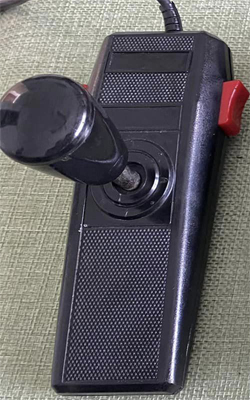 |
Action Hi-Tech Hi-Score-MK3 Released in Australia. Standard controller for Action Hi-Tech's Hi-Score-MK3 system. Knockoff of Atari's Pro-Line controller and identical to Kingsway Video Computer Console controller and Funvision's Home Computer Game controller. The sticks can be unscrewed. |
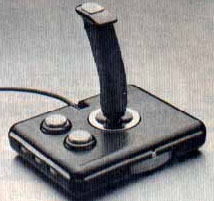 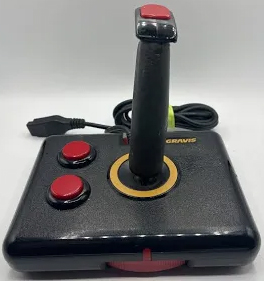 |
Advanced Gravis Computer Technology Ltd. - MK VI A somewhat rare version of the more-popular PC analog version. An 8-position joystick with centering tension control and 3 independent fire buttons, as well as a one-year warranty. Retailed for $39.95. Made in both black and clear cases. It seems the clear version was made specifically for Sega systems, although both apparently work the same. |
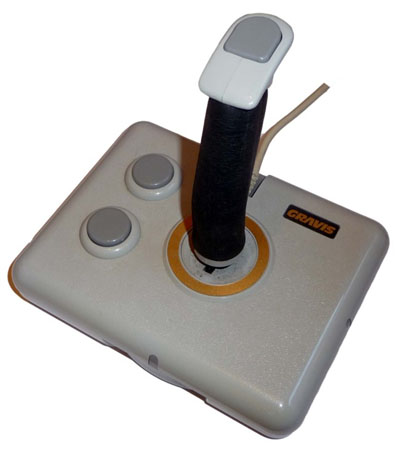 |
Advanced Gravis Computer Technology Ltd. Gravis MouseStick Designed for the Amiga and Atari ST computers. Can be used as either a joystick or a mouse. |
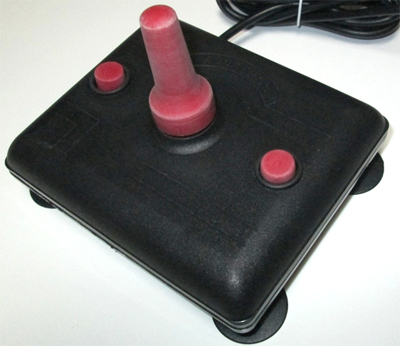
|
Alberici Albatros At least 3 different versions exist. |
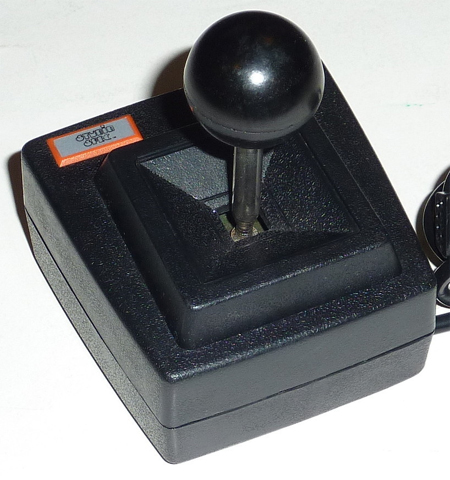 |
Alliance Res Studio Spec A ball-top joystick that uses leafswitches for the directions, and a micro contact switch for the fire button, which is on the front side of the base. |
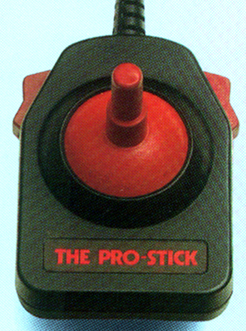 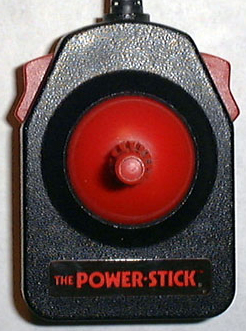
|
Amiga The Power-Stick Originally called The Pro-Stick, this tiny controller fits in your palm and has a stick you can maneuver easily with two fingers. According to company literature, this was first shown at the Atlanta Toy Fair in 1983. Featuring a 1.5" handle and dual fire buttons (for either left or right-handed players) and offering a "completely new precision switching technology", the company's director of marketing, Don Reisinger, claimed it provided true 8-way response, unlike typical controllers that only use 4 switches. Surprise - the new switching technology is the same used in Atari's 5200 controllers (using a carbon dot membrane against copper traces). Advertised for $9.95 each or $19.95 for a pair. |
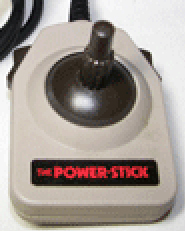 |
Amiga The Power-Stick - 3201 One of at least 7 controllers in Amiga's "Power-Stick" series. This was designed especially for the Commodore VIC-20 and C-64 computers and is identical except for its colors. |
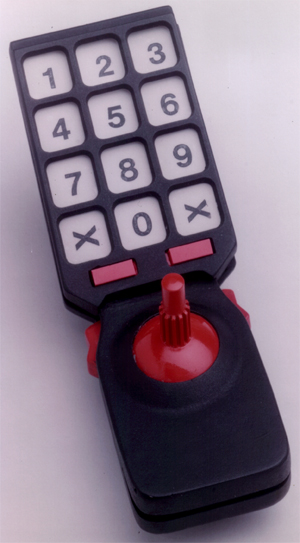 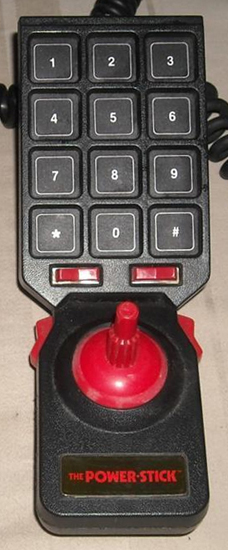 |
Amiga The Power-Stick Specially designed for the Intellivision and Colecovision. The photo on the left is from a company press kit. |
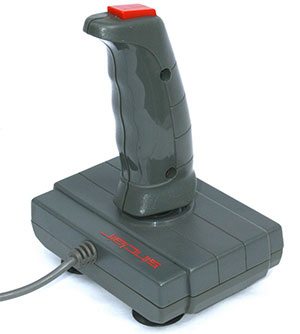 |
Amstrad
Sinclair SJS1 Designed for the Sinclair Spectrum +2, +2A and 3 computers (SJS stands for Sinclair Joystick System). These computers came with joysticks ports which were rewired so as not be compatible with the Atari CX-40 standard forcing owners to purchase Amstrad's joysticks. Released in 1987. |
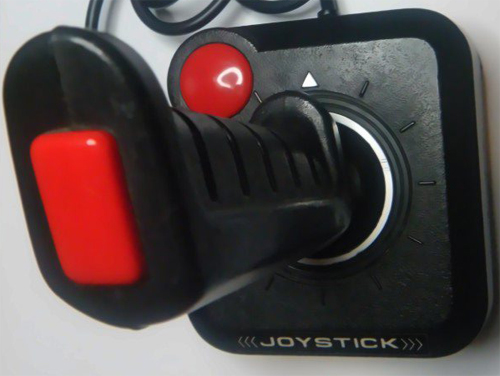 |
Amstrad SJS2 A rewired, physical clone/relabel of Bit Corp. Joystick/Gemini Rapid Fire/Gemini Turbo Gemstik. Designed for the Sinclair Spectrum +2, +2A and 3 computers (SJS stands for Sinclair Joystick System). These computers came with joysticks ports which were rewired so as not be compatible with the Atari CX-40 standard forcing owners to purchase Amstrad's joysticks. |
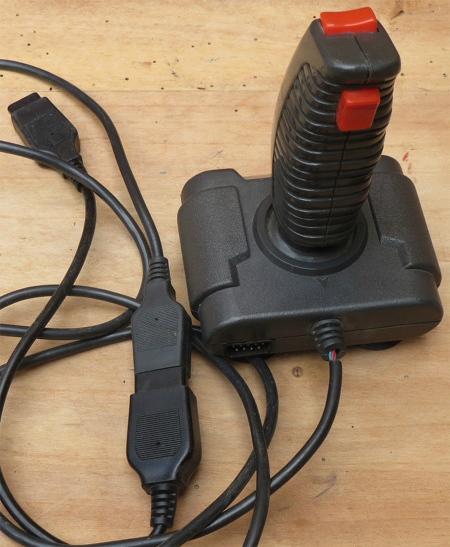 |
Ancien joystick A 2-button controller with a base similar to a Spectravideo QuickShot II 318-102. |
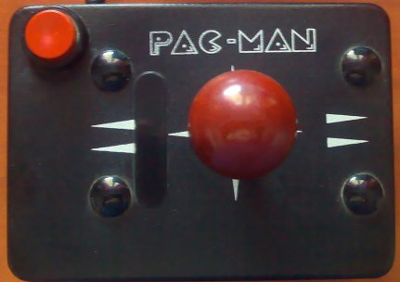 |
Aneroussis Control Pac-Man Sturdy microswitch controller made in Greece. |
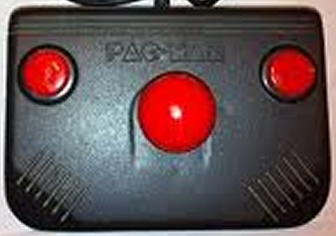 |
Aneroussis Control Pac-Man Sturdy 2-button microswitch controller in a plastic shell made in Greece. |
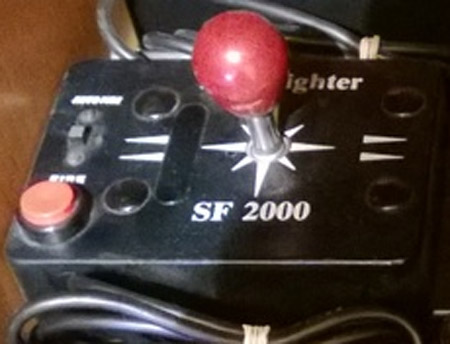 |
Aneroussis Control Starfighter SF 2000 Sturdy microswitch controller in a plastic shell made in Greece that features auto-fire. Identical to the Superstick 2000 except for having a larger fire button. |
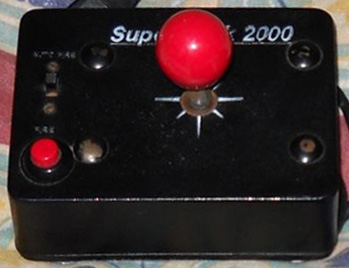 |
Aneroussis Control Superstick 2000 Sturdy microswitch controller in a plastic shell made in Greece that features auto-fire. Identical to the Starfighter SF 2000. |
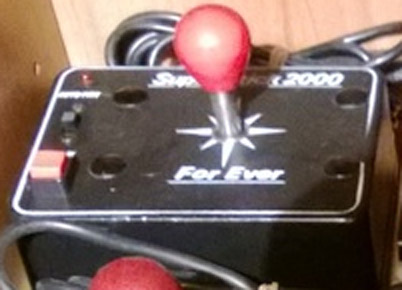 |
Aneroussis Control Superstick 2000 For Ever Sturdy microswitch controller in a plastic shell made in Greece that's identical to the Superstick 2000 except for having a square fire button and an LED next to the auto-fire switch. |
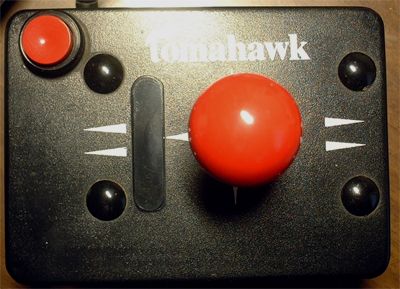 |
Aneroussis Control Tomahawk Sturdy microswitch controller in a plastic shell made in Greece. |
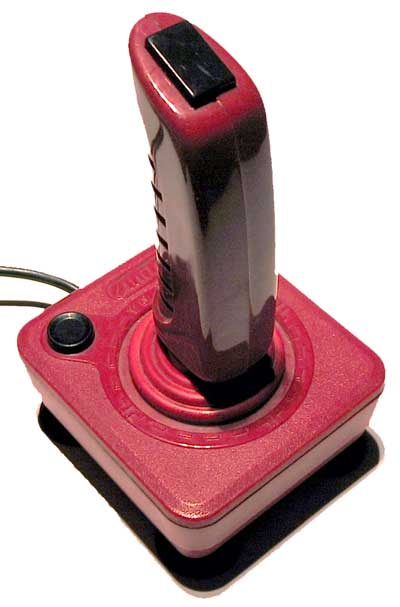 |
Anitech joystick The base looks identical to Atari's standard VCS CX40 joystick, except it's red (with a black button), and has "Anitech" in raised letters at the top. The stick itself is similar to a Quick-Shot and others, with a square fire button on top. The rubber boot around the base of the stick is actually part of the plastic shell. |
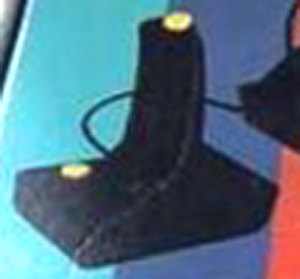 |
Apple Vision joystick Standard controller for the Apple Vision Video Game system. |
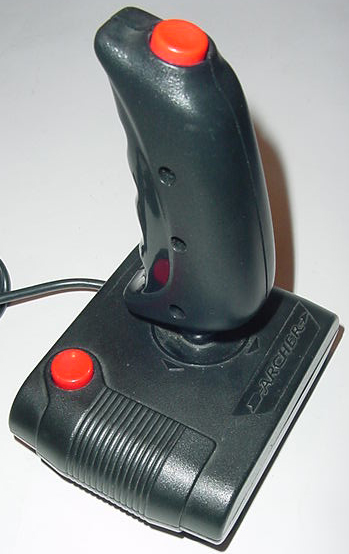
|
Archer Deluxe Competition Joystick - 270-1701 Identical to the Spectravision/Spectravideo Quick-Shot. This was sold in Radio Shack. |
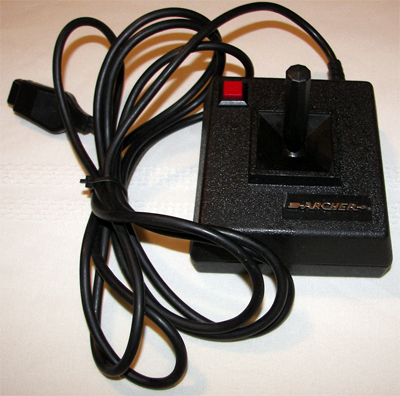 |
Archer joystick - 270-1702 Identical to Kraft's Maze Master joystick. |
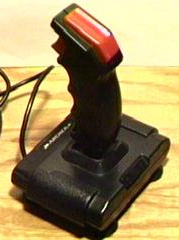 |
Archer Super Deluxe Competition Joystick - 270-1703 Uses microswitches and has auto-fire capability. Came in 2 different boxes. |
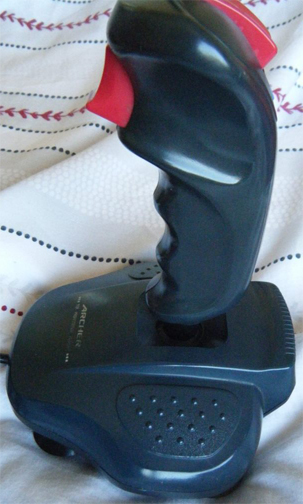
|
Archer joystick
270-7003 Identical to Bondwell's Quickshot Python 1 Turbo III and Python 1M (inside and out), with 2 fire buttons, auto-fire, a 4-position operating mode selector, and suction cups on the base). Bottom of case notes it was manufactured in China for Intertan. |
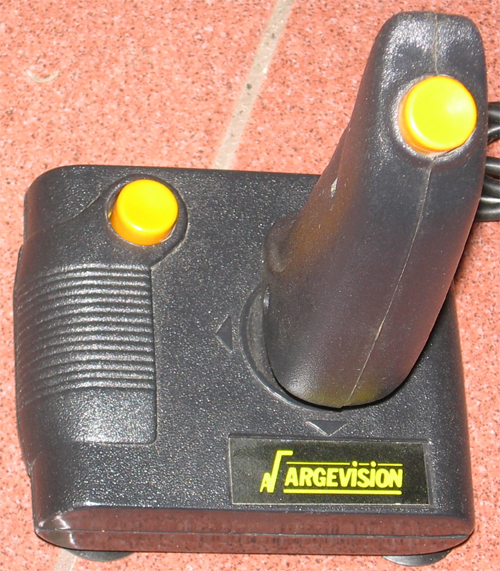 |
Argevision (model
unknown) Identical to Spectravision/Spectravideo's Quick-Shot joystick. |
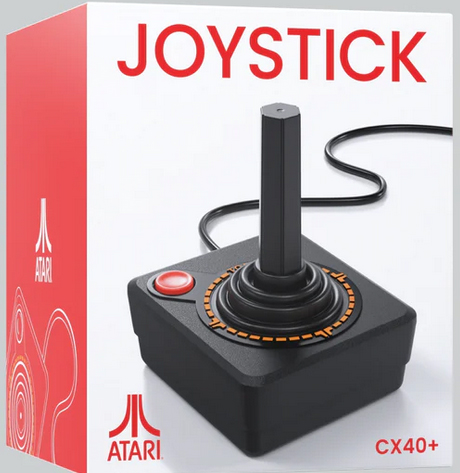
|
Atari Interactive
CX40+ joystick Standard controller for the 2600+. Remake of the standard CX40 joystick. While it looks similar externally, internally it uses the same conductive membrane switches that were pioneered with the 5200 controllers. The fire button is the only mechanical switch. The top half of the shell is comprised of 2 parts that are hot-glued together. |
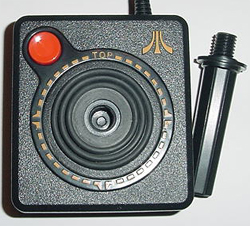
|
Atari Flashback2 Remakes usually involve an attempt to correct previous flaws and weak points, not a chance to introduce new ones. While the switch contacts are an improvement, the stick itself is made to be detached (unscrewed), as if they wanted players to lose or break them. But why? To save a few pennies with shipping? The stick itself is comprised of 2 pieces. The stick can be separated from its base, and once you lose either part, you might as well thrown the whole thing out. Even worse, guess where these sticks typically break? If the top of the stick doesn't detach from the base, it will (very) likely break off at the base. And since its release in 2005, a great many gamers have reported them breaking at the controller's "Achilles' heel". Another problem with these is the plug fits too tightly in the controller ports on real VCS systems - so much that there's a good chance you'll crack the solder joints for the port from connecting/disconnecting them. This is what happened when someone who wasn't a gamer or an engineer tried to design products for gamers. |
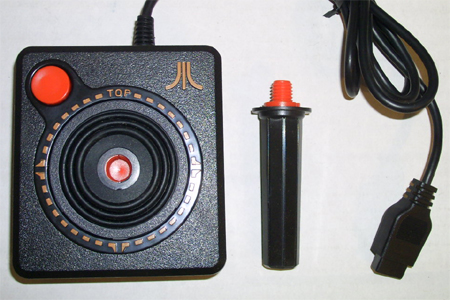
|
Atari Flashback 3 Not much difference between this and the Flashback 2 model. The Atari logo on the top and bottom is now the original version, the threaded parts where the handle screws into the base are now red, the pcb is slightly different where the wires are soldered, and the button membrane is now white instead of gray. The joystick handle also has a looser movement to it, but otherwise it's the same, flawed controller. |
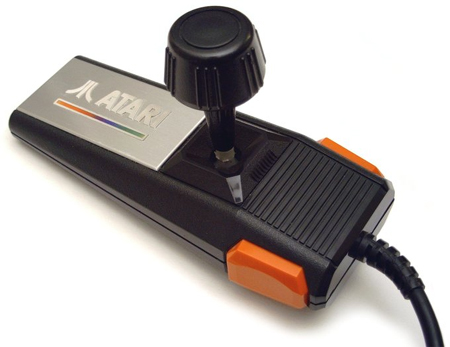
|
Atari Pro-Line joystick - CX24 Originally one of Atari's "Pro-Line" Advanced Controllers. A company flyer notes it was coming in July 1983, with a photo showing "Atari Series 2000 Pro-Line Joystick" molded into the top of the plastic base (LINK). However, this version was never released; they were released with a slight variant of it - in place of the molded plastic was a metal plate on the base with "Atari" on it, and with packaging similar to that used for the XL computers. When the 7800 was first released in 1984, each button worked independently for games that required 2 fire buttons. |
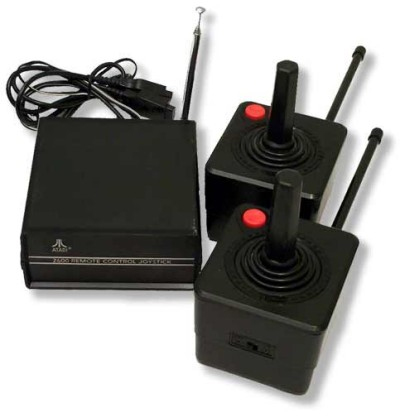
|
Atari Remote Control Wireless joysticks - CX42 One of Atari's "Pro-Line" Advanced Controllers, but not made by Atari. These are identical to the Game Mate 2 controllers sold by Cynex. A company flyer notes they would be available April 1st, 1983. Similar in style to the standard CX40 joysticks but with a huge base, and each one requires a 9v transistor battery. Antennas encased in plastic transmit a signal to a black box which hooks into the system's joystick ports. Maximum range is approx. 20 feet. First announced in the January 1983 issue of Electronic Games with a suggested retail price of $100. Later featured in Atari's 1983 "2nd Half" press kit. Advertised in the V2N4 issue of Atari Age for $69.95. |
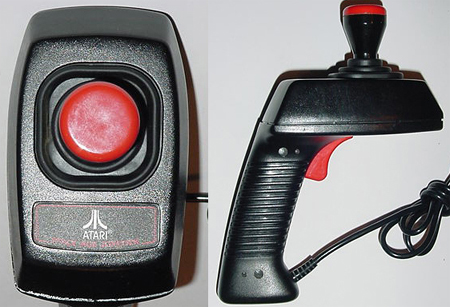 |
Atari Space Age Joystick - CX43 One of Atari's "Pro-Line" Advanced Controllers. A compact stick resembling the handle of a pistol with a small knob-like stick at the top. There's only 1 fire button (the red top on the joystick is not a button). This stick looks identical to Milton Bradley's proposed HD2000 joystick. It's possible that Atari got the stick as part of their dealings regarding the unreleased Voice Commander Module. A company flyer notes it was available July 1983. |
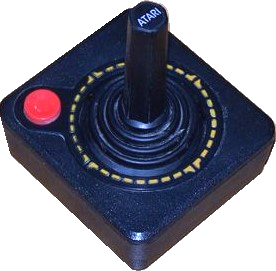 |
Atari Standard Joystick - CX10 This is the type of controller most familiar to people, featuring one (and only one) red fire button. A brilliantly-designed controller by Steve Bristow (patent 4,124,787). The original version, which was only made for the 2600's debut year (1977) uses heavy springs with all the contact switches, giving it a much looser feel than the more-common CX40 sticks. They also don't say "TOP" in the dotted outline around the stick, and the top of the stick is recessed to hold a small "ATARI" hex-shaped plate (there was also a "SEARS" button for the Tele-Games system). |
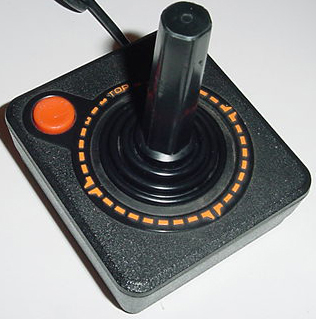 |
Atari Standard Joystick - CX40 This is the far more common version, featuring a more cost-effective (ie cheap) design by James C. Asher (patent 4,349,708). This was sold separately in several different box styles. A 3rd version of this venerable controller was also made for the Atari XE version which is molded in gray plastic, though the boot (stick handle) is still black. Original retail price $9.95; later $10.95/pair.
|
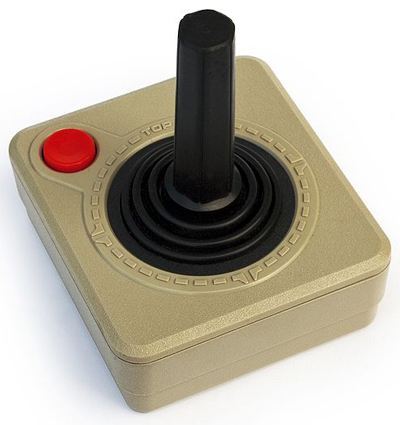 |
Atari Standard Joystick - CX40 "XE" A 3rd version of this venerable controller was also made for the Atari XE version which is molded in gray plastic, though the boot (stick handle) is still black. |
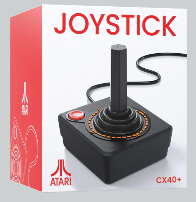 |
Atari Standard Joystick - CX40+ Similar to the original Atari Standard CX40 joystick, but more stiff and harder to use. Included with the 2600+ system. Retail price $24.99. |
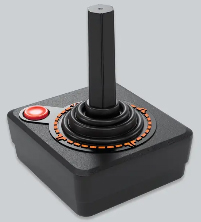 |
Atari Standard Joystick - CX40+
wireless Wireless version of the CX40+ joystick. Retail price $34.99. |
 |
Atari Standard Joystick - CX40+ "PAC-MAN
Edition" Same as the wireless controller for the 2600+ system, and with the same stiffness problem, but a colored variation with the added detail of a decal on top of the joystick. This one features a Pac-Man icon. Retail price $39.99. |
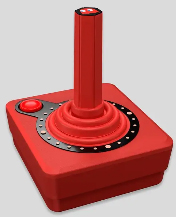 |
Atari Standard Joystick - CX40+ "Ghost
Edition - BLINKY" Same as the wireless controller for the 2600+ system, and with the same stiffness problem, but a colored variation with the added detail of a decal on top of the joystick. This one features a Blinky icon. Retail price $39.99. |
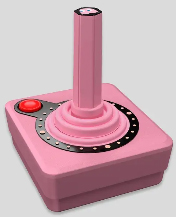 |
Atari Standard Joystick - CX40+ "Ghost
Edition - PINKY" Same as the wireless controller for the 2600+ system, and with the same stiffness problem, but a colored variation with the added detail of a decal on top of the joystick. This one features a Pinky icon. Retail price $39.99. |
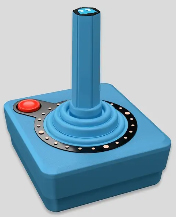 |
Atari Standard Joystick - CX40+ "Ghost
Edition - INKY" Same as the wireless controller for the 2600+ system, and with the same stiffness problem, but a colored variation with the added detail of a decal on top of the joystick. This one features a Inky icon. Retail price $39.99. |
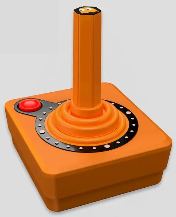
|
Atari Standard Joystick - CX40+ "Ghost
Edition - CLYDE" Same as the wireless controller for the 2600+ system, and with the same stiffness problem, but a colored variation with the added detail of a decal on top of the joystick. This one features a Clyde icon. A manufacturing error with this particular variation had joysticks shipped in a color closer to yellow instead of orange. Retail price $39.99. |
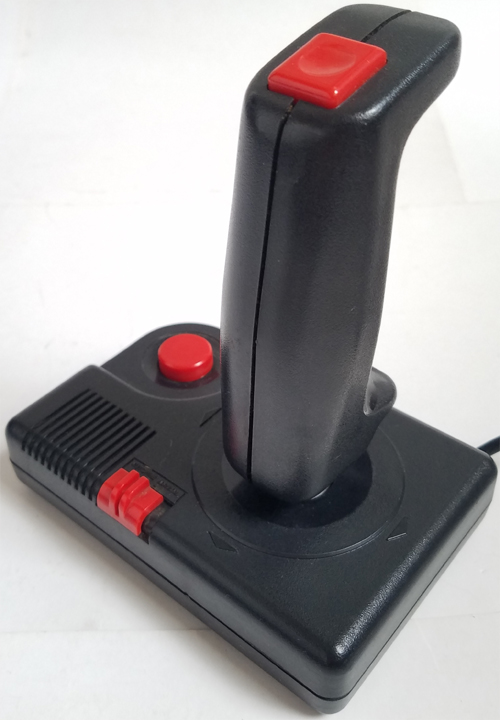
|
Avantec
Joystick
Controller - JY-106 Features 2 fire buttons and auto-fire. |
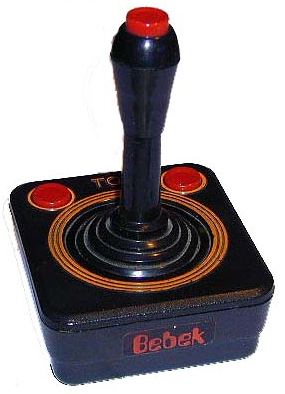 |
Bebek joystick Similar to the Philips Joystick but with the stick having an actual 3rd fire button. The "TOP" lettering and rings are painted but there's no directional arrows on the ring. |
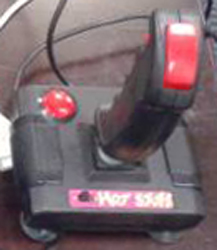
|
Beeshu Hot Stuff A 4-button joystick that comes in black, pink, dark blue, light blue, green, and yellow and features auto-fire. The base looks similar to a QuickShot II. |
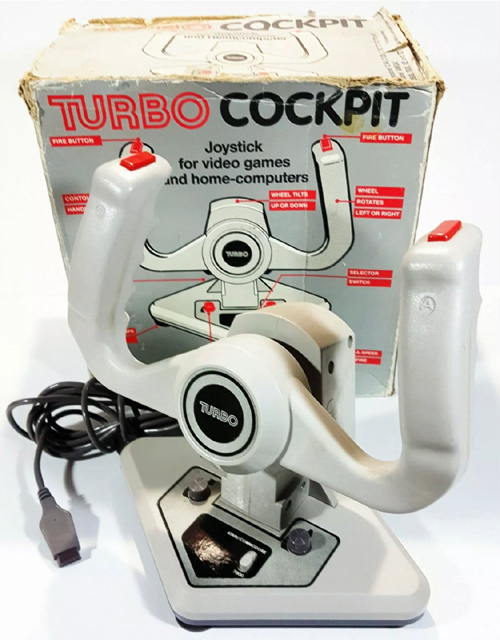 |
Beeshu
Turbpo Cockpit A yoke-styled controller with 2 fire buttons (marked A and B), with each having its own variable auto-fire. There's also a switch for 7800 compatibility. |
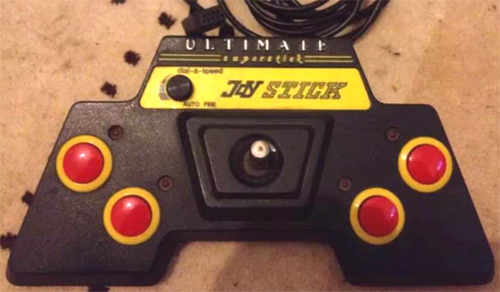 |
Beeshu Ultimate Superstick Joy Stick Features 2 pairs of buttons (marked A and B) and a variable auto-fire. |
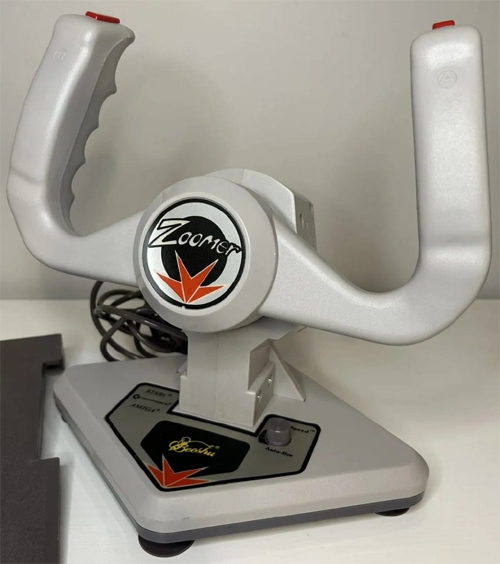 |
Beeshu
Zoomer A yoke-styled controller with 2 fire buttons (marked A and B) and a variable auto-fire. |
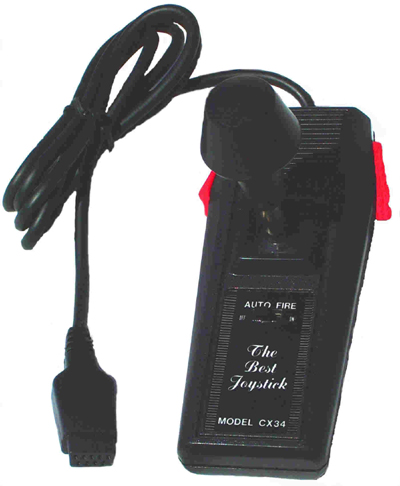 |
Best Electronics The Best Joystick - CX34 Identical to Telegames' Super Deluxe joystick and features auto-fire. |
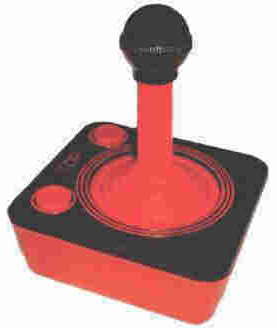
|
BP Electronics joystick - V-8801 Similar to the Bebek joystick but having 2 fire buttons on the base and a ball-top handle. |
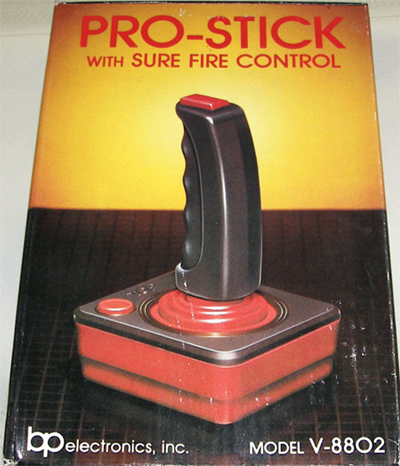
|
BP Electronics, Inc. Pro-Stick - V-8802 Similar to BP's joystick but with a larger handle that includes another fire button. Features "sure fire control", which might be in reference to it having 3 fire buttons. |
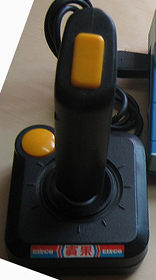 |
Bit Corp. joystick Identical to the Gemini Turbo Gemstik Joystick. Standard controller for the Amigo system. |
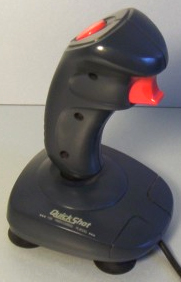 |
Bondwell Quickshot Apache 1 QS-131 A unique Cobra head-like controller with 2 fire buttons, a start button, and a turbo (auto-fire) button. |
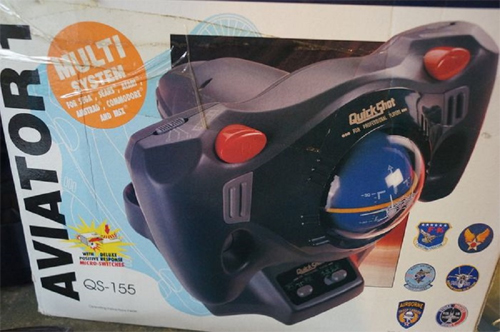 |
Bondwell Quickshot
Aviator 1 QS-155 Has a cable that plugs into both controller jacks and a player 1 or 2 select switch. An aircraft control-style yoke with altitude/level indicator, 4 fire buttons, and 2 dual-speed turbo (auto-fire) select switches. Micro-switches are used. |
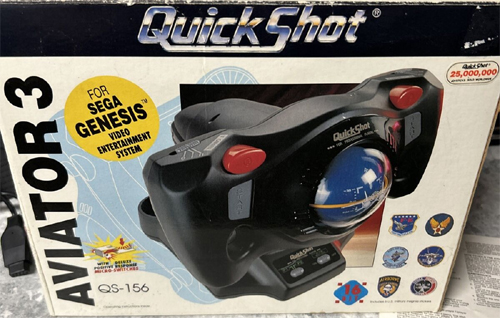 |
Bondwell Quickshot
Aviator 3 QS-156 Same as the Aviator 1 with the addition of a slow motion switch (for Sega Genesis games). |
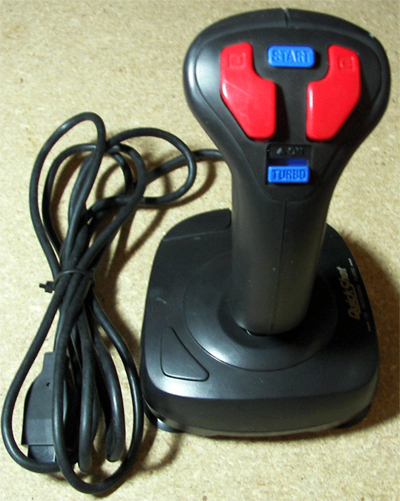 |
Bondwell Quickshot Eagle 1 A unique Cobra head-like controller with 2 fire buttons, a start button, and a turbo (auto-fire) button. |
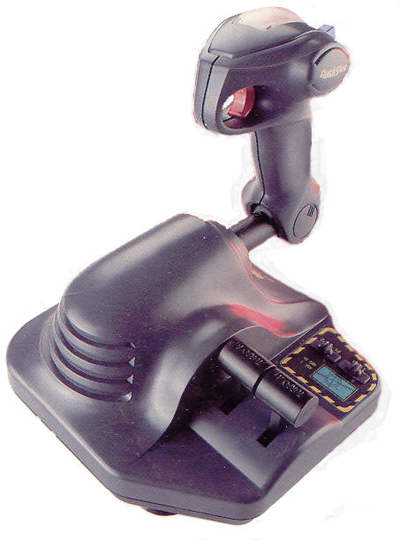 |
Bondwell QuickShot Intruder 1 - QS-149 Features auto-fire. |
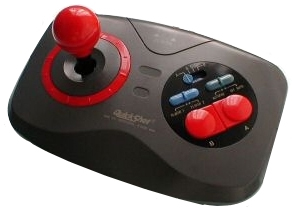 |
Bondwell QuickShot Maverick - QS-128F |
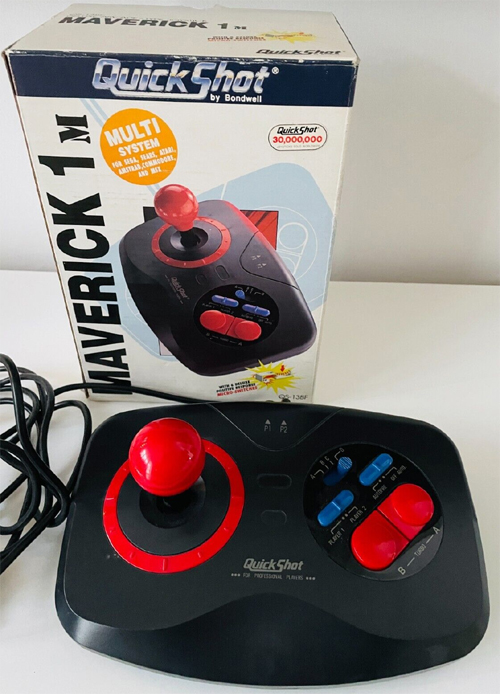
|
Bondwell QuickShot Maverick
1M - QS-138F Features 2 fire buttons, auto-fire, and 4-position operating mode selector. |
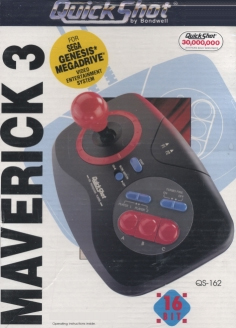 |
Bondwell QuickShot Maverick 3 - QS-162 |
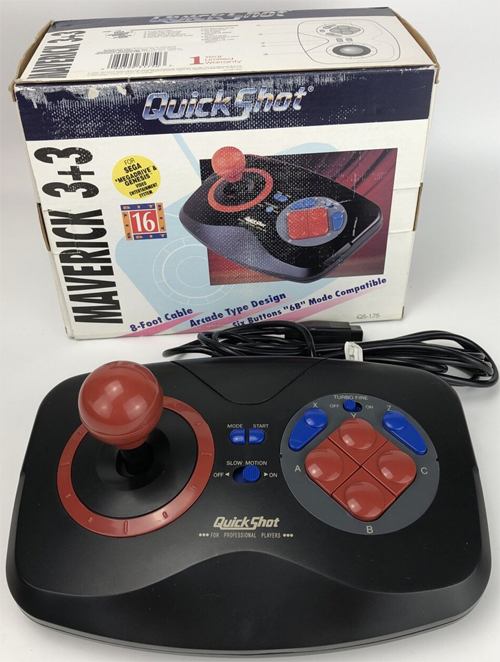 |
Bondwell QuickShot Maverick 3+3
|
| Bondwell QuickShot - QS-129F A joypad controller that resembles a handle bar. |
|
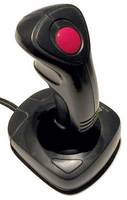 |
Bondwell QuickShot - QS-131 Similar to the QS-130F except the fire button is round, and it lacks auto-fire. |
| Bondwell QuickShot - QS-138F Joystick that plugged in to both ports and allowed 2 players to use the same controller. |
|
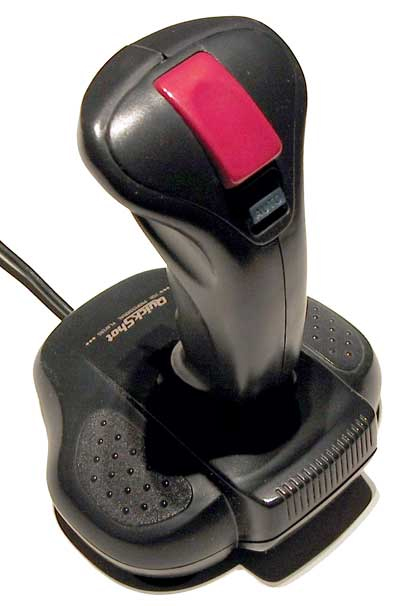
|
Bondwell Quickshot Python 1 Turbo III QS-130F Identical to Archer's 270-7003. Features "BioGrip control and deluxe digital response" (um, ok), with 2 fire buttons, auto-fire, a 4-position operating mode selector, and suction cups on the base. It use silicone dome switches with conductive carbon pads. A switch on the bottom determines what system it's configured for (A - Atari/Commodore, B - MSX, C - Amstrad, D - Sega). |
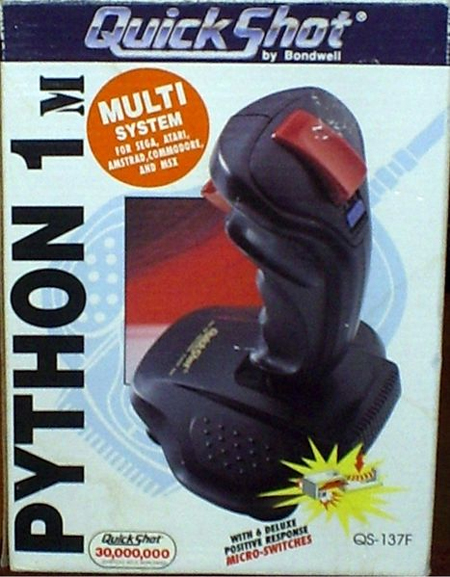 |
Bondwell Quickshot Python 1M QS-137F Identical in appearance to Bondwell's Python 1 Turbo III and Archer's 270-7003, except for using bare microswitches. Features 2 fire buttons, auto-fire, a 4-position operating mode selector, and suction cups on the base. The "M" in the name denotes it's compatible with multiple systems. A switch on the bottom determines what system it's configured for (A - Atari/Commodore, B - MSX, C - Amstrad, D - Sega). |
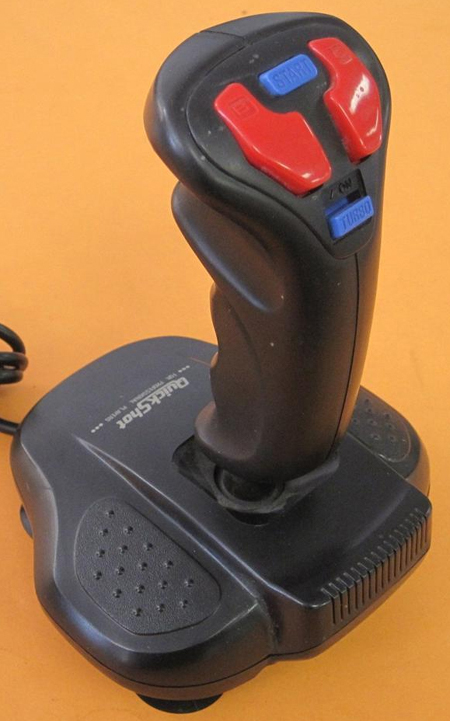 |
Bondwell Quickshot Python 3 QS-135 Similar to the Python 1 except for having more thumb buttons. Designed specifically for the Sega Genesis. |
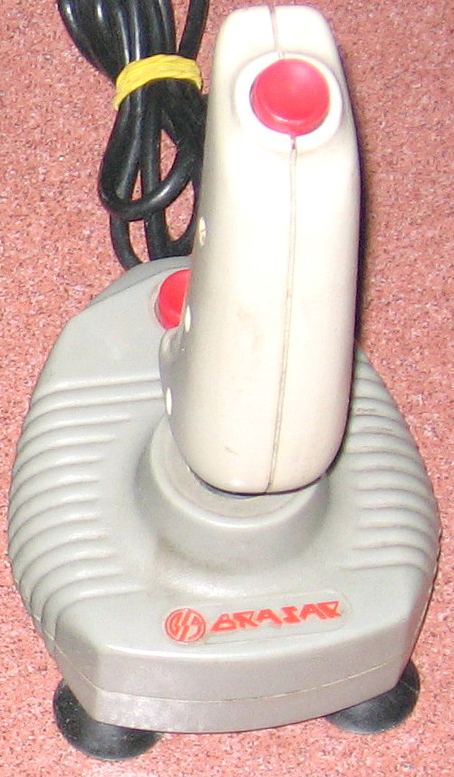 |
Brasar
Brasvision Standard controller for the Brasvision system. It's a copy of Spectravision/Spectravideo's Quick-Shot 318-101 except for being white. |
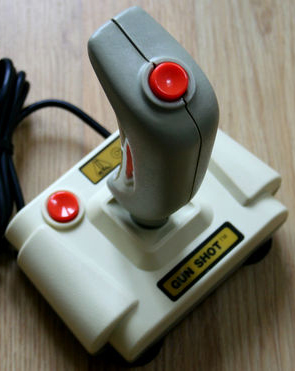 |
C&L Gun Shot Looks similar to a QuickShot. |
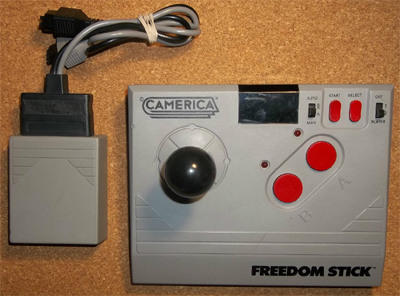 |
Camerica Freedom Stick Wireless joystick that was also compatible with the NES and SMS. |
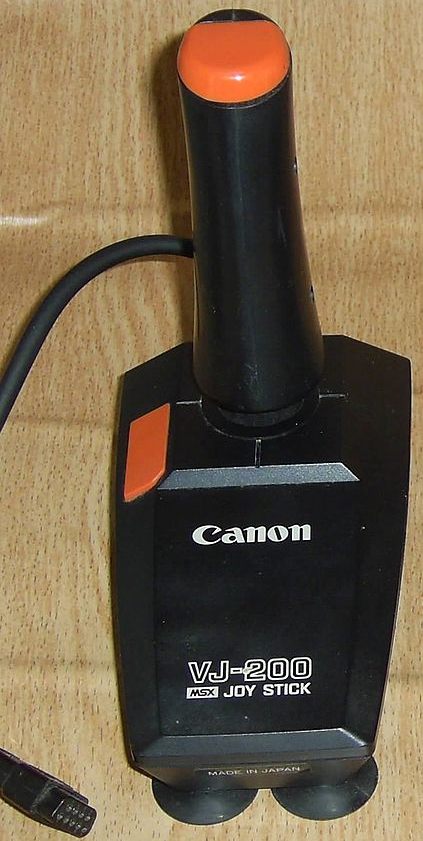 |
Canon MSX Joy Stick VJ-200 Marketed for use with the MSX HX-10 computer. This was designed by several different manufacturers under different names, model numbers, and colors (Canon, Fujitsu, Gradiente, Panasonic, Hitachi, Mitsubishi, Sanyo, Toshiba, Victor).
|
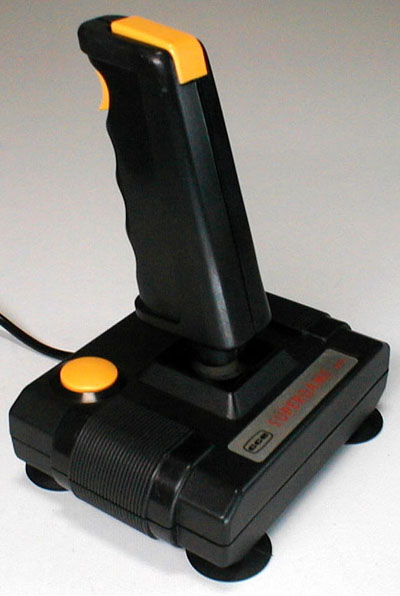 |
CCE Supergame Pro Nearly identical to the Commodore VG-115 joystick but without auto-fire. |
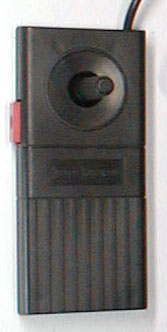 |
CCE VG 3000 joystick - JS 1500 Standard controller bundled with the Supergame VG 3000 system. Similar to the Coleco Dual Command and Gemini controllers except w/o the paddle. |
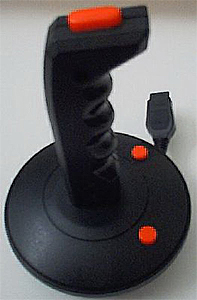
|
Championship Electronics MiniChamp - JC-351 Similar to the Super Champ. Designed for gamers with small hands, featuring 3 fire buttons (2 on the base and 1 on the stick) and a 4-1/2 foot retractable cord. Made specifically to be used in conjunction with the Champ Keypad Adapter (CA-340) for use with the Colecovision. Originally sold for $12.95. A variant exists with a red base and yellow fire buttons. |
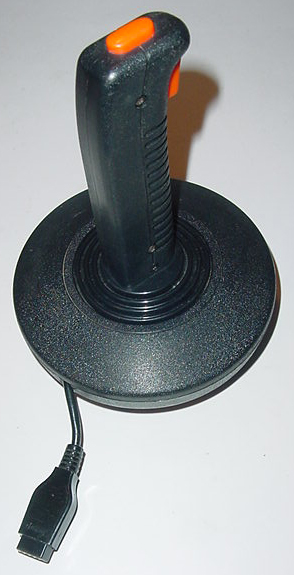
|
Championship Electronics Super Champ - JC 250 Features 2 fire buttons, a swivel base with suction cups, and a 10' retractable cord. The company sponsored the Electronic Olympiad Decathlon contest (Electronic Games, January 1984 (pg. 83). Retail price $16.95. |
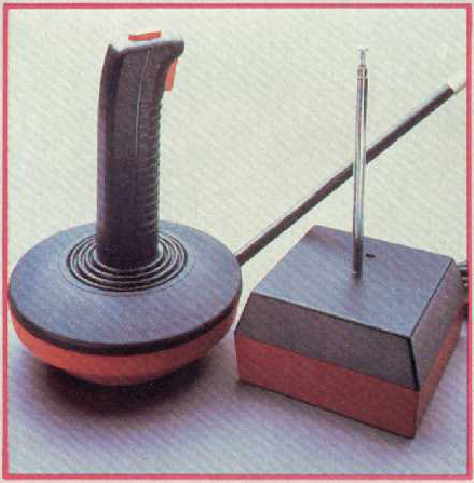
|
Championship Electronics Remote Champ
- RC-350A Wireless version of the SuperChamp controller, renamed the Freedom Fighter. Note the base of both are red. The company claims it's the first remote control joystick with instant response. Retail price $69.95. |
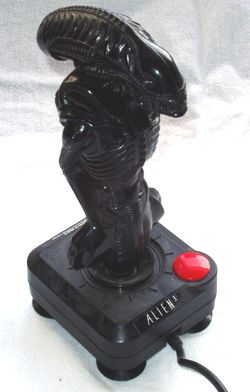 |
Cheetah Marketing Alien 3 An Annihilator variant with "ALIEN 3" in raised silver lettering at the top and a stick in the shape of H.R. Giger's Alien. Released in 1990. |
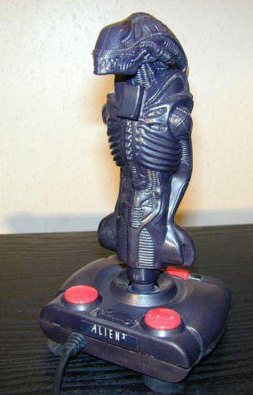 |
Cheetah Marketing Alien 3 A Cheetah 125 variant with "ALIEN 3" in raised silver lettering at the top and a stick in the shape of H.R. Giger's Alien. There's also 2 switches, with one possibly being for auto-fire. Released in 1990. |
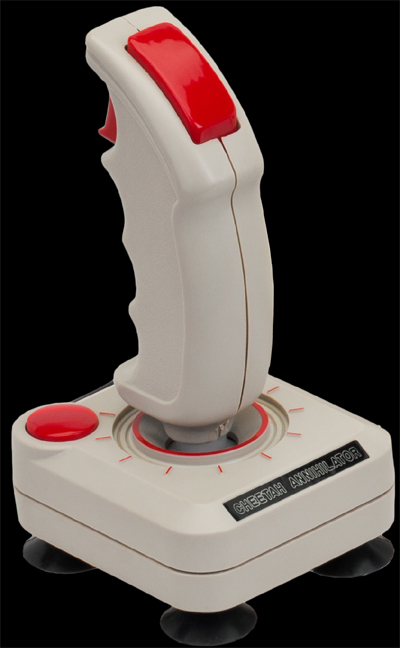 |
Cheetah Marketing Annihilator This 3-button joystick was bundled with the C-64GS console (which was only released in the UK, in 1990). Base looks very similar to a Gemini Gemstik. |
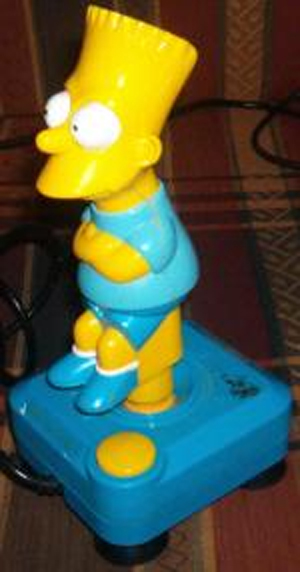 |
Cheetah Marketing Bart Simpson An Annihilator variant except with a blue base, a yellow fire button, and a joystick handle in the shape of Bart Simpson. Released in 1990. |
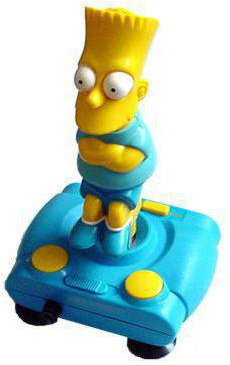 |
Cheetah Marketing Bart Simpson A Cheetah 125 variant with a blue base, yellow fire buttons, and a joystick handle in the shape of Bart Simpson. There's also 2 switches, with one possibly being for auto-fire. Released in 1990. |
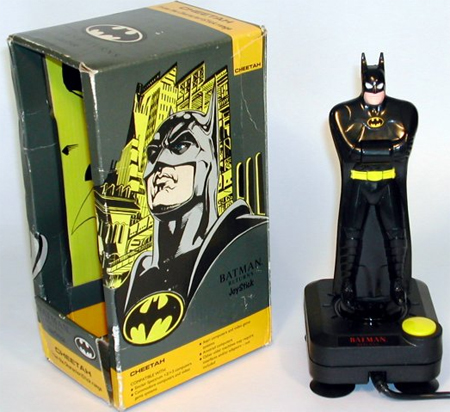 |
Cheetah Marketing Batman Returns An Annihilator variant with "BATMAN" in raised red lettering at the top and a stick in the shape of Batman. Released in 1990. |
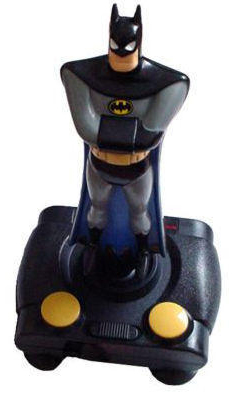 |
Cheetah Marketing Batman Returns A Cheetah 125 variant with "BATMAN" in raised red lettering at the top and a stick in the shape of Batman. There's also 2 switches, with one possibly being for auto-fire. Released in 1990. |
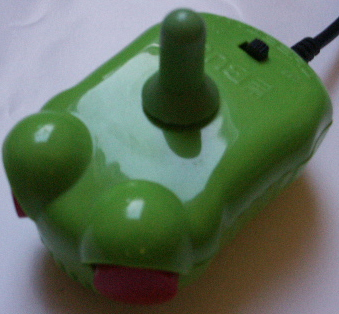
|
Cheetah Marketing The Bug Designed to be held in your palm and has a turbo switch. Came in at least 2 different colors. |
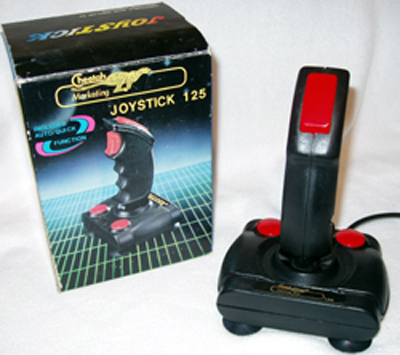 |
Cheetah Marketing Cheetah 125 Cheetah Marketing was a UK-based company that later changed their name to Cheetah International Ltd. |
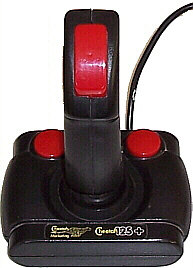
|
Cheetah Marketing Cheetah 125+ Similar to the 125 except it has a rotating stick and an extra button that's programmable. |
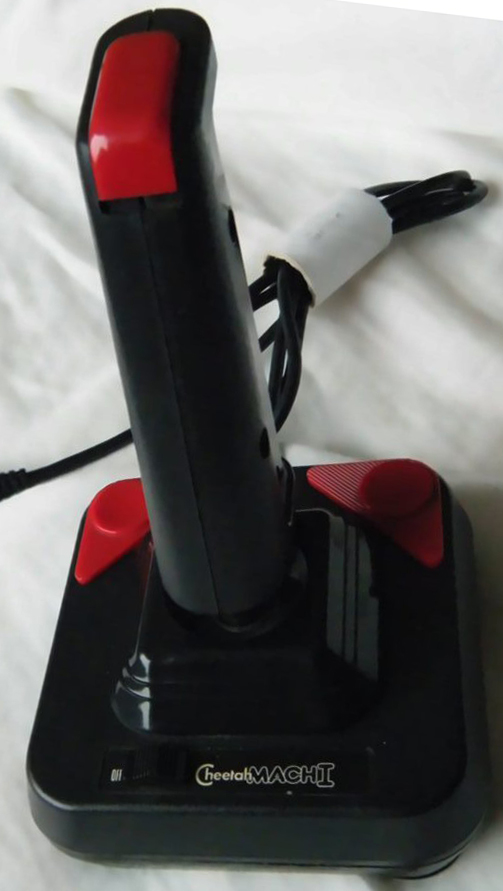
|
Cheetah Marketing
Mach I Features 4 fire buttons and auto-fire. |
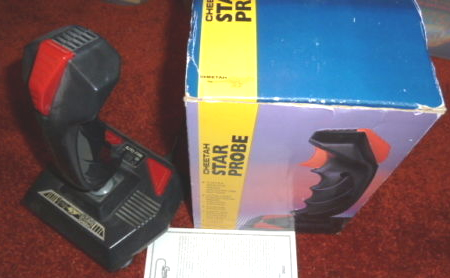 |
Cheetah Marketing Star Probe |
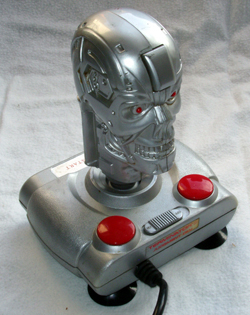 |
Cheetah Marketing Terminator Another in their long line of uncomfortable joysticks. Similar to the Cheetah 125 except with a silver base and a joystick handle in the shape of the Terminator's head (with a fire button in its forehead). Also features auto-fire. Released in 1990. |
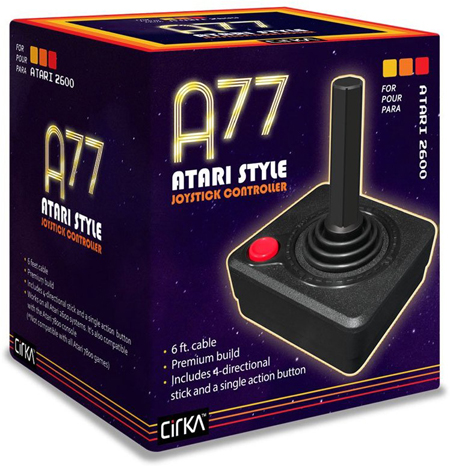 |
CirKa - A77 Atari Style Joystick Controller Copy of the Atari Standard joystick controller, but according to online reviews, the quality of them is quite poor. |
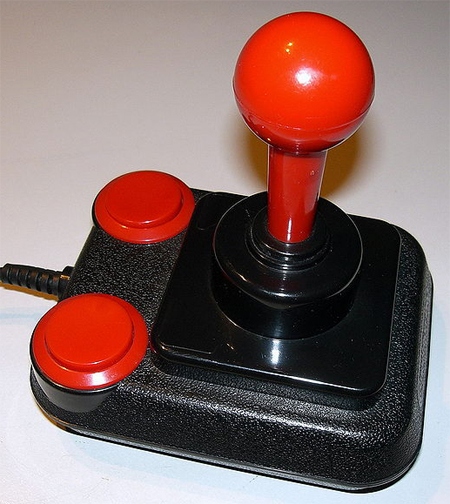 |
Coin Control, Inc. Competition Pro A very high-quality controller that features a ball top joystick and 2 large fire buttons, and uses leafswitches. |
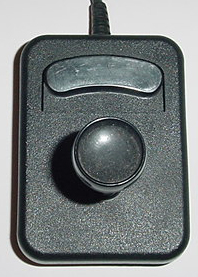 |
Coin Control, Inc. Competition Pro 200X Features a wide fire button, which is idea for either left or right-handed players. The internals utilize a heavy coil for the contact mechanism, instead of traditional leaf or microswitches. |
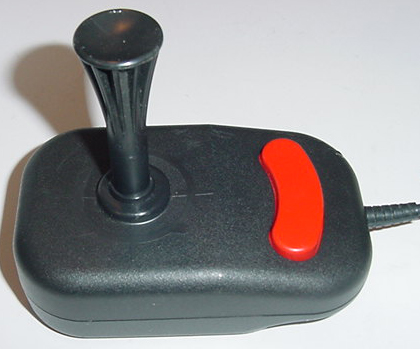 |
Coin Control, Inc. Competition Pro 1000 Similar to the 200X, except having a red fire button. |
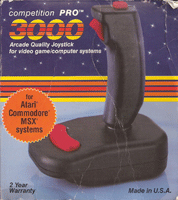
|
Coin Control, Inc. Competition Pro 3000 Similar to the 1000 but with a larger handle that has 2 additional fire buttons. |
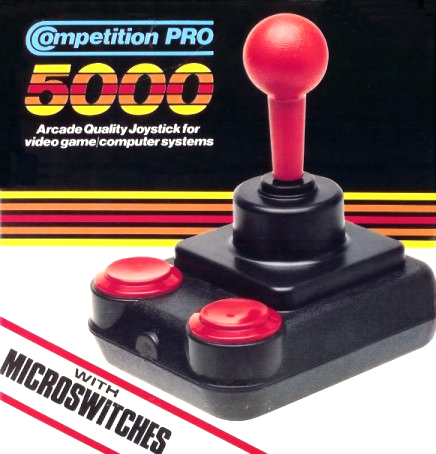
|
Coin Control, Inc. Competition Pro 5000 Identical to the original except that it uses microswitches. Several variations of this joystick exist, with different-colored sticks and bases. Coin Control, Inc. also made these for both the 5200 and Colecovision. |
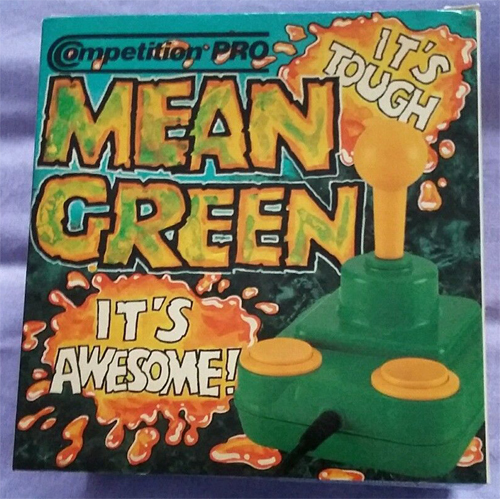
|
Coin Control, Inc. Competition Pro 5000 Mean Green Another variation. |
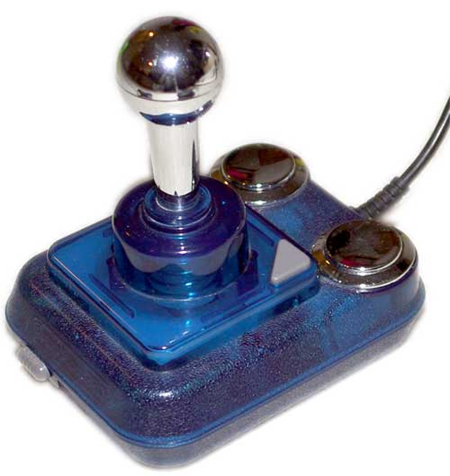 |
Coin Control, Inc. Competition Pro Deluxe Identical to the 5000, except it has a chrome ball top joystick and chrome fire buttons. It also features a 3-position switch for auto-fire and "slow down" and 2 additional fire buttons. Several variations of this joystick exist, with different-colored sticks and bases. |
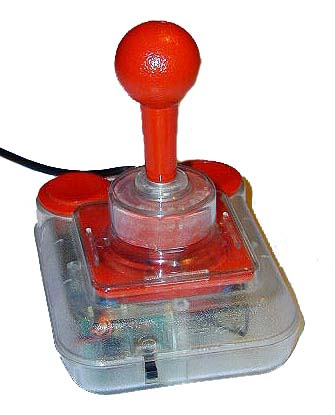
|
Coin Control, Inc. Competition Pro Extra Identical to the 5000, except it has a clear base and a 3-position switch for auto-fire and "slow down". Several variations of this joystick exist, with different-colored sticks and bases. A variant of the clear version has a clear internal ring for the joystick instead of red. |
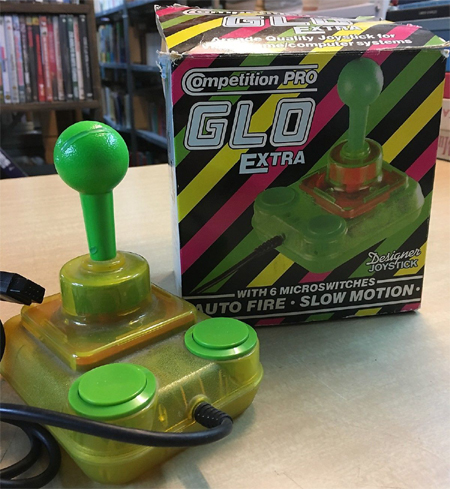 |
Coin Control, Inc. Competition Pro Glo Extra Identical to the Competition Pro Extra (with auto-fire and "slow down"), except it is green and possibly glows in the dark? |
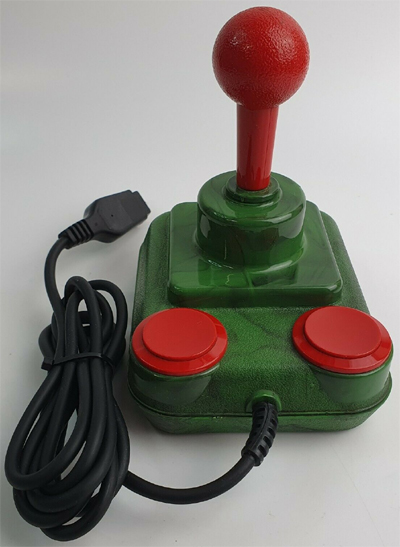
|
Coin Control, Inc.
Competition Pro
Joystick These have "COMPETITION PRO JOYSTICK molded into the base. It features 2 fire buttons and a 3-position switch for auto-fire and "slow down". As with the other models, several variations exist. This one has a camouflage |
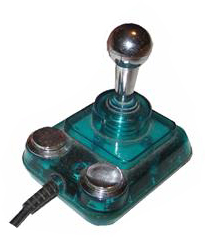 |
Coin Control, Inc. Competition Pro Mini A smaller version of the Competition Pro, with microswitches soldered onto a circuit board, making it less-durable. Available in differently-colored versions as well. The green version has silver buttons and 2 LEDs internally that light up when pressed. |
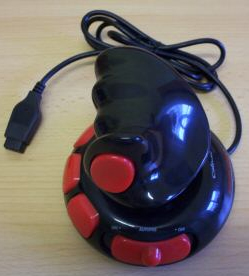 |
Colani HighScreen |
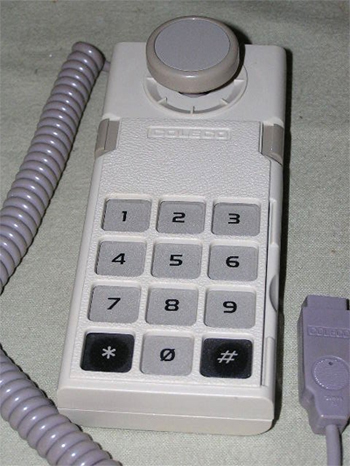 |
Coleco Adam controller Standard controller for the Adam. |
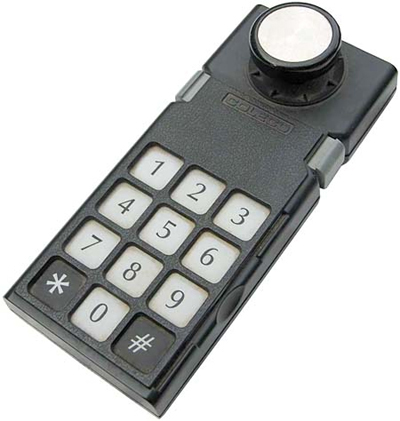 |
Coleco Colecovision controller Standard controller for the Colecovision. |
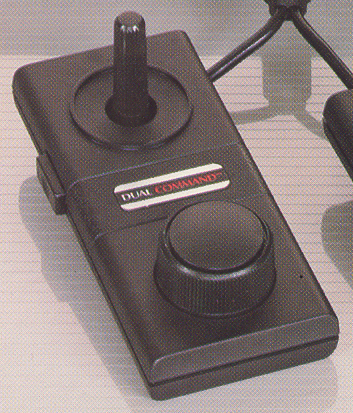 |
Coleco Dual Command Combination joystick+paddle. Description: "Advanced Controller Set with Built-in Joystick & Paddle. Now your customers can play all Atari 2600 VCS compatible games requiring joystick or paddle with one set of controllers. The DUAL COMMAND controllers were designed with a responsive, omni-directional joystick and side-mounted fire buttons, plus a rotary paddle control. These inexpensive high-quality controllers plug right into the control ports of the Atari 2600 VCS, or ColecoVision Expansion Module #1. They're also original equipment replacements for Coleco's Gemini Video Game System. To switch from joystick to paddle, just use the included Wye connector. The DUAL COMMAND controllers offer improved control at a price that's right!" Using the Y cable doesn't switch between joystick and paddle, but simply allows 2 or more players to play paddle games using these controllers. You also can't use it as a joystick with the Y cable, since it's missing the left, right, and fire button lines. |
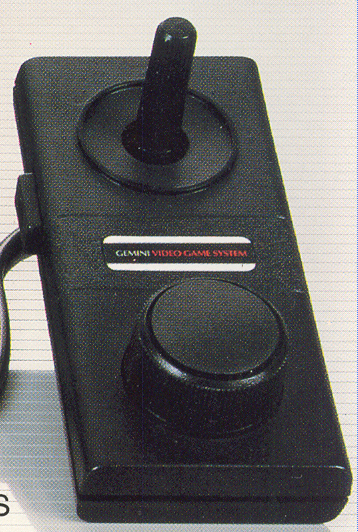 |
Coleco Gemini Video Game System Same as Dual Command. |
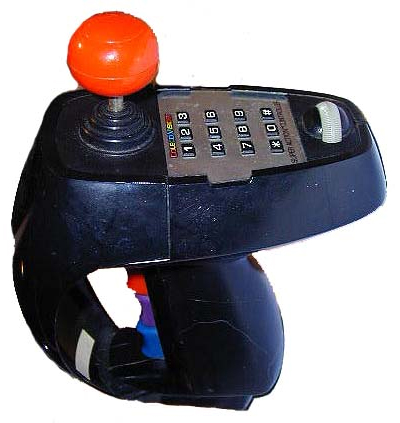 |
Coleco Super Action Controller Designed for the Colecovision, for use with their Super Action sports games. |
| Columbia Home Arcade controller Combination joystick+paddle, identical to the Coleco Gemini's. |
|
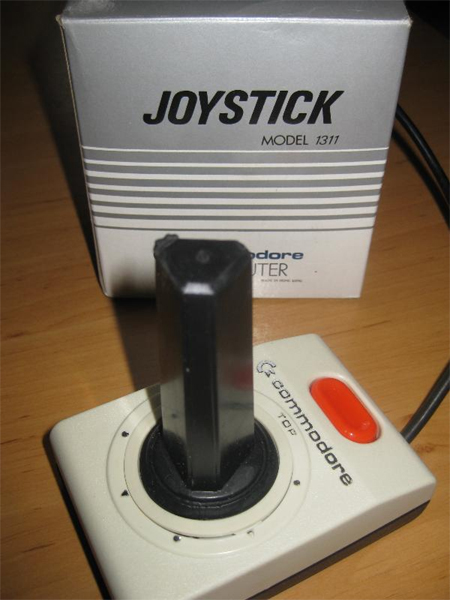 |
Commodore joystick - 1311 Standard 1-button joystick with a triangular-shaped joystick that's guaranteed to give one blisters. |
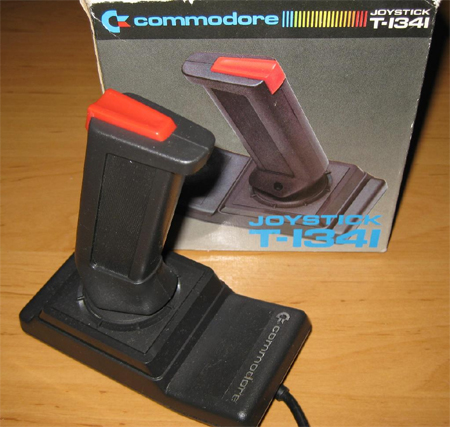 |
Commodore joystick - T-1341 Black pistol grip handle-shaped joystick with a single, rectangular fire button on top.. |
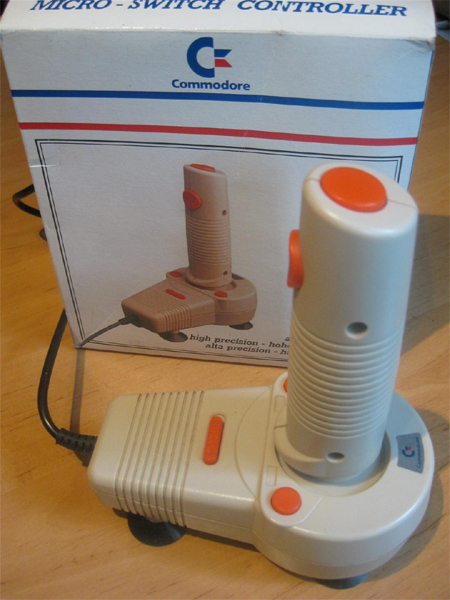 |
Commodore joystick - 1399 White joystick that is covered in fire buttons (at least 5). |
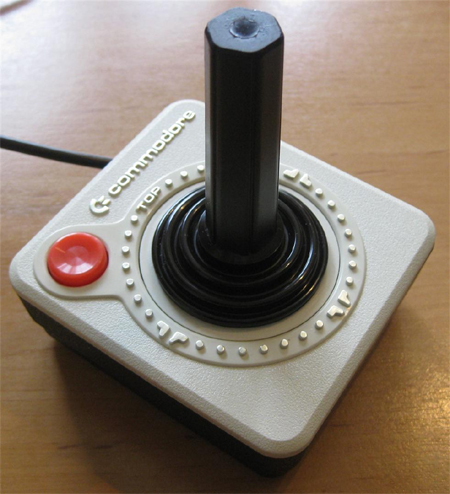 |
Commodore VIC-20 joystick Blatant ripoff of Atari's standard VCS CX40 joystick, with a white top casing and raised "Commodore" lettering in silver paint. According to an article in the November 29th, 1982 issue of InfoWorld (pg. 5), Atari filed a lawsuit against Commodore on October 11th, 1982, and won an injunction to halt the sale of them. |
| Commodore Switch Joy One of the last joysticks released under the Commodore label. |
|
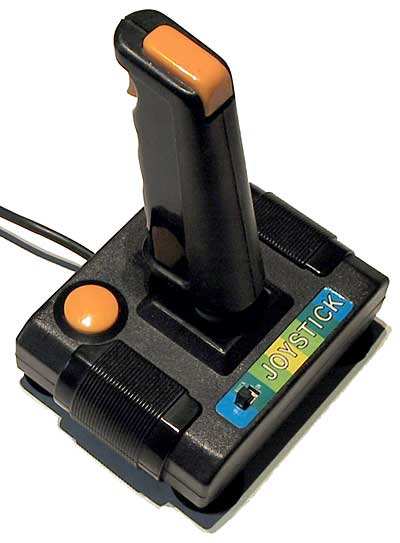 |
Commodore joystick VG-115 A 4-button joystick known for being very fragile. Has a base similar to a Spectravideo QuickShot II 318-102. Features auto-fire. |
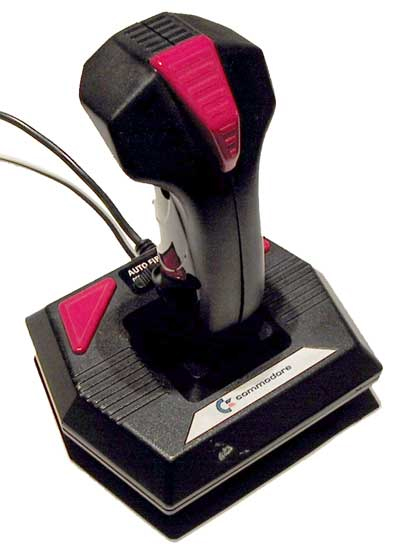 |
Commodore VG-250 Features auto-fire. |
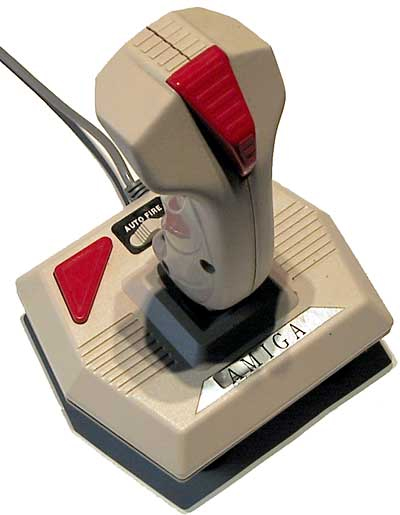 |
Commodore Amiga VG-250 Features auto-fire. Identical to the VG-250 except for being white (instead of black) and having a different label. |
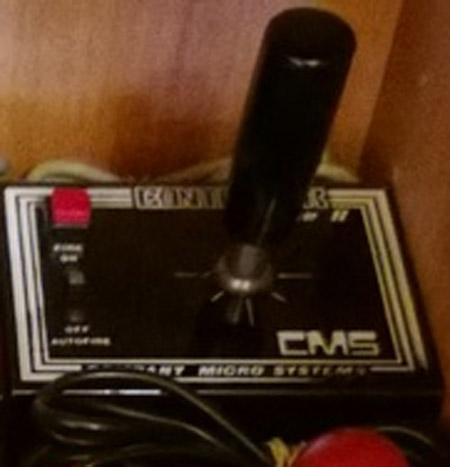 |
Company Micro Systems (CMS) Controller Super 8+ Sturdy microswitch controller that features auto-fire and the option to use either a stick or ball (both were included in the box and could be screwed/unscrewed to change). This is the same company as Micro Technica / John Micro System. |
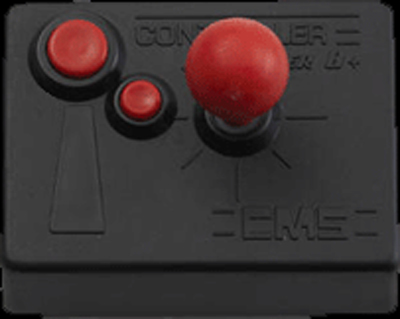
|
Company Micro Systems (CMS) Controller Super 8+ A 2-button controller in a plastic shell that came with a 1-year warranty. Models with 1, 2, 4, or 6 buttons were made, with most meant for use with a PC. CMS started using plastic shells because of an issue with the Amstrad CPC computer. The metal casing created static electricity, which damaged the AY-3-8912 Amstrad chip, and legal action was brought against CMS. |
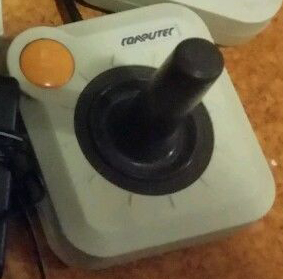 |
Computec joystick Standard controllers included with the Computec Video Game System clone. The controllers resemble Gemini Gemstiks but with the bases in white plastic. |
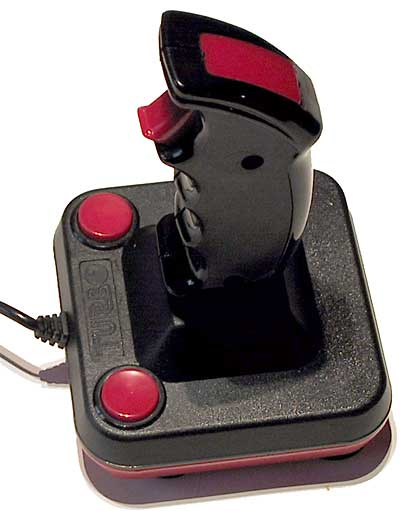 |
Computek Turbo Similar to the Wico Boss with 2 fire buttons and "TURBO" in raised letters on the base, and a slightly-different handle. Features auto-fire. |
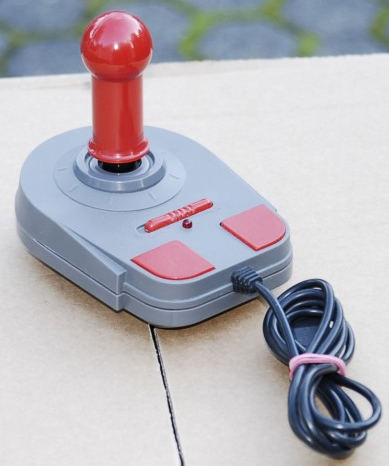
|
Computek Turbo Quick Gun Pro 2 different versions exist - one with a small knob stick and the other with the same stick as the original Turbo model. Both features auto-fire. |

|
Computek Turbo Similar to the Wico Boss with 2 fire buttons and "TURBO" in raised letters on the base, and a slightly-different handle. Features auto-fire. Available in either black and red, or all gray. |
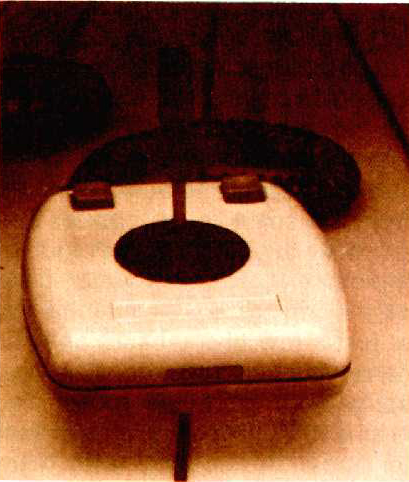
|
Comrex ComMander - CR-301 Designed for left or right-handed use, the stick is able to move in 360 degrees and uses microswitches. Retail price $19.95. |
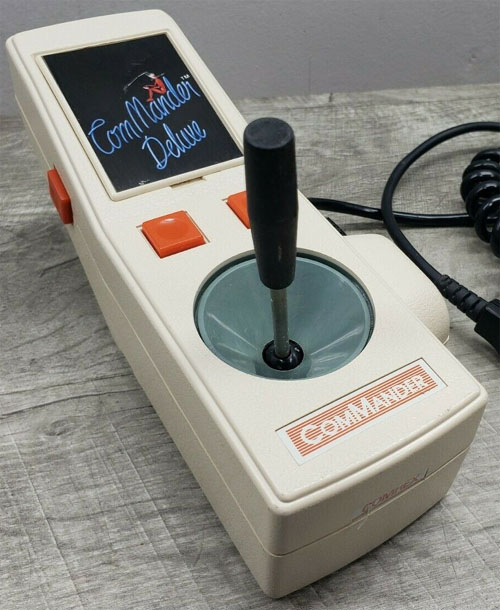 |
Comrex ComMander Deluxe Retail price $14.95. |
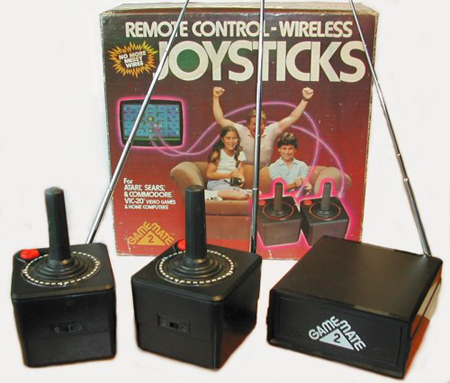 |
Cynex Manu. Corp Game Mate 2 Remote Control Wireless Joysticks Same as Atari's CX42 joysticks. Retail price $99.95! |
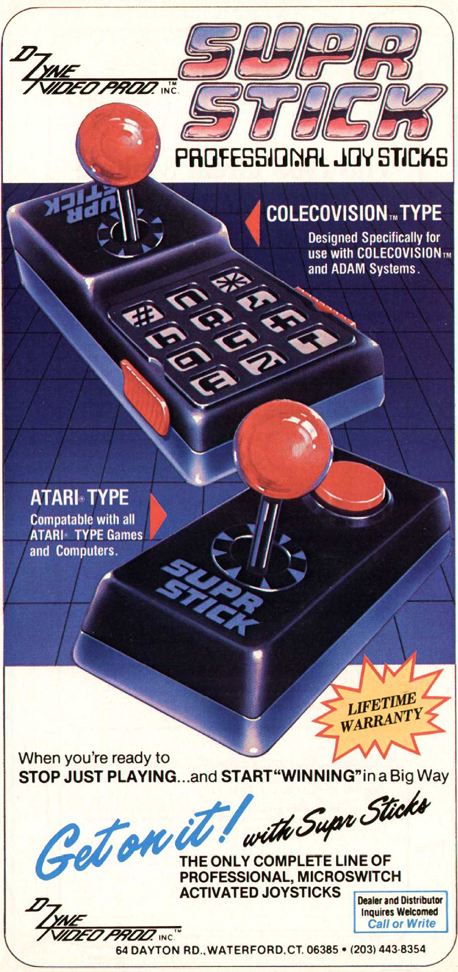
|
D Zyne Video Production Inc. Supr Stick A 1-button joystick with a lifetime warranty that features microswitchs for the joystick and a leafswitch for the fire button. A version was also designed specifically for the Colecovision with 2 buttons and a keypad. Retail price $39.95. |
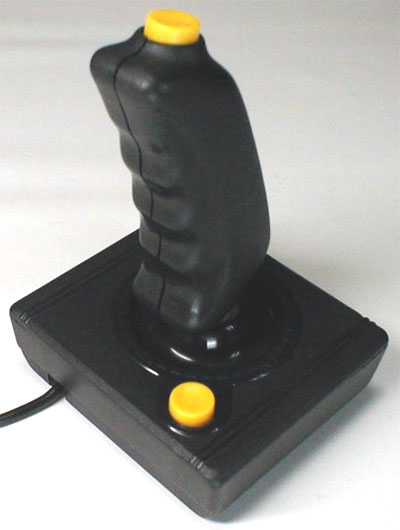 |
Dactar joystick Standard controller for the Dactar Video Game system. The handle is identical to the Spectravision/Spectravideo Quick-Shot 318-101. |
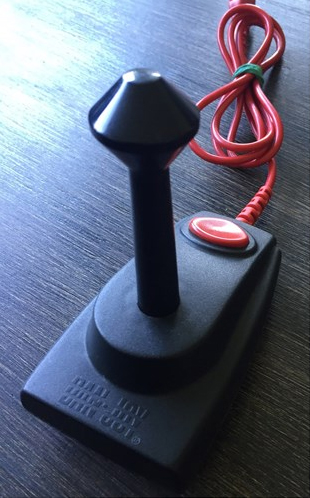 |
Dansk Joystick Productions Dan-Joy A microswitch controller similar to Suzo's The Arcade. |
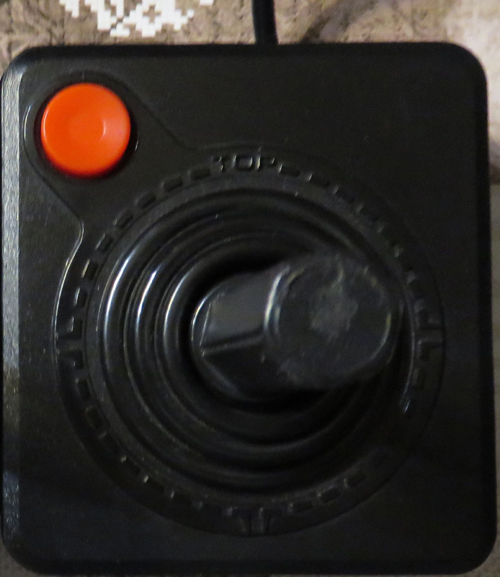
|
Dar Yar joystick Packaged with Dar Yar's Television Computer System VCS pirate console. Similar to Atari's standard VCS CX40 joystick and likely using a very cheap leafswitch setup, with wires going to screws for the bottom contacts. |
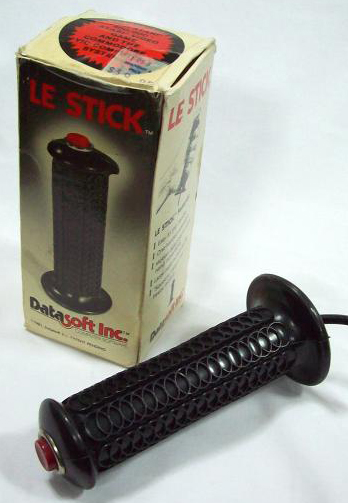 |
Datasoft Le Stick Tilt switch joystick. Uses mercury switches to sense movement of the stick in mid-air. When did giving a controller full of mercury to kids seem like a good idea? Retail price $39.95. |

|
Digivision
Digivision White variant of the Robbystick. Looks identical to the original Spectravision/Spectravideo Quick-Shot. |
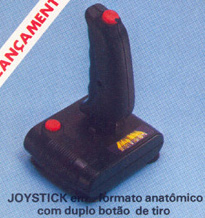
|
Digivision Robby joystick Bundled with the Digivision console. Looks identical to the original Spectravision/Spectravideo Quick-Shot. |
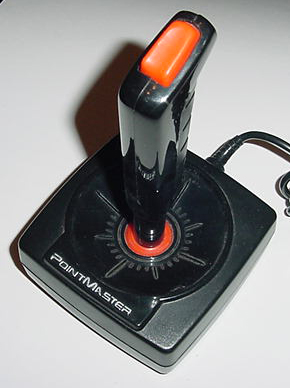 |
Discwasher PointMaster Competition Joystick Has a rectangular-shaped fire button on the top of the joystick. Retail price $16.95. |
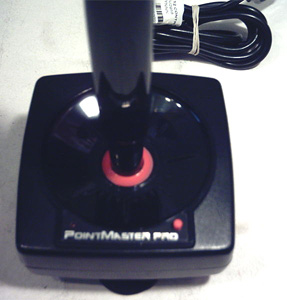 |
Discwasher PointMaster Pro Similar to the original PointMaster joystick except this has an auto-fire mode and suction-cupped feet. Retail price $27.95. |
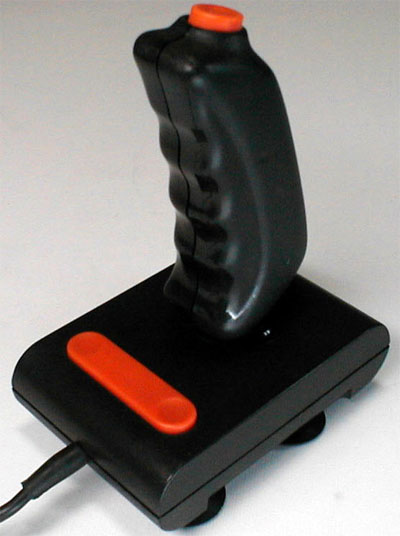 |
Dismarc Superstick Identical to the Crack Shot Super Joystick. |
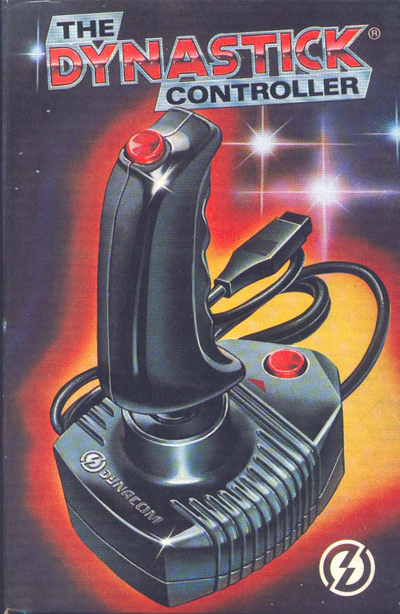
|
Dynacom Dynastick Controller, The Standard controller for the Dynavision I system. It's a copy of Spectravision/Spectravideo's Quick-Shot 318-101, except the handle is white and the base is gray. There are 4 suction cups on the bottom. A variant exists that is grey and white with red lettering. |
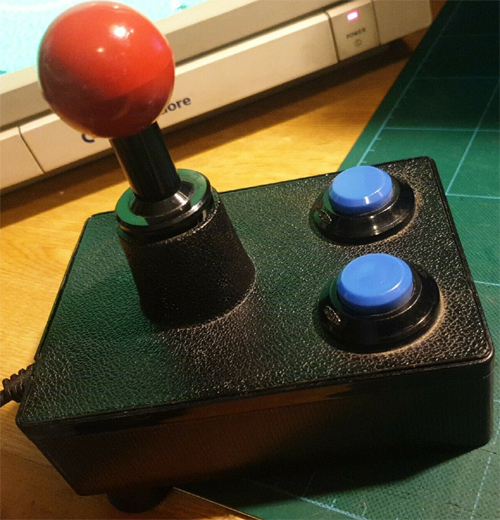 |
Edierre joystick Known more for making controls for arcade games (LINK), it's unknown if they designed this or simply had their name put on someone else's controller. |
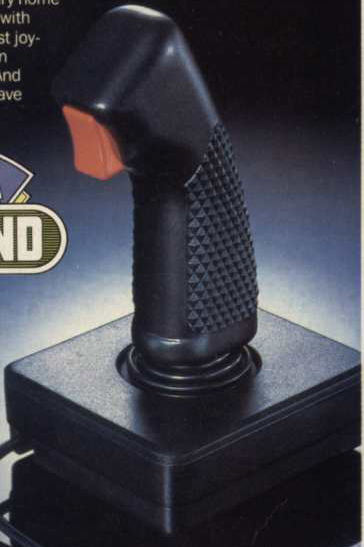
|
Electra Concepts Corp. Triga Command The Atari 5200 Masterplay guys briefly sold this clunky joystick controller. The name "TRIGA-COMMAND" (hyphenated) is in raised lettering across the top, it's not with their packaging, plus the photo in their ad doesn't show any raised lettering. Retail price $19.95. |
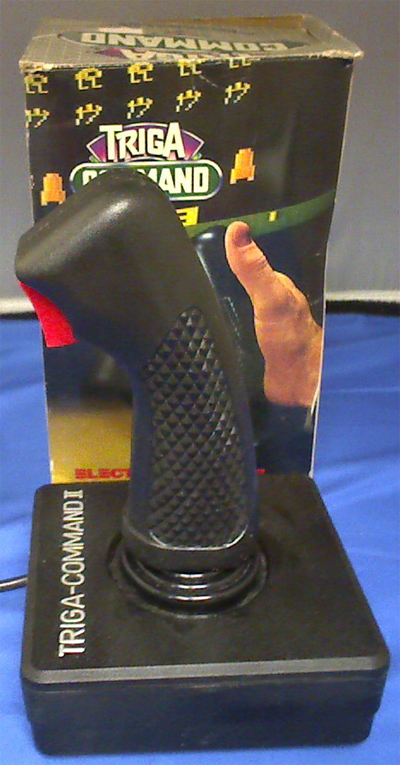 |
Electra Concepts Corp. Triga Command II Not sure what makes this different from the original version, but it certainly didn't warrant a sequel. Retail price $10.95. |
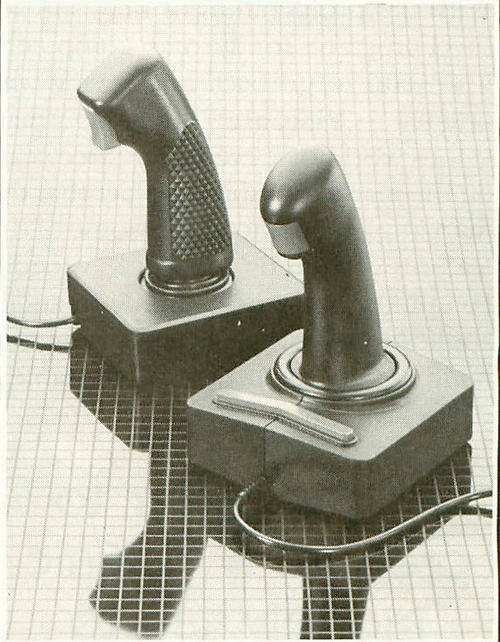 |
Electra Concepts Corp. Triga Elite Features a "continuous-fire" bar. According to a blurb in the June 1984 issue of Antic (pg. 79), only this model could be used with the Atari XL computers. Retail price $23.95. |
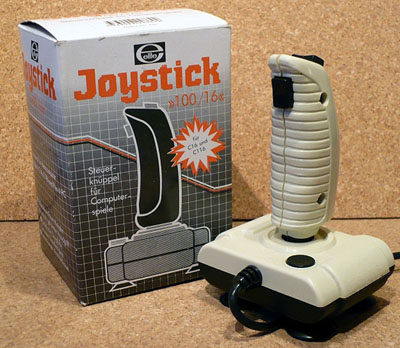
|
Elite joystick A 3-button joystick made in either black+white, or gray. |
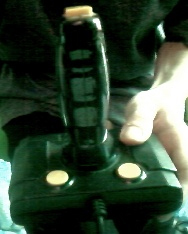 |
Elite joystick A 3-button joystick with the buttons in a different configuration. |
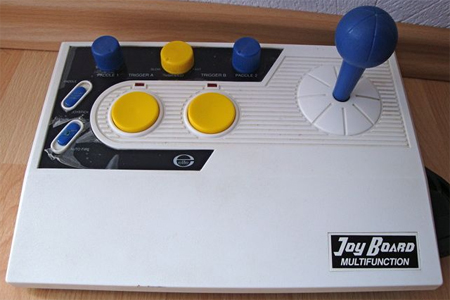 |
Elite Joy Board Multifunction The joystick uses microswitches. There are 2 small knobs which function as paddles, and a switch selects between using the joystick or paddles. There's a switch that controls auto-fire, which is variable with a 3rd knob. Each button has a red LED indicator above it. |
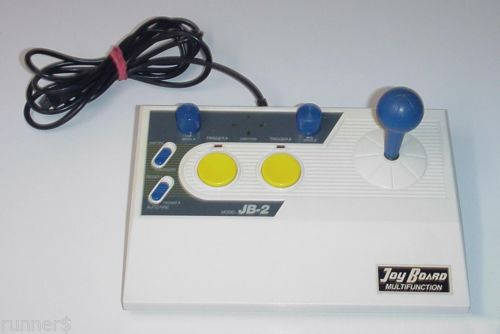 |
Elite Joy Board Multifunction - JB-2 Similar to the original Joy Board Multifunction (JB-1?) controller, except instead of a auto-fire speed variable knob, there's a 4-way green LED direction indicator. |
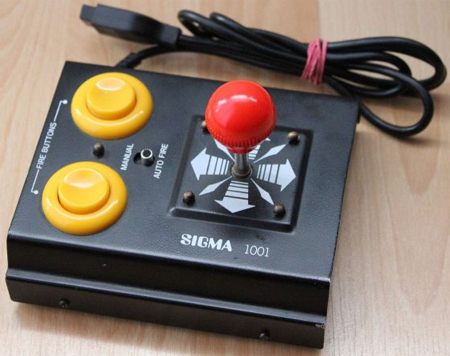 |
Elite Sigma 1001 A 2-button controller that features arcade-style buttons and auto-fire. |
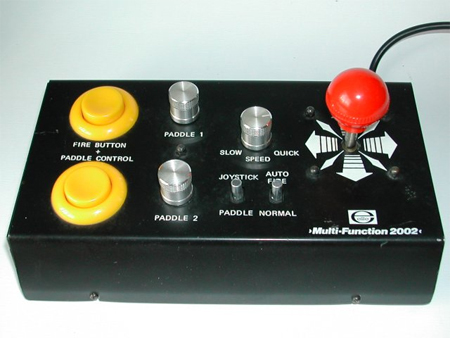 |
Elite Multi-Function 2002 All-in-1 combination joystick+paddle controller. It features a metal case, 2 fire buttons, and 2 small paddle controls. A small switch selects between the joystick and paddles. The 3rd dial adjusts the auto-fire. It also has suction cups on the bottom. Identical to the Euromax Micro-Handler and Sigma Multi-Function 2100. Retail price is £24.95. |
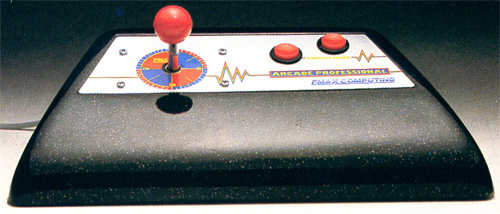 |
Emax Computing Arcade Professional Released in 1984 for the European market, with some success in France and Germany, despite its high price of £30 (approximately 74 DM or 4,708 Francs, which equates to about 40 Euros or $43 US). It was also released as the Euromax Arcade Professional in the UK. The controller measures 36cm X 20cm and features an arcade-style ball-top handle. The joystick can be adjusted for 2, 4, or 8-way movement and also features two fire buttons - one of which is dedicated auto-fire. The photo was taken from a German website. |
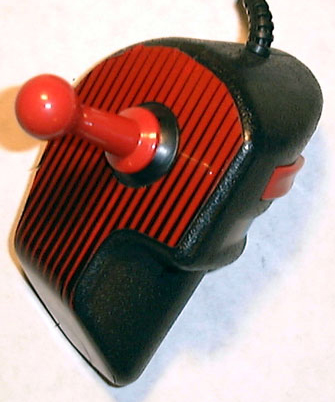 |
Epyx 500XJ Same as Konix's SpeedKing. |
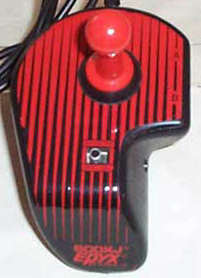 |
Epyx 500XJ Includes an auto-fire switch. |
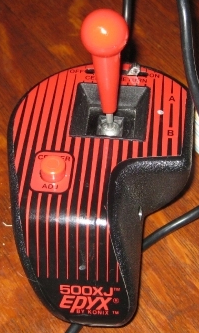 |
Epyx 500XJ analog Dual fire buttons but only Button A is used with Atari 2600 games. A switch chooses between either free-form analog control or a spring-loaded "return-to-center" digital control. |
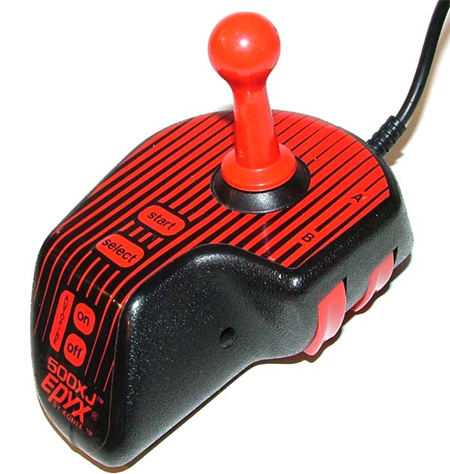 |
Epyx 500XJ with Autofire Dual fire buttons but only Button A is used with Atari 2600 games. Auto-fire is activated by sliding the switch into position and holding the A fire button. |
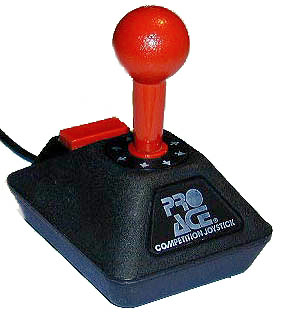 |
Euromax Pro Ace Competition Joystick Identical to Zip Stik's Competition Joystick. |
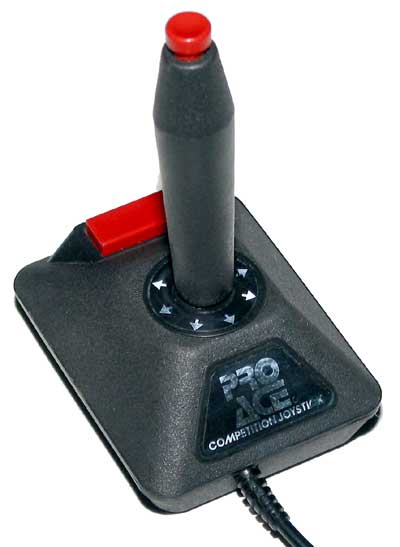 |
Euromax Pro Ace Competition Joystick Variant with a long handle with a fire button on top. |
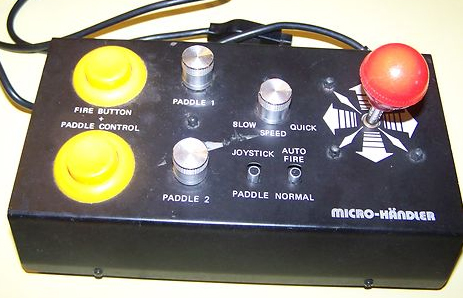
|
Euromax
Micro-Handler All-in-1 combination joystick+paddle controller. It features a metal case, 2 fire buttons, and 2 small paddle controls. A small switch selects between the joystick and paddles. The 3rd dial adjusts the auto-fire. It also has suction cups on the bottom. Identical to the Elite Multi-Function 2002 and Sigma Multi-Function 2100. Retail price is £24.95. |
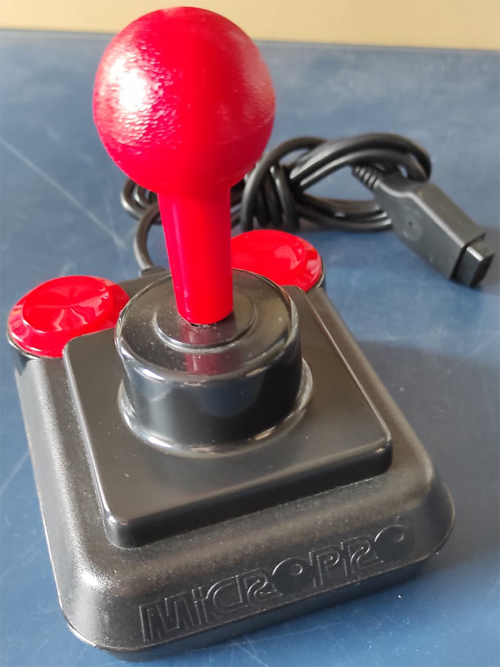 |
Euromax Mirco-Pro Same as Coin Control's Competition Pro. |
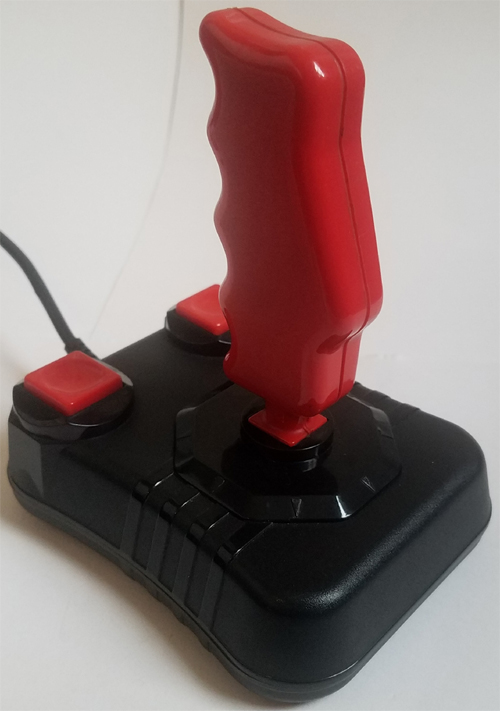
|
Euromax Has 2 square buttons and what appears to be an auto-fire switch. The joystick handle is similar to a Wico grip handle. There's also a version with a clear plastic base. |
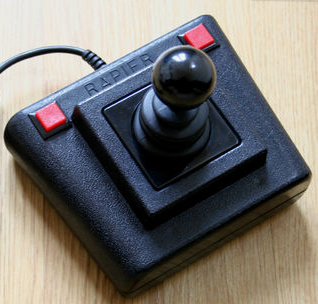 |
Fourth Dimension Computing Ltd. Rapier |
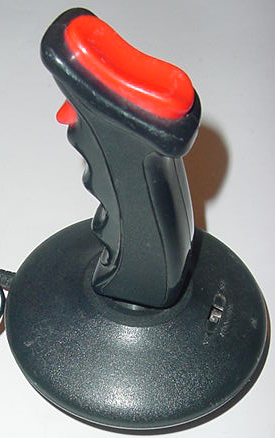
|
Framer Associates and Co. Challenger - GX.112 Features 2 fire buttons, auto-fire, and a rounded base somewhat similar to some Championship Electronics joysticks. |
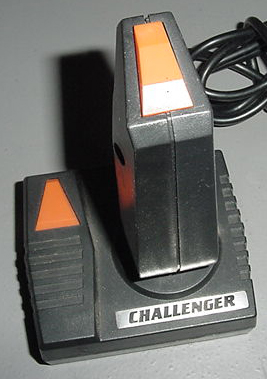
|
Framer Associates Inc. Challenger - K-30 Features 2 triangular-shaped fire buttons and suction cups on the bottom. The box states there's an optional auto-fire function which is complete marketing b.s. since there's no auto-fire circuitry inside. There's 2 holes underneath the "Challenger" sticker, so perhaps there was another model (or plans for one) with extra buttons or switches. The box also shows a different model without the sticker or the holes. Manufactured by Framer Assoc. Inc, P.O. Box 201, Sharon, MA 02067.. |
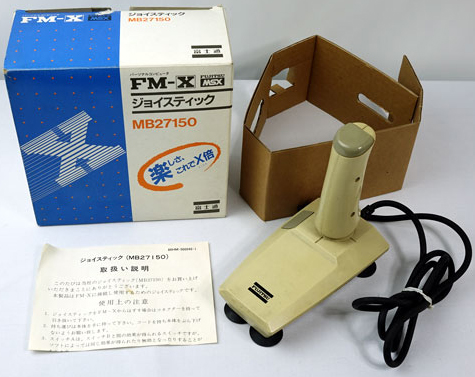 |
Fujitsu FM-X - MB27150 Marketed for use with the MSX HX-10 computer. This was designed by several different manufacturers under different names, model numbers, and colors (Canon, Fujitsu, Gradiente, Panasonic, Hitachi, Mitsubishi, Sanyo, Toshiba, Victor).
|
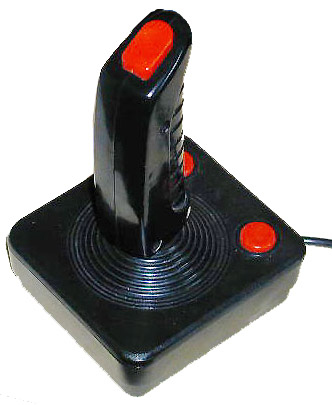 |
Funvision joystick Another 3-button Atari standard variant. The stick itself is similar to a Quick-Shot and others. The rubber boot has more ridges. |
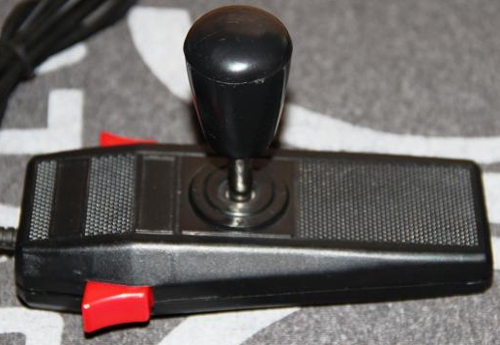
|
Funvision joystick Standard controller for Funvision's Home Computer Game system. Knockoff of Atari's Pro-Line controller and identical to Action Hi-Tech's Hi-Score-MK3 and Kingsway Video Computer Console controller. The sticks can be unscrewed. |
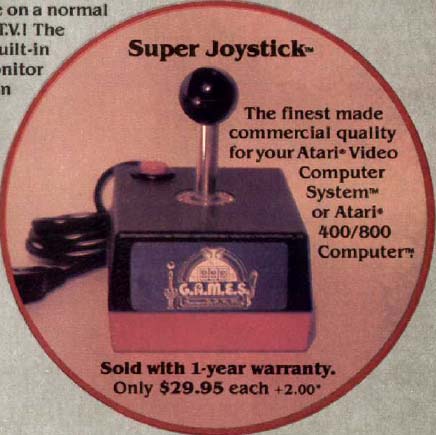
|
G.A.M.E.S. Super Joystick Identical to Newport Controls' Prostick I. Came with a 1-year warranty. Retail price $29.95. |
| Game-Tech Pro-Stick Mentioned in the 1982 #8 issue of A.N.A.L.O.G. as a new product. |
|
| Games, Inc. Apex Super Joystick Same as Newport Controls' Prostick I. Retail price $29.95. |
|
| GCE Firepower Advertised at the Summer 1982 CES show, to be available in October. Featured 2 fire buttons and the ability to use with one hand, with a patent pending on the internal switch mechanism. Retail price $14.95. |
|
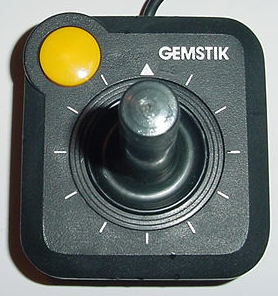 |
Gemini
Gemstik VG170B Standard joystick controller identifiable by its yellow fire button. |
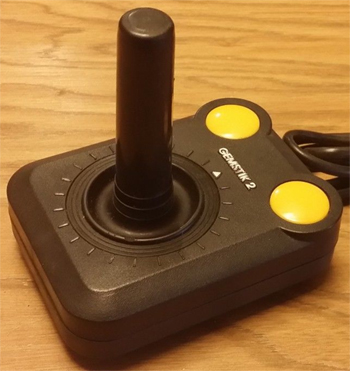 |
Gemini
Gemstik 2 Similar to the Gemstik except for having 2 fire buttons. |
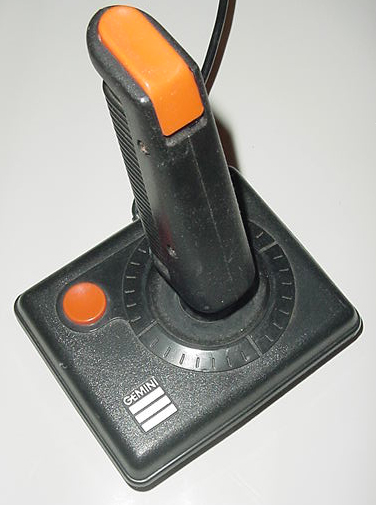
|
Gemini
Gemstik-Pro VG171B A unique 2-button joystick with a contoured joystick button and a wider base. The pcb is stamped September 1983. |

|
Gemini Joystick VG-110 Identical to Kraft's Ace joystick except for having "JOYSTICK" in raised, yellow lettering on the top of the case, instead of "ACE". |
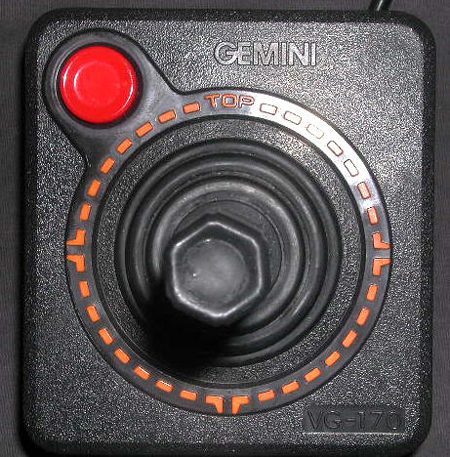 |
Gemini Joystick VG-170 Identical to Atari's standard VCS CX40 joystick except it has "GEMINI" in raised letters on the top above the stick and "VG-170" in raised letters below it. |
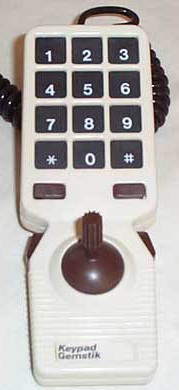 |
Gemini Keypad
Gemstik Designed for the Colecovision. Looks identical to Amiga's The Power-Stick. |
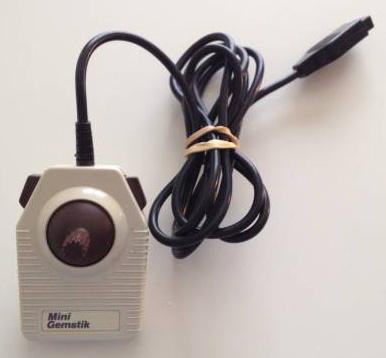 |
Gemini Mini
Gemstik Looks identical to Amiga's The Power-Stick. |
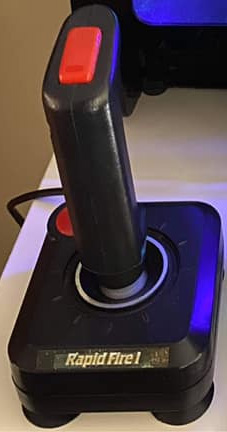
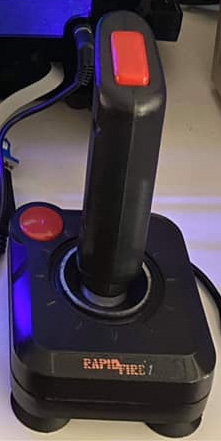 |
Gemini
Rapid Fire The base is identical to the Gemstik, but the handle is larger and includes a fire button (identical to the Gemini Turbo Gemstik). 2 variants of the label exist. |
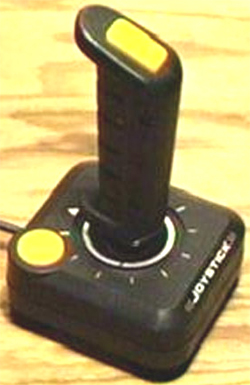 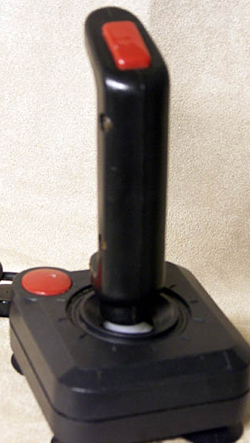 |
Gemini Turbo
Gemstik Joystick The base is identical to the Gemstik, but the handle is larger and includes a fire button. A variant also exists with red buttons instead of yellow (identical to the Gemini Rapid Fire). |
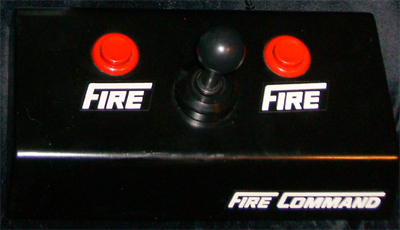
|
GIM Electronics Fire Command - VC-2001 Heavy-duty micro-switch controller that works quite well but is a little stiff. It has a fire button on either side of the stick and weighs a whopping four pounds! It's an extremely rare stick (only a few have currently been confirmed to exist). The ad mentions Ultra Tech Distributors but not GIM Electronics Corp. Retail price $39.95.
GIM Electronics Fire Command II - VC-2001 Identical to the Fire Command, except for having a base-mounted switch to allow both buttons to work separately for Colecovision systems. |
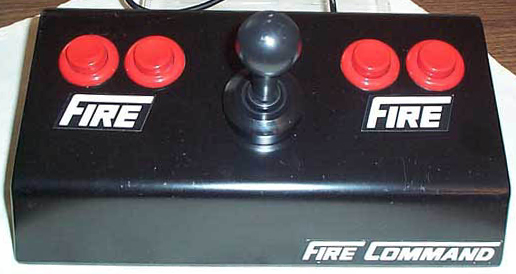 |
GIM Electronics Fire Command - VC-2001C Identical to the Fire Command, except for having 4 fire buttons; designed for use with the Colecovision. The ad mentions Ultra Tech Distributors but not GIM Electronics Corp. Retail price $44.95. |
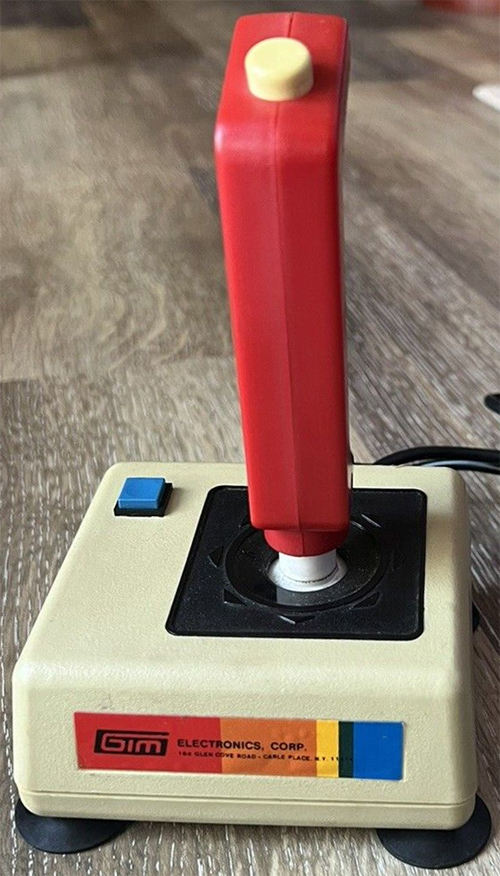
|
GIM Electronics (model
unknown)
|
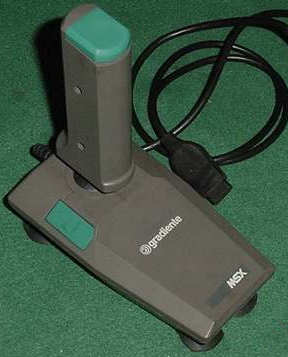
|
Gradiente MSX Joy Stick Marketed for use with the MSX HX-10 computer. This was designed by several different manufacturers under different names, model numbers, and colors (Canon, Fujitsu, Gradiente, Panasonic, Hitachi, Mitsubishi, Sanyo, Toshiba, Victor).
|
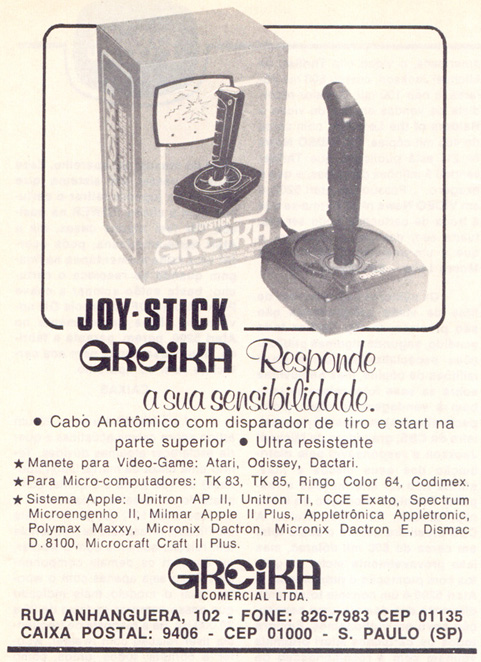 |
Greika Joy-Stick Clone of the Discwasher PointMaster Competition Joystick. |
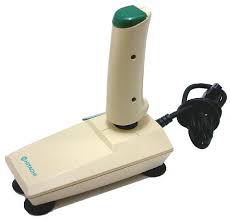 |
Hitachi joystick Marketed for use with the MSX HX-10 computer. This was designed by several different manufacturers under different names, model numbers, and colors (Canon, Fujitsu, Gradiente, Panasonic, Hitachi, Mitsubishi, Sanyo, Toshiba, Victor). |
| Human Engineered Software (HES) Hestick I Mentioned in the April 1983 issue of Creative Computing (pg. 30). Retail price $7.95. |
|
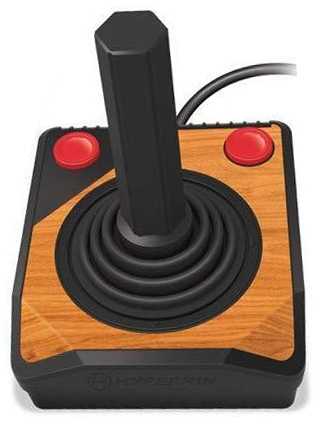 |
Hyperkin
Retron77 Standard controller bundled with the Retron77 console. |
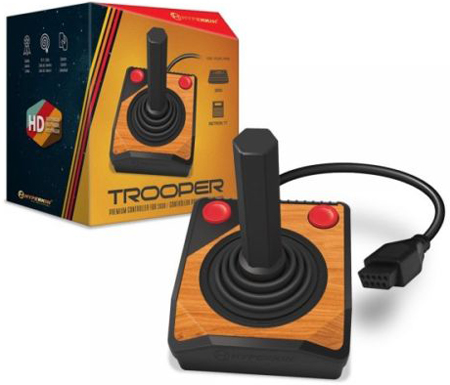 |
Hyperkin
Trooper Upgraded version of the Retron77. Also sold separately. |
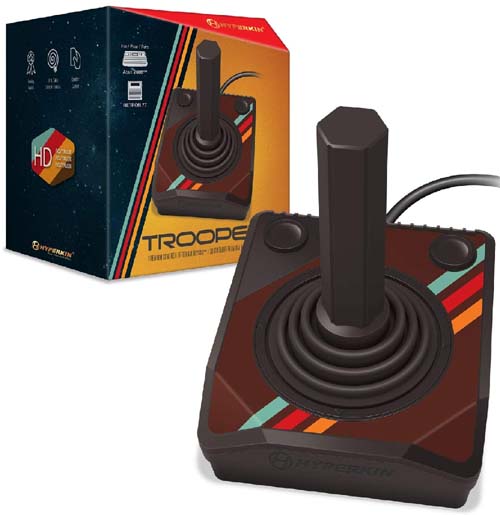 |
Hyperkin
Trooper
Premium Premium version of the Retron77, with the only difference being the striped graphics. Also sold separately. |
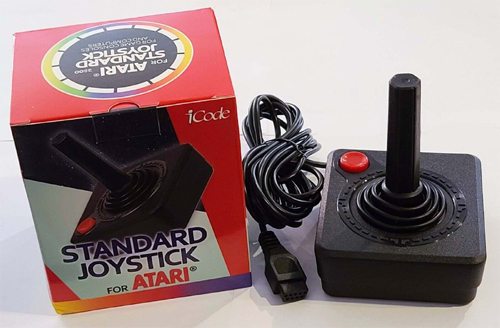 |
Icode
Standard Joystick Unlicensed copy of Atari's standard VCS CX40 joystick. |
| ICOMP (Individual Computers)/Speedlink Competition Pro Latest reproduction of Suzo's Competition Pro joystick, but of lower quality. |
|
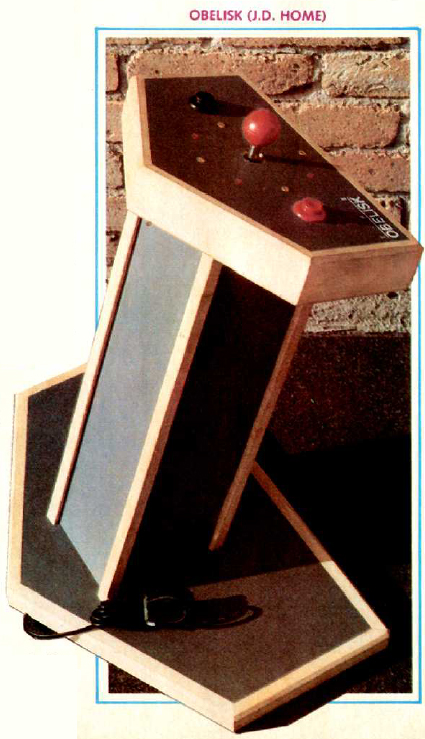 |
J.D. Home Incorporated Obelisk A large, free-standing controller made of hardwood and formica, and designed to be used while sitting. Available in 4 different colors. Retail price $89.95, with a 2-player option for an additional $29.95. |
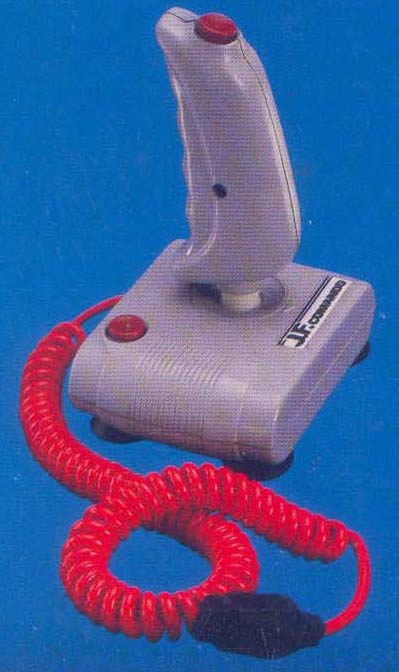 |
J.F. Commando Identical to Spectravision/Spectravideo Quick-Shot 318-101. |
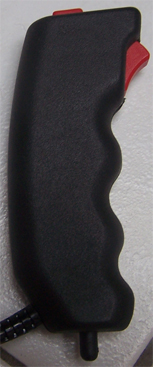
|
John Hall GmbH The Stick Looks similar to CBS Games' Booster Grip, but is a full-fledged, baseless controller. |
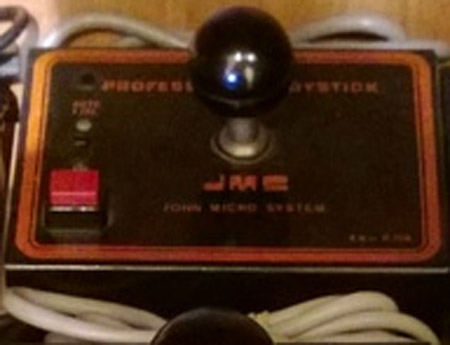 |
John Micro System (JMS) Professional Joystick Sturdy microswitch controller that features auto-fire with an LED. |
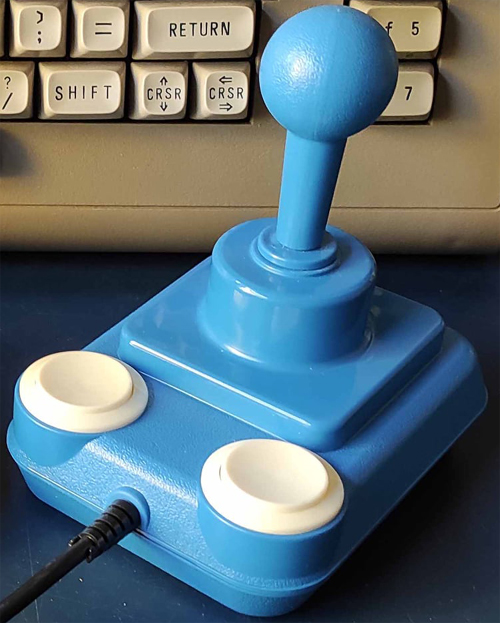 |
Kempston Same as Coin Control's Competition Pro but with different colors. |
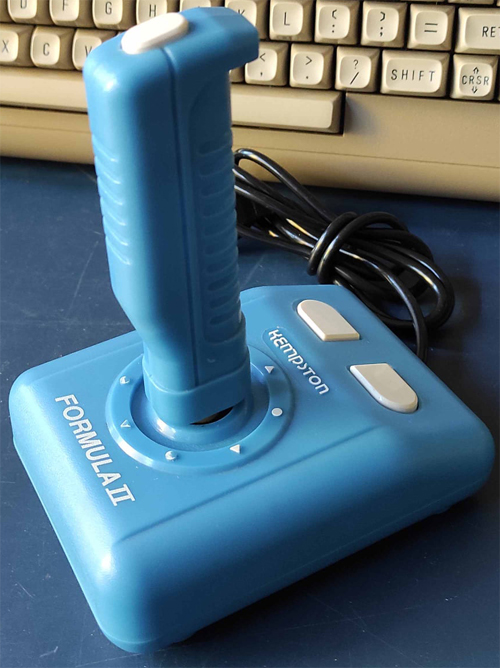 |
Kempston Formula II Same as Suncom's TAC-3 but with different colors. |
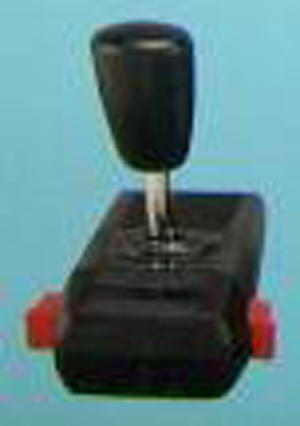 |
Kingsway joystick Standard controller for Kingsway's Video Computer Console system. Knockoff of Atari's Pro-Line controller and identical to Action Hi-Tech's Hi-Score-MK3 and Funvision Home Computer Game system controller. The sticks can be unscrewed. |
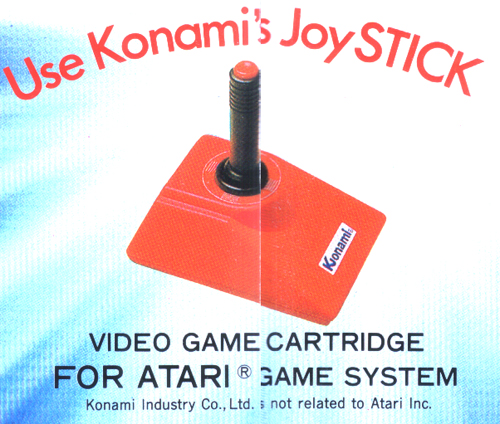 |
Konami JoySTICK Shown in a 1983 Konami catalog. |
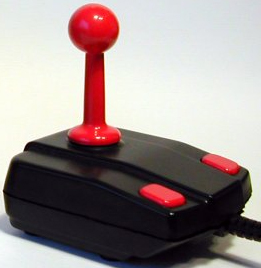
|
Konix MegaBlaster Two variants have been found - one with retangular fire buttons, and one with square fire buttons. |
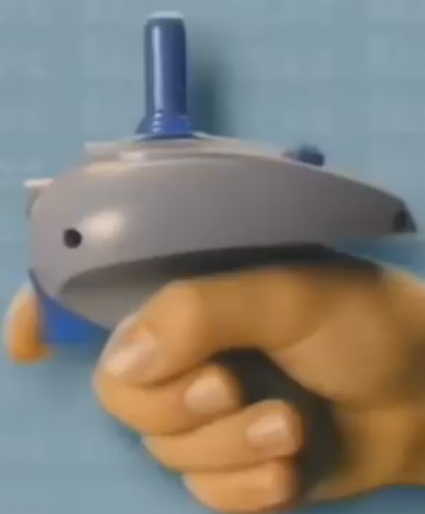
|
Konix Navigator A microswitch controller featuring auto-fire. 2 variations exist - one with a black shell and one with a red shell. An early variation with a gray shell was shown in a Konix promotional video. |
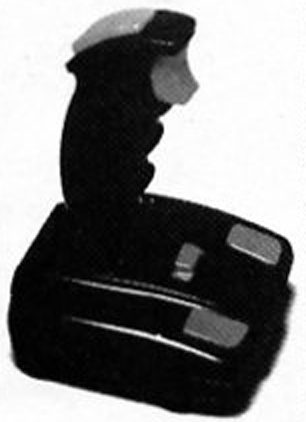 |
Konix Predator Has a base similar to Knoix's Navigator with the addition of an auto-fire switch, and a 2-button stick similar to Beeshu's Hot Stuff. |
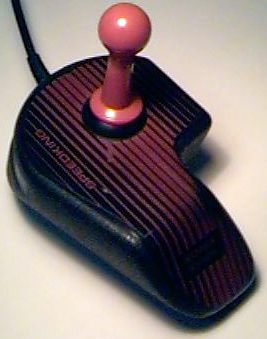 |
Konix SpeedKing The video game market had already crashed when this palm-held joystick controller was introduced. It was likely intended for use on home computers. It uses microswitches. |
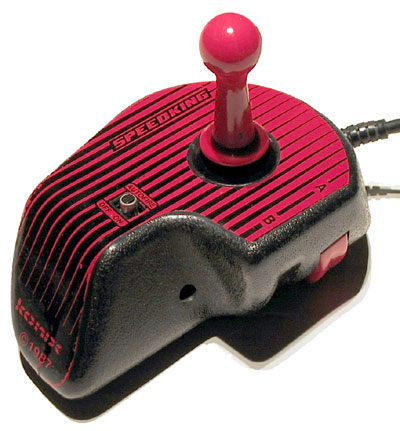 |
Konix SpeedKing Variant that is labeled for 2 fire buttons (but only appears to have 1) and an auto-fire switch. |
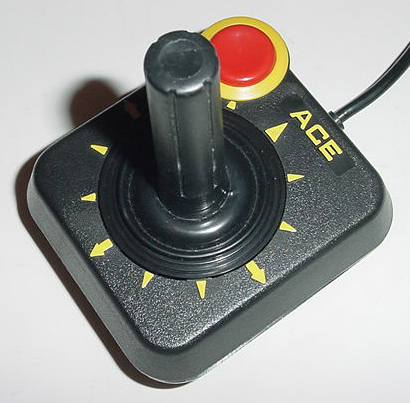 |
Kraft Systems, Inc. Ace P/N 820049 |
|
Kraft Systems, Inc. Maze Master 205-315 Identical to the Switch Hitter except for having 1 fire button. Has a small switch on the bottom to select between 4-way and 8-way mode. Retail price $16.95 - $19.95. |
|
Kraft Systems, Inc. Maze Master Identical to the black version except for having a light beige case and a black fire button. Originally shown as having 2 buttons and red lettering. Retail price $16.95 - $19.95. |
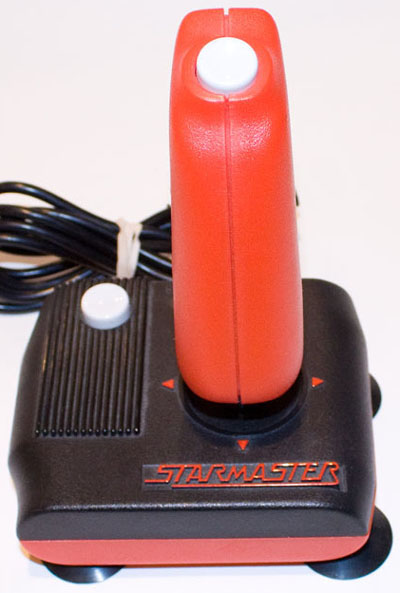 |
Kraft Systems, Inc. Starmaster P/N 820-102 A black and red stick with white buttons on the stick and base and suction cups on the bottom. The handle is identical to a Quick-Shot. Retail price $16.95 - $19.95. |
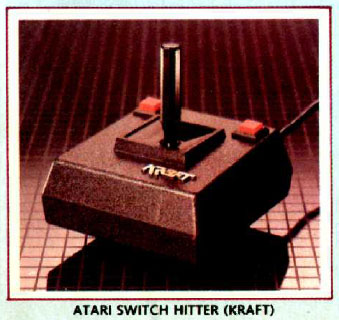 |
Kraft Systems, Inc. Switch
Hitter Identical to the Maze Master except for having 2 fire buttons. Has a small switch on the bottom to select between 4-way and 8-way mode. Retail price $16.95 - $19.95. |
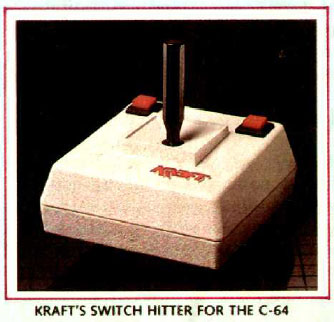
|
Kraft Systems, Inc. Switch
Hitter Identical to the black version except for having a light beige case. Originally shown as having red lettering. Retail price $16.95 - $19.95. |
 |
KY Enterprises Mouth Controller - 103 Controller designed for the disabled. Includes controls for Select and Reset. Retail price $65. |
 |
KY Enterprises Mouth Controller - 104 Controller designed for the disabled. Same as model 103 except it includes paddle controller. Retail price $75. |
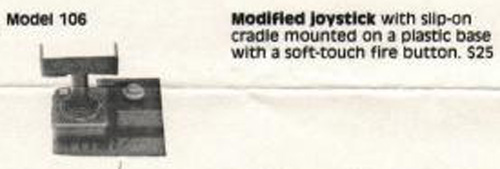 |
KY Enterprises Modified joystick - 106 Controller designed for the disabled. Retail price $25. |
 |
KY Enterprises Modified joystick - 107 Controller designed for the disabled. Same as model 106 except has controls for Select and Reset. Retail price $35. |

|
Lancaster Video
Electronics The Pro-Stik I Appears to have been something that was created and sold locally using Radio Shack parts. Uses microswitches and a 4-way restrictor plate for the joystick, which can be removed for 8-way use. |
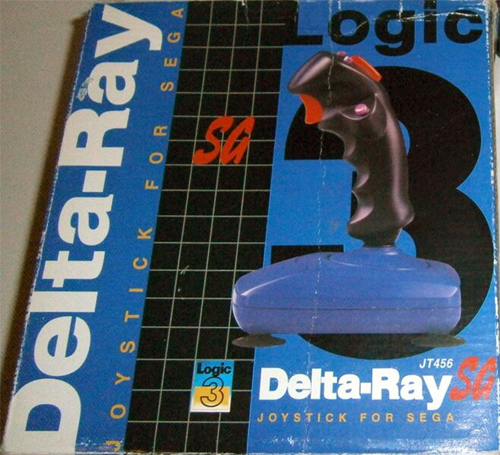
|
Logic 3 Delta Ray
SG
- JT 456 Includes some half-dozen fire buttons! Where's the logic in that? |

|
Logic 3
Manta-Ray - LG 203 Palm-shaped joystick that features 2 fire buttons and auto-fire. |
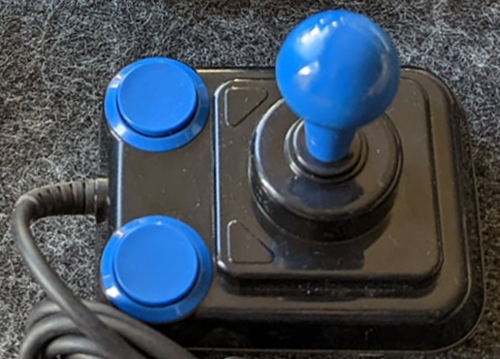
|
Logic 3
Pinto
- JT 151 Smaller version of Logic 3's Quatro.. |
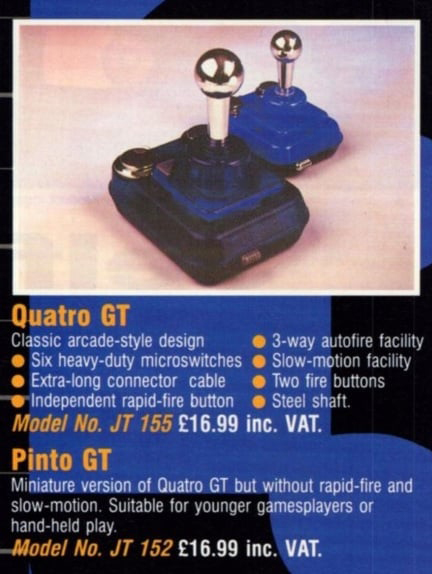 |
Logic 3
Pinto GT
- JT 152 Smaller version of Logic 3's Quatro GT but w/o auto-fire and slow-motion. |
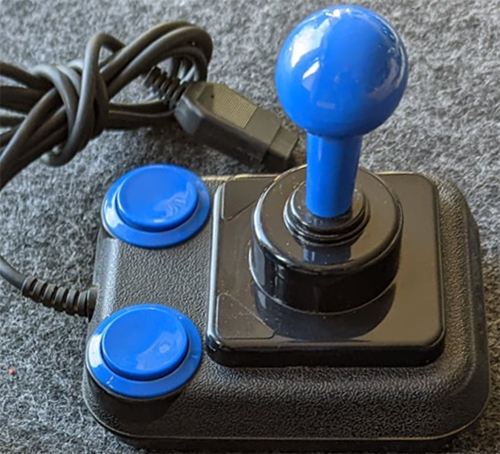 |
Logic 3
Quatro Similar to Coin Control's Competition Pro Deluxe, but with fake additional buttons and no auto-fire. |
 |
Logic 3
Quatro GT
- JT 155 Same as Coin Control's Competition Pro Deluxe but with a slow-motion feature. |
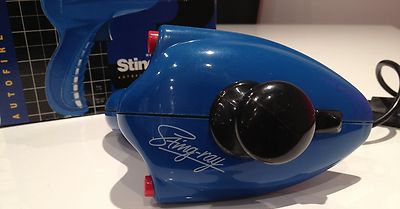
|
Logic 3
Sting-Ray - LG 331 Blue pistol grip handle-shaped joystick that features 2 fire buttons and auto-fire. |
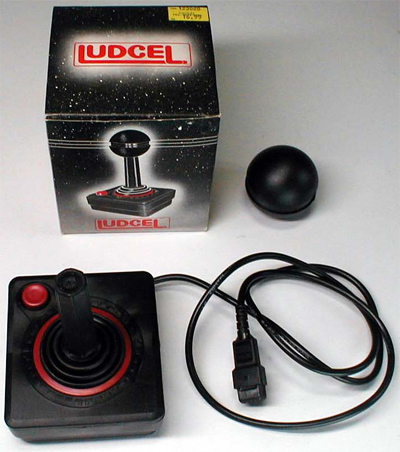 |
Ludcel joystick Blatant ripoff of Atari's standard VCS CX40 joystick that includes a joystick top similar to Pusher's The Grabber. |
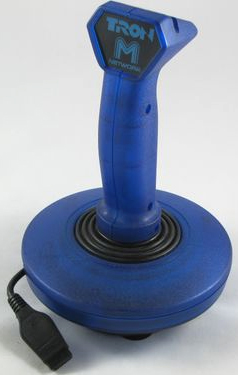
|
M Network Video Games TRON
M Network This is a favorite among collectors. It was first available for free in a Special Pack that included Adventures of TRON and TRON Deadly Discs. It was later available via an offer inside copies of those games for $24.95. Replicating the arcade game's stick, this large controller has a wide round base and is easily distinguishable by its bright blue plastic shell. This was made by Championship Electronics and is similar to their Champ Reel-Up controllers, except for the translucent blue casing and similar TRON arcade coin-op joystick. |
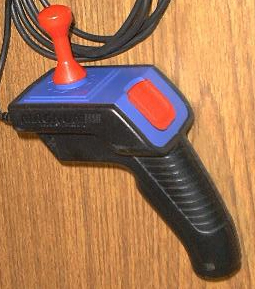 |
Mastertronic Magnum Another variant of the Milton Bradley MBX design. |
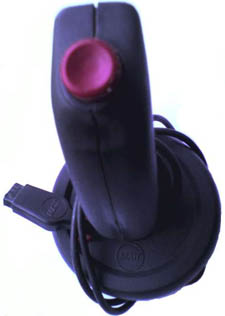 |
Matt joystick Made in Poland. |
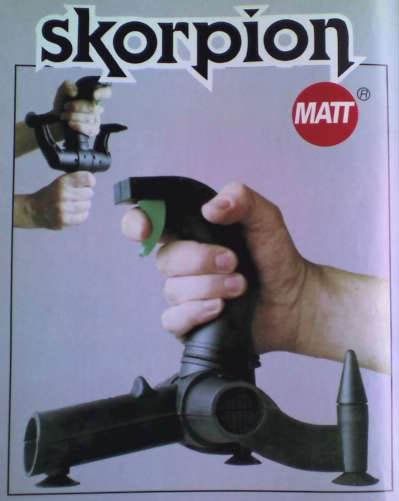 |
Matt Skorpion Featuring... well... one of the most radical designs for a controller. Made in Poland. |
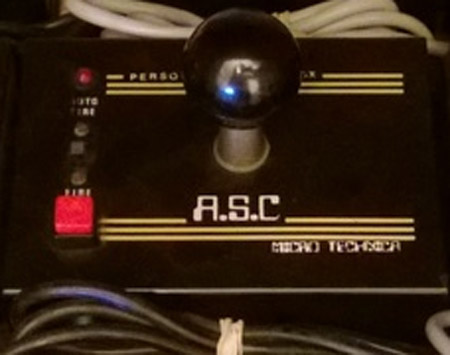 |
MicroTechnica A.C.S. Sturdy microswitch controller made in Greece and released in 1985. It features auto-fire with an LED, and a second pass-thru joystick port on the backside, so that Amstrad CPC (who had only one joystick port) users could connect a second joystick to their computer. A.S.C. stands for Amstrad / Spectrum / Commodore. Identical to the JMS Professional Joysitck. Micro Technica is the same company as John Micro System. The company was renamed when his son joined the company. |
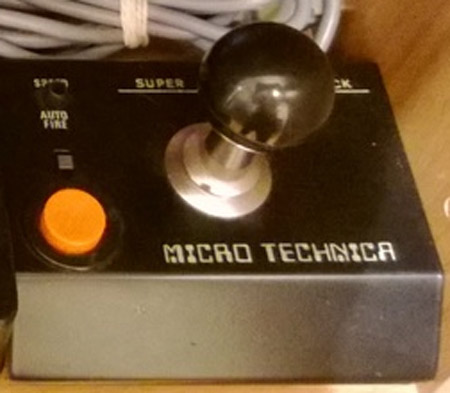 |
MicroTechnica Super Control Joystick Sturdy microswitch controller made in Greece that features speed and auto-fire switches. |
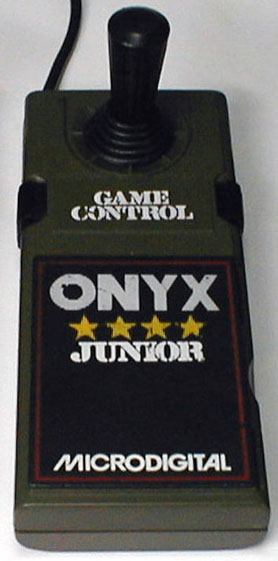 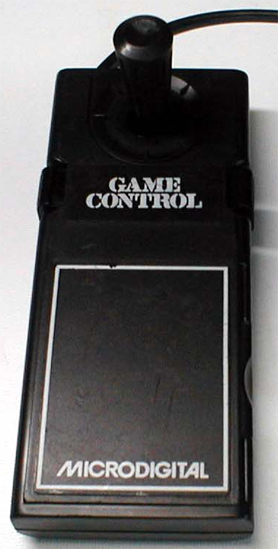 |
Microdigital Game Control Standard controller for the Onyx Junior system. A variant exists that is black. |
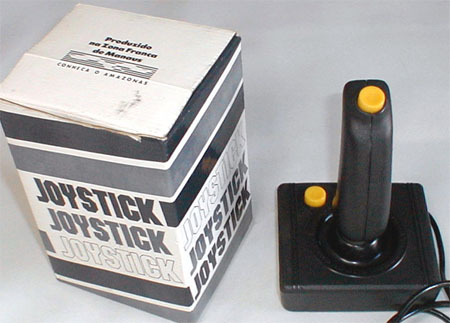 |
Milmar Joystick Standard controller for the TV Computer System. The handle is identical to the Spectravision/Spectravideo Quick-Shot 318-101. |
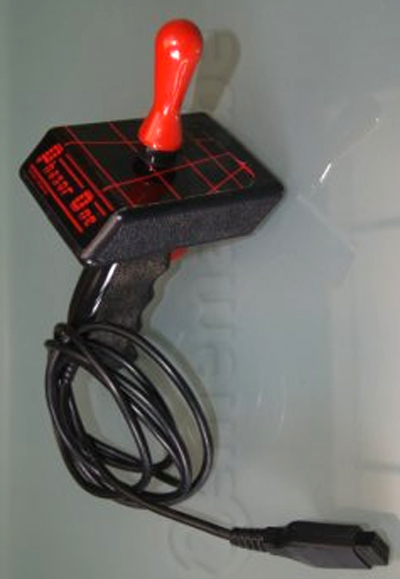
|
Mindscape Phasor One Same as Mindscape's Power Player Controller. Was made with either an all-black or all-red case. |
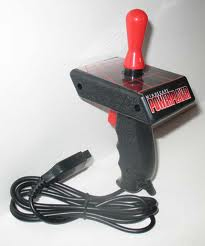 |
Mindscape Power Player Controller A black trigger-stick with red button and handle. A sticker with the controller's name lines the outer edge. Sold in Europe as the Phasor One. |
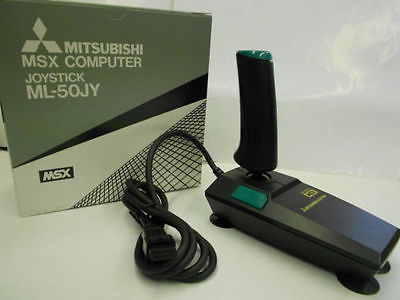 |
Mitsubishi joystick - ML-50JY Marketed for use with the MSX HX-10 computer. This was designed by several different manufacturers under different names, model numbers, and colors (Canon, Fujitsu, Gradiente, Panasonic, Hitachi, Mitsubishi, Sanyo, Toshiba, Victor). |
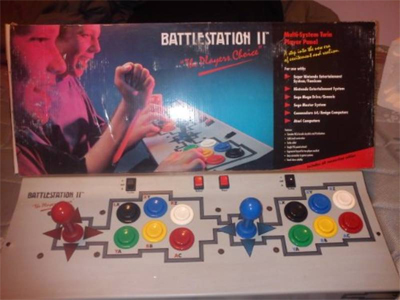 |
Multicoin Amusements Battlestation II A huge, 2-player controller that came in a storage bag. Can be configured for several different systems. |
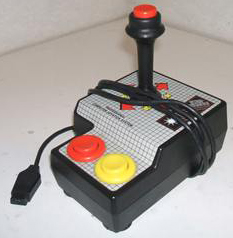 |
Multicoin Amusements Star Cursor - MCA-201 |
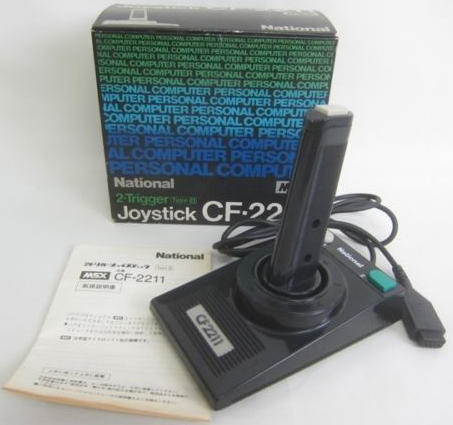
|
National 2-Trigger Joystick - CF 2211 |
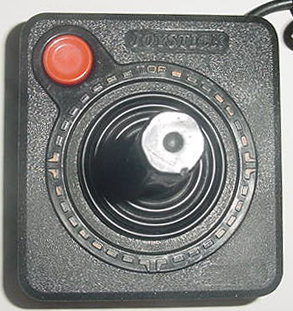 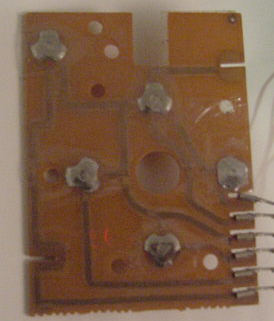 |
New America Corp A variant of the Atari standard joystick, but with "JOYSTICK" in raised letters on top of the base. There's also a small, rectangular area on the top of the base in the lower-right corner that appears to have been for a plate or sticker. The pcb has connections for a 2nd fire button, which was on New America Corp's CJ-8352 model, so it appears they used the same pcb for both. |
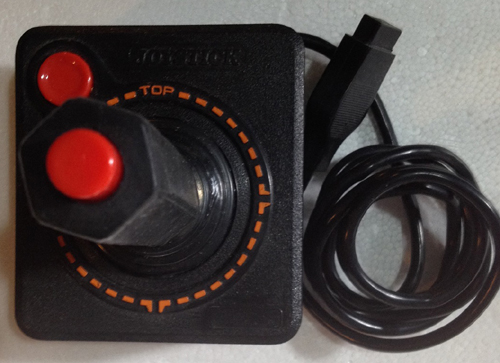
|
New America Corp - CJ-8352 Similar to their standard CX-40 knockoff but with "JOYSTICK" in raised letters on top of the base and a thicker handle that has a 2nd fire button on top of it. There's also a small, rectangular area on the top of the base in the lower-right corner that was for a sticker, judging from the box photos. There's also a variant that doesn't have the raised lettering on the top of the base. The pcb didn't have extra connections for the 2nd fire button. |
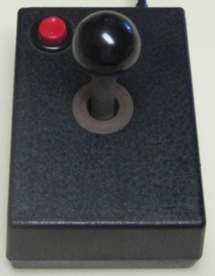
|
Newport Controls Prostick I Rare joystick only available through mail order. Uses leafswitches. Some bases are half-red. |
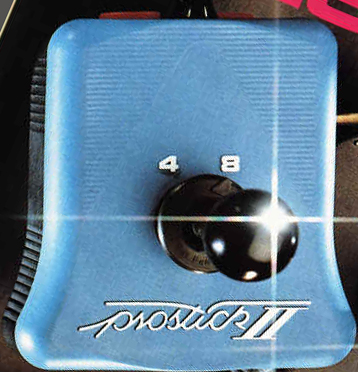
|
Newport Controls Prostick II Features 2 fire buttons and the ability to switch between 4-way and 8-way. Included a 5-year warranty. Retail price $24.95. A variant exists that has a single fire button, different joystick base, and a different type font on the base. |
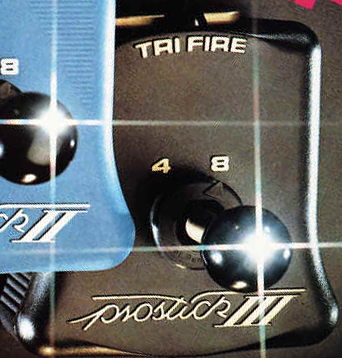
|
Newport Controls Prostick III Features the ability to switch between 4-way and 8-way, and a 'Tri-Fire Bar' that offers 2 independent fire buttons. Also comes with a 'Y' adapter cord for use on Colecovision. Included a 5-year warranty. Retail price $29.95. |
| Newport Controls Prostick 2002 Designed for the TI-99/4 and TI-99/4a computers and features a switchable gateplate. Included a 5-year warranty. Retail price $29.95. |
|
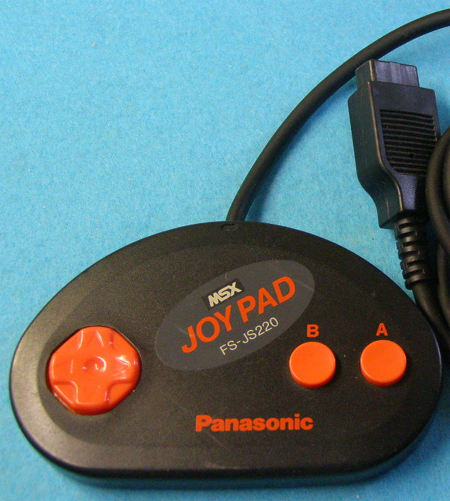 |
Panasonic MSX Joy Pad - FS-JS220 Marketed for use with the MSX computer. |
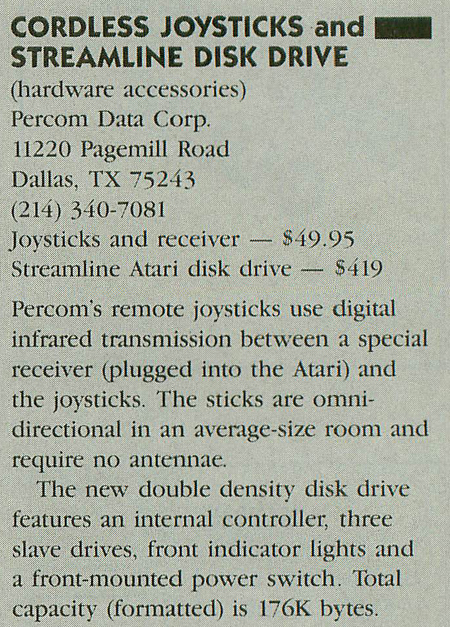 |
Percom Data Corp. Joycard Used infrared instead of RF. Retail price $49.95. |

|
Philips
Philips Handcontrol VU 0001 Identical to an Odyssey2 controller. Intended for use on the non-MSX VG 5000 computer and its VG 5200 joystick interface, but is actually MSX compatible, although it lacks the second trigger button (both buttons are 'button 1'), making some games difficult or impossible to play. |

|
Philips
Joystick NMS1112/00 Similar to the Atari Standard joystick but with 2 fire buttons. The stick looks what has a 3rd fire button but it's solid plastic. There's also "TOP" lettering and rings with arrows around the joystick. |

|
Philips
Joystick VU 0005 Intended for use on the non-MSX VG 5000 computer and its VG 5200 joystick interface, but is actually MSX compatible, although it lacks the second trigger button (both buttons are 'button 1'), making some games difficult or impossible to play. |
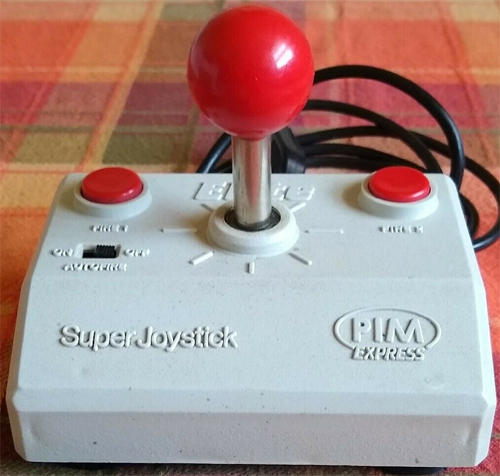 |
PIM Express
Super Joystick A microswitch joystick featuring 2 fire buttoms and auto-fire. |
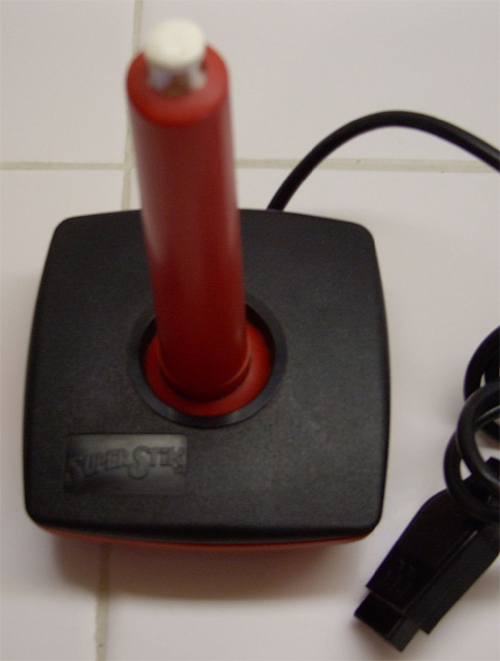 |
PPI (Personal Peripherals, Inc.) Super Stik A red-handled joystick with a button on top of the stick. Model J1020 is a set of joysticks wired together and designed for use with the TI-99/4a computer. |
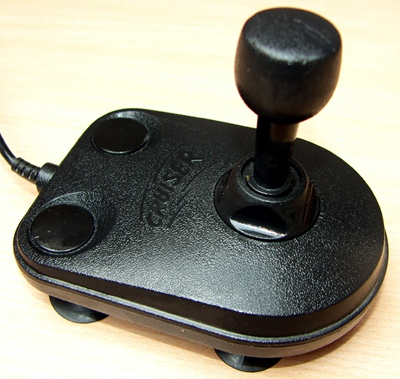
|
Power Play The Cruiser Features a 3-level tension adjustment, 2 fire buttons, and microswitches. Besides black, it was also available in several different color styles, including clear. |
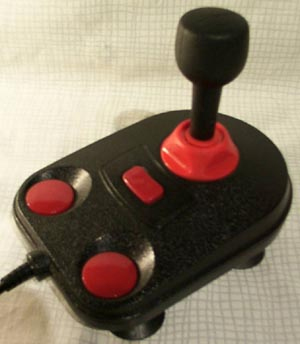 |
Power Play Cruiser Turbo Features auto-fire. |
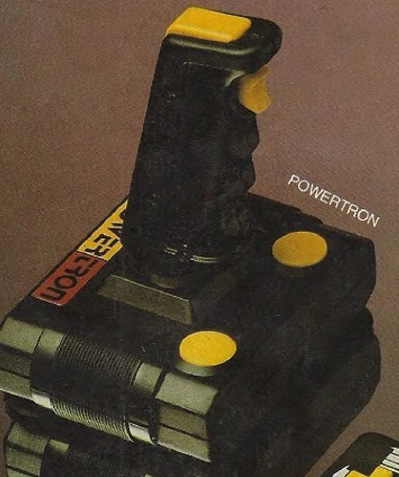
|
PowerTron Powertron I Nearly identical to the Commodore VG-115 joystick. There were also models for Sega (#2), Nintendo (#3), and Dynavision II (#4). |
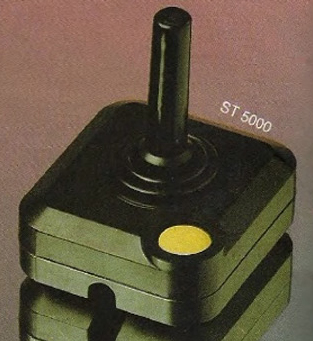 |
PowerTron ST 5000 Identical to the Gemini Gemstik VG170. |
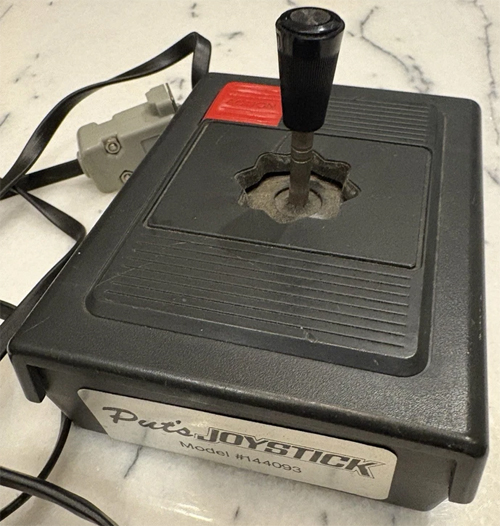 |
Put's Joystick 144093 Identical to the Odyssey2 controller. So identical in fact that they look like repurposed O2 controllers with the cable terminated with a typical Radio Shack DB-9 jack. |
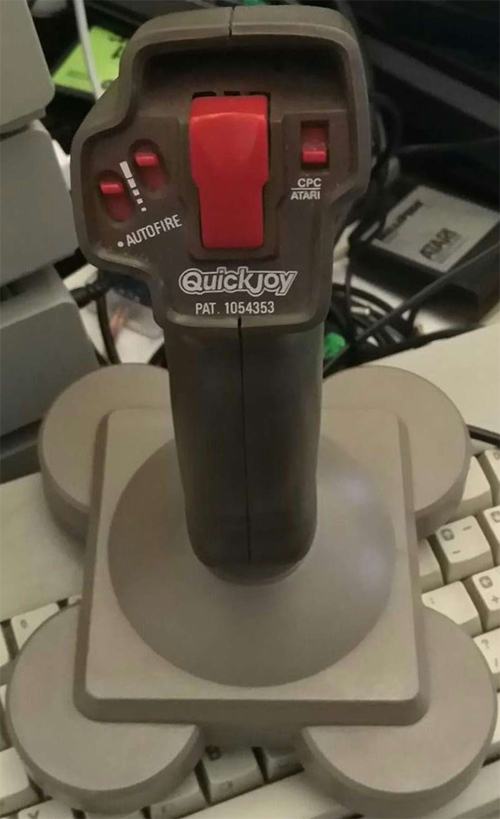 |
QJ (QuickJoy) Quality Joystick Identical to the SG Fighter and Spectravideo's SG Fighter A-Storm. |
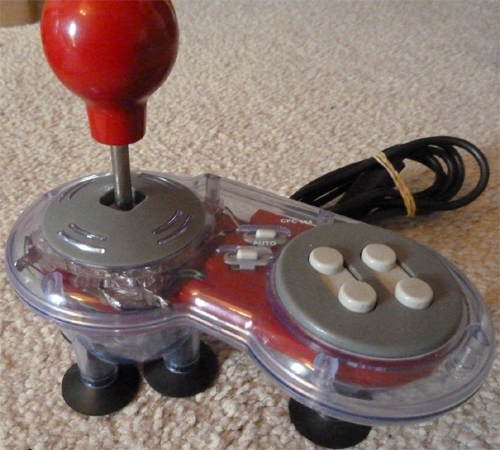 |
QJ (QuickJoy) Quality Joystick Hyerstar
|
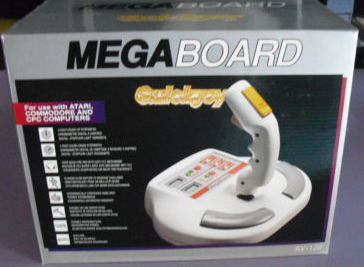 |
QJ (QuickJoy) Quality Joystick MegaBoard
|
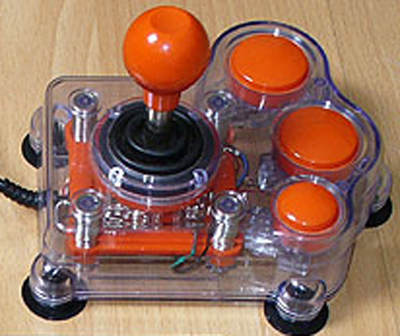 |
QJ (QuickJoy) Quality Joystick MegaStar A 3-button controller with a clear plastic shell. |
| QJ (QuickJoy) Quality Joystick MegaStar Jr.
|
|
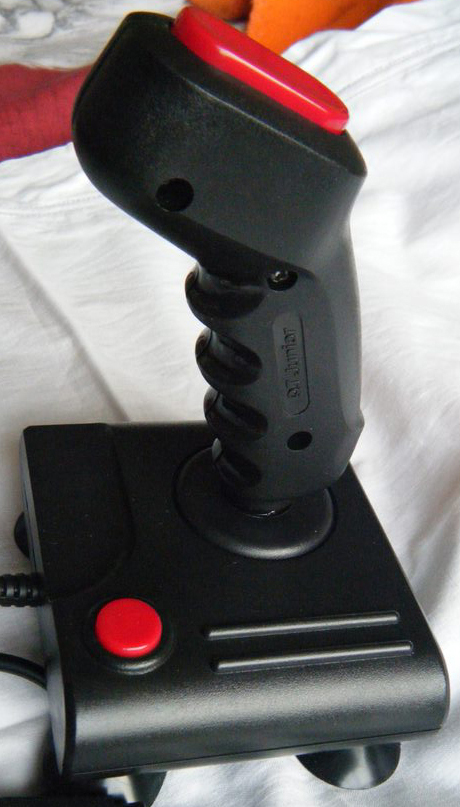
|
QJ (QuickJoy) Quality Joystick QJ
Junior - SV-119 Similar to the SV-121 except for having a fire button on the base was removed and lacking a 'trigger' button on the joystick handle. |
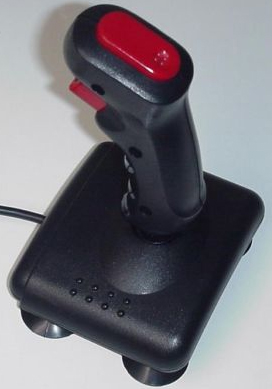 |
QJ (QuickJoy) Quality Joystick QJ I Turbo - SV-121 Similar to the SV-119 except the fire button the base was removed and is now a 'trigger' button on the joystick handle. |
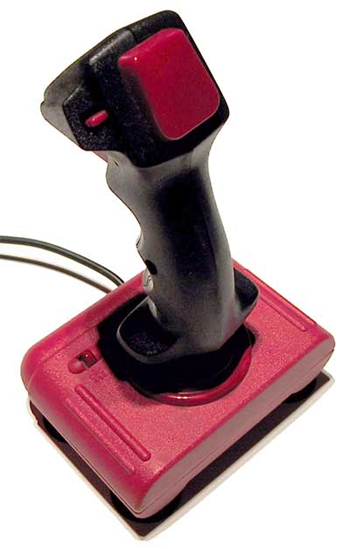
|
QJ (QuickJoy) Quality Joystick QJ II Turbo - SV-124 Features a large, over-sized fire button on the top of the joystick, and auto-fire. 2 different boxes exist. |
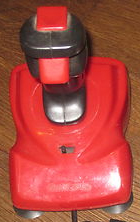 |
QJ (QuickJoy) Quality Joystick Quickjoy III Supercharger - SV-123 Came out in Europe at the same time with QJ I Turbo, QJ II Turbo, and QJ V, which were all also marketed here under Quickjoy label. |
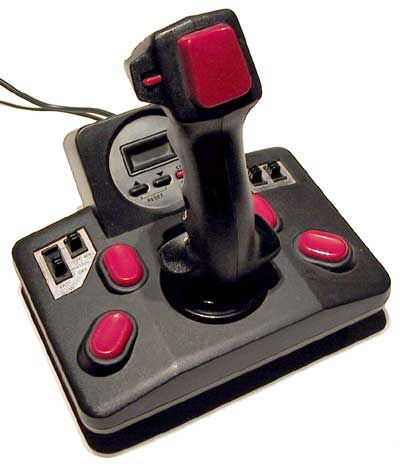
|
QJ (QuickJoy) Quality Joystick Quickjoy V Superboard - SV-125 Features the same joystick as the QJ II Turbo along with auto-fire, but with a multitude of buttons and switches and a built-in stop watch/timer. |
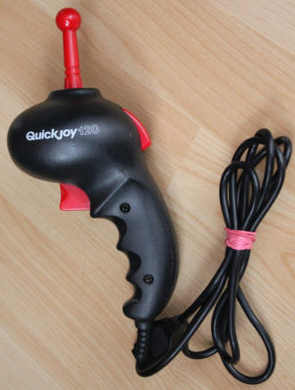 |
QJ (QuickJoy) Quality Joystick QuickJoy 120 - SV-120
|
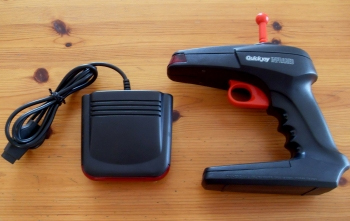 |
QJ (QuickJoy) Quality Joystick QuickJoy Infrared - SV-130 Similar to the QuickJoy 120 except that it's wireless (infrared). |
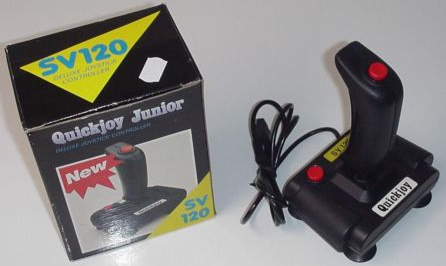 |
QJ (QuickJoy) Quality Joystick QuickJoy Junior - SV 120
|
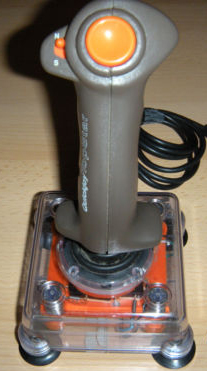 |
QJ (QuickJoy) Quality Joystick QuickJoy Top Star
|
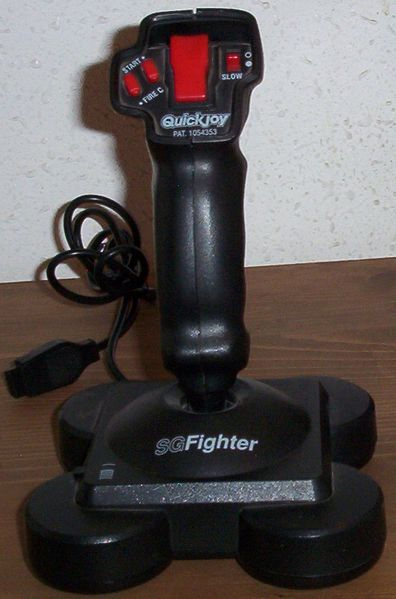 |
QJ (QuickJoy) Quality Joystick SG Fighter Identical to Spectravideo's SG Fighter A-Storm. Unique 2-button joystick with LEDs and extra controls on the stick. Top of the joystick is marked PAT 1054353. |
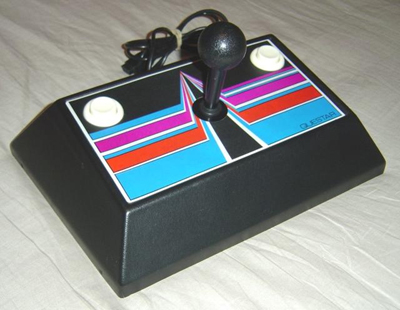 |
Quest Industries Inc. Questar II Joystick Console - QC-II Features 8-way leafswitch joystick with 2 fire buttons. |
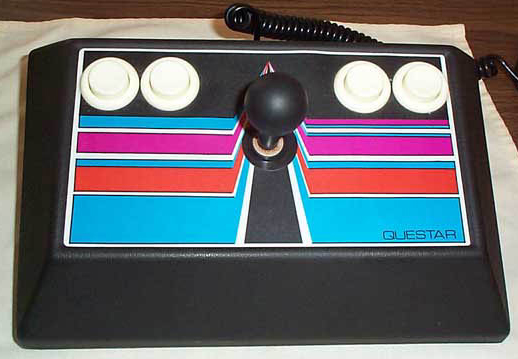 |
Quest Industries Inc. Questar IIC Joystick Console - QC-IIC Features 8-way leafswitch joystick with 2 sets of fire buttons. Designed for use with the Colecovision. Retail price $42.95. |
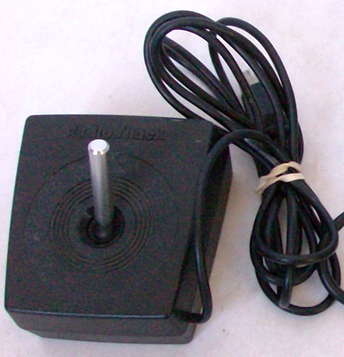 |
Radio Shack joystick - CAT. NO. 26-3008 |
 |
Recoton joystick Identical to Kraft's Ace joystick except for having "RECOTON" in raised, silver lettering on the top of the case, instead of "ACE". |
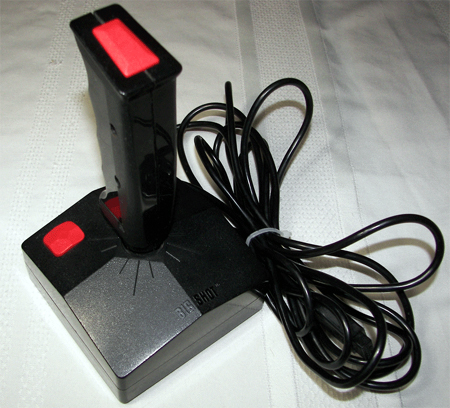 |
Recoton Big Shot
Tournament Joystick Features 2 fire buttons, auto-fire, and a 12' cord. |
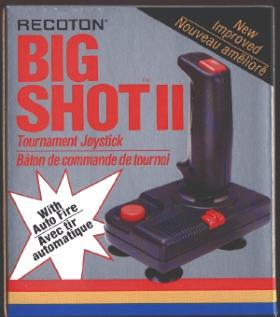 |
Recoton Big Shot II
Tournament Joystick Features 2 fire buttons, auto-fire, and 4 suction cups on the bottom. |
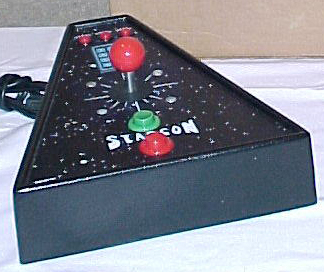 |
REI
Starcon 2600 An arcade style joystick made in very limited quantities by Fred Rubatino of Rubatino Engineering Inc. This stick is fairly heavy, being made out of a wooden base with arcade components. Advertised in a magazine in 1984-85 and priced at $35. REI originally had 100-200 vacuum-formed shells made, but only sold about 20-25 controllers at that time, and years later (in 2003) sold off his remaining stock at $100 each, for a total of 30-50 controllers. The star pattern used on the overlay is a composite of 2 constellations. The 2600 version used the same case but only had a joystick and 1 button. |
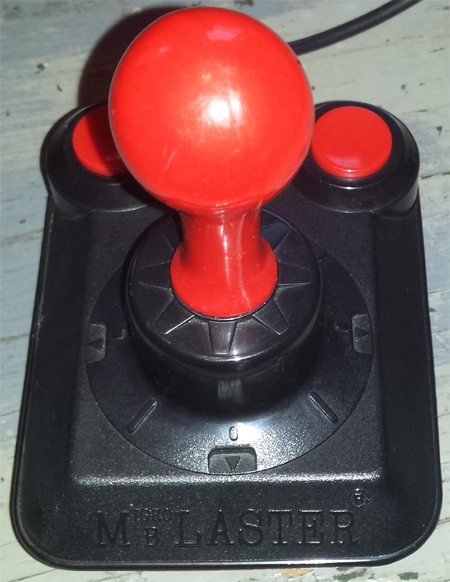 |
Replay MicroBlaster A microswitch controller with a steel shaft and auto-fire. Compumart had the exclusive rights to distribute this in the UK where it sold for £12.95 and was guaranteed for 12 months. |
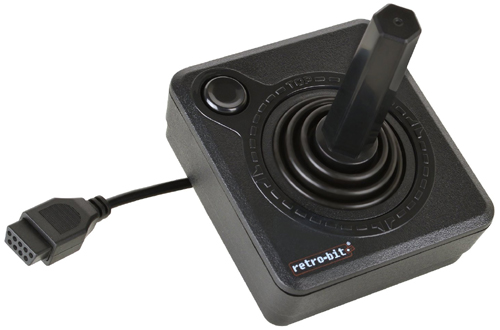
|
Retro-Bit Retro 2600 Identical to Atari's standard VCS CX40 joystick. Retail price $16.99. |
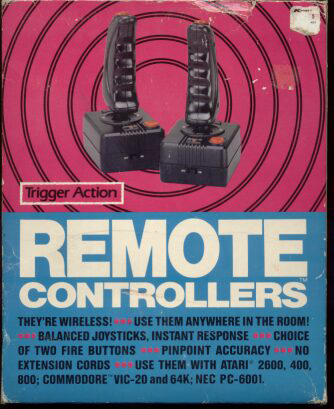
|
RGA International Wireless Remote Video Controllers - RGA-118 Sold in pairs. Each joystick has 2 buttons and each is marked Right or Left. The box states the controllers feature "trigger action" but there's no button on the joystick for your index (trigger) finger. There's one on the base and one on top of the joystick. The handle is similar to a Quick-Shot. |
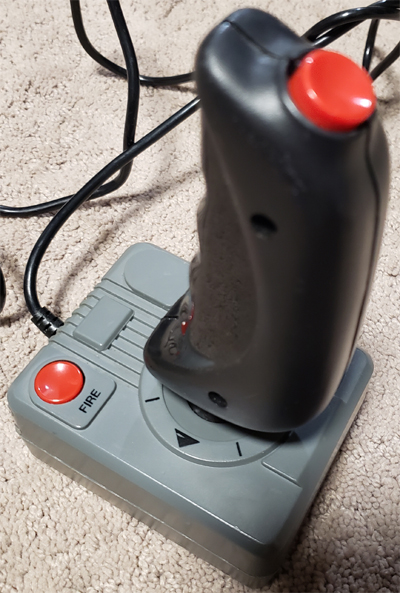
|
RGA International Video Controller - RGA-1160 A 2-button controller with a handle identical to a Spectravision/Spectravideo Quick-Shot and a small, gray base. It has a compartment on the bottom that holds a 9 volt battery, but oddly enough there's no wires to connect the battery, so this might be the same joystick used with the RGA-118 remote controllers. |
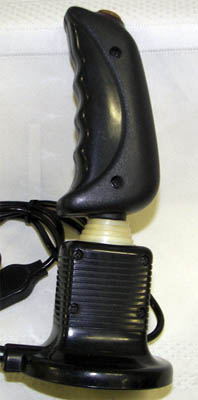 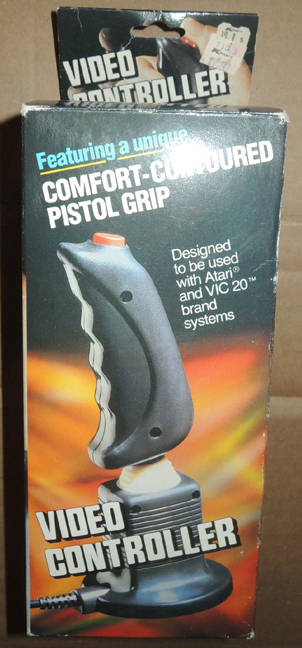 |
RGA International Video Controller - RGA-1170 The handle is identical to a Spectravision/Spectravideo Quick-Shot, with a small 'pedestal' base and a four foot cord. |
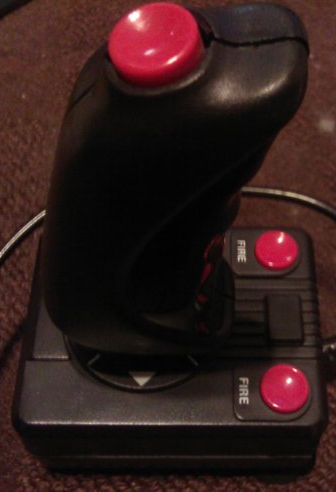 |
RGA International Video Controller - RGA-1250 A 3-button controller with a handle identical to a Spectravision/Spectravideo Quick-Shot and a black base similar to RGA's 1160 but with 2 buttons. It has a compartment on the bottom that holds a 9 volt battery, but oddly enough there's no wires to connect the battery, so this might be the same joystick used with the RGA-118 remote controllers. |
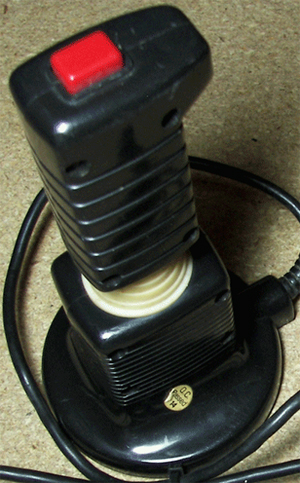 |
RGA International Video Controller Jr. Similar to the Video Controller but with a shorter and square shaped joystick handle. |
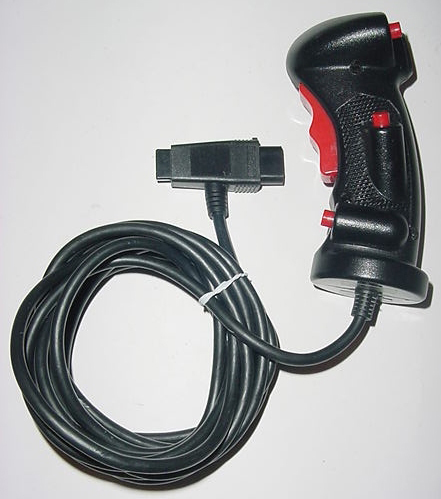 |
Richwide Technologies, Inc. Grip-It - G-101 Made in 1992, Grip-It is a one-handed controller similar in design to the Game Handler. It's designed for both the Nintendo NES and any system that uses a standard D-sub 9 pin connector (Sega Genesis, Atari, etc) by way of a special double-ended connector. It features a directional pad, 4 buttons, and an auto-fire switch. There are also 2 LED lights on the top. Patent #91300070-1 |
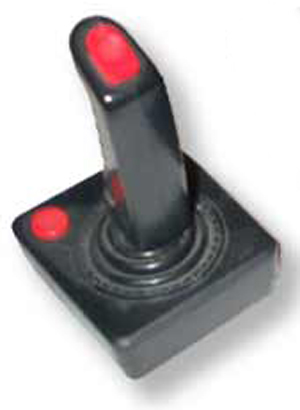
|
Rinco joystick Another 2-button Atari standard variant. Standard controller for the Rinco Television Computer System 128-in-1 system. The base looks identical to Dar Yar's joystick, with rubber boot around the base of the stick is actually part of the plastic shell. Likely uses a very cheap leafswitch setup, with wires going to screws for the bottom contacts. The stick itself is similar to a Quick-Shot and others, but with an elongated fire button on top. |
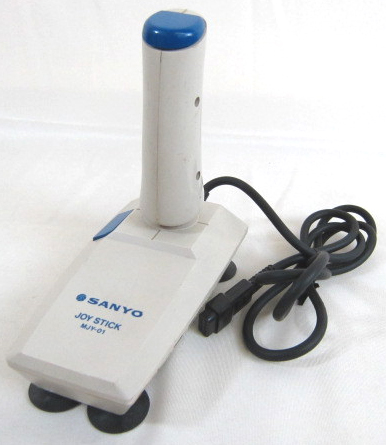 |
Sanyo Joy Stick- MJY-01 Marketed for use with the Sanyo MPC-200 computer. This was designed by several different manufacturers under different names, model numbers, and colors (Canon, Fujitsu, Gradiente, Panasonic, Hitachi, Mitsubishi, Sanyo, Toshiba, Victor).
|
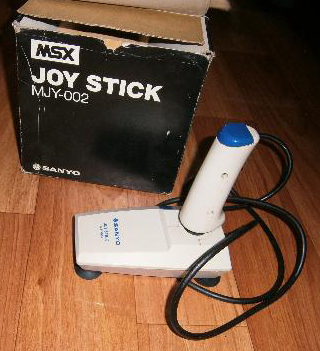 |
Sanyo MSX Joy Stick - MJY-002 Marketed for use with the Sanyo MPC-200 computer. This was designed by several different manufacturers under different names, model numbers, and colors (Canon, Fujitsu, Gradiente, Panasonic, Hitachi, Mitsubishi, Sanyo, Toshiba, Victor).
|
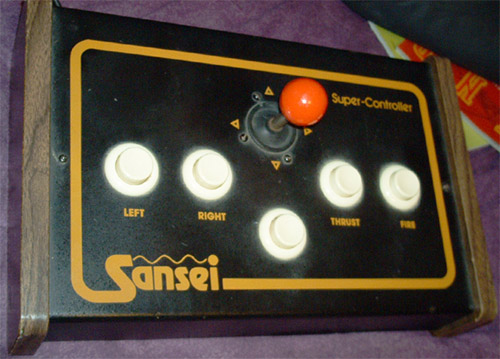 |
Sansei Super-Controller A joystick with an Asteroids-style button layout. |
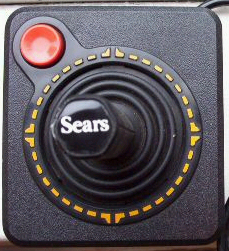 |
Sears Video Arcade joystick - CX10 Made by Atari for the Sears Tele-Games Video Arcade system. Identical to Atari's CX10 joystick, except for having a "Sears" hex-shaped plate. |
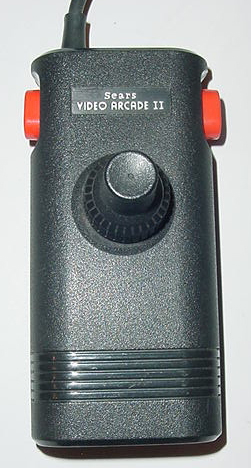 |
Sears Video Arcade II joystick/paddle Made by Atari for the Sears Video Arcade II system. They sold them with their 2800 system. Sold as a pair and featuring combination joystick+paddle controls. |
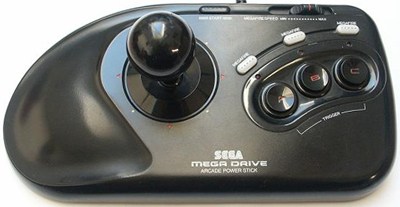 |
Sega Arcade Power Stick I - MK-1655-50 |
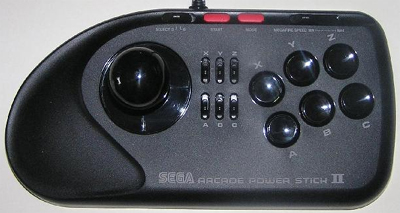 |
Sega Arcade Power Stick II - MK-1627-44 |
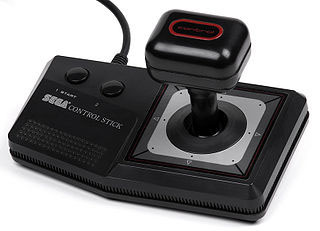 |
Sega Control Stick Right-handed controller. Replaced the SJ-300/300M. Retailed for $20-$25. Also available packaged with the SMS cart OutRun (sold together for $45 to $65) or the Rapid Fire Unit. |
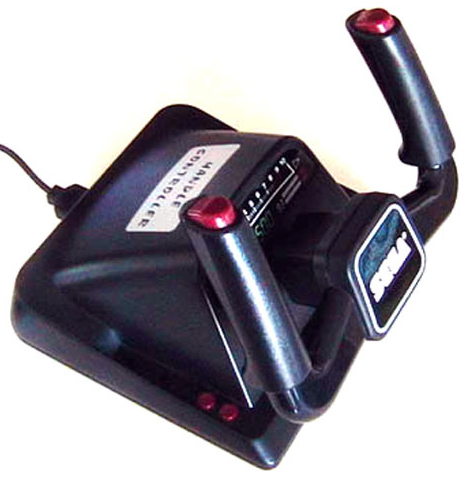 |
Sega Handle Controller Designed for driving/flying games. Only released in Europe.
|
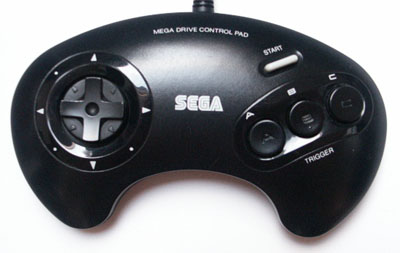 |
Sega Mega Drive Control Pad - 1650 |
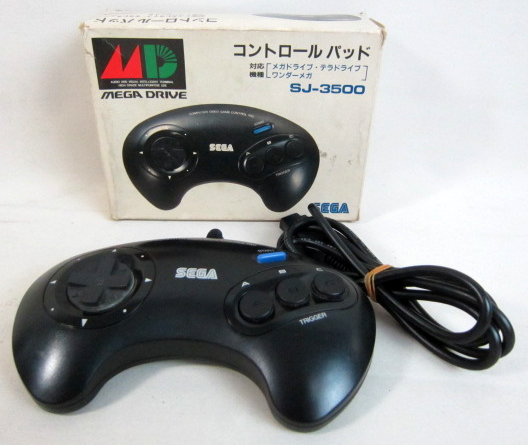 |
Sega Mega Drive Control Pad - SJ-3500 Same as 1650 except with a blue start button. |
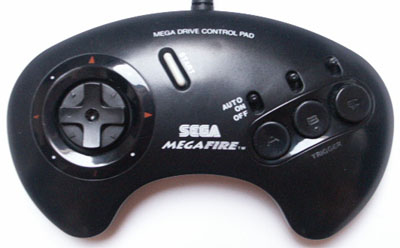 |
Sega Mega Fire - MK-1657-50 |
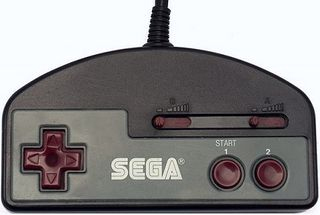 |
Sega SG Commander Only released in Europe. It's basically the same as the original Sega pad except it has two switches which can enable auto-fire for each button. |
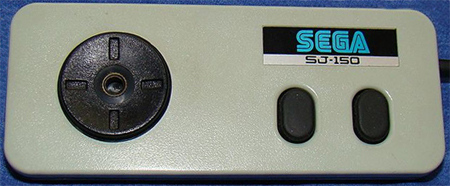 |
Sega SJ-150 Standard controller bundled with SG-1000 II consoles. It replaced the SJ-200, and copied its design from the Nintendo Famicom, sporting a D-Pad and two face buttons. The direction pad has a removable thumb stick. |
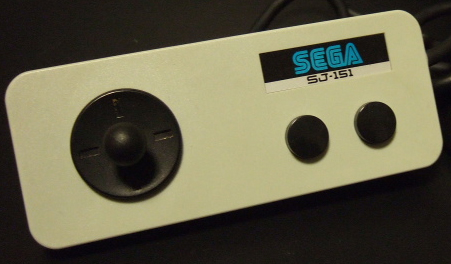 |
Sega SJ-151 Rare controller and almost identical to the SJ-150 but features round buttons made of hard plastic, as opposed to the SJ-150's oval-shaped rubber buttons. The direction pad has a removable thumb stick. This was released for a short time before the SJ-152. |
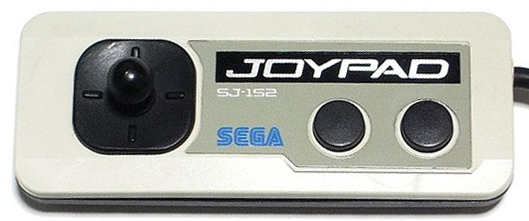 |
Sega Joypad - SJ-152 Standard controller for the Sega Mark III console. Features a rounded square pad instead of a circle, as well as a removable thumb stick. Precursor to the Sega Master System controller. |
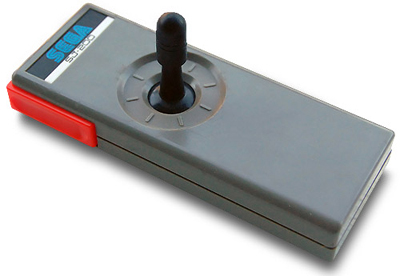 |
Sega SJ-200 Came with the SG-1000 console and also sold separately for the SC-3000. Has 2 fire buttons, one on either side. |
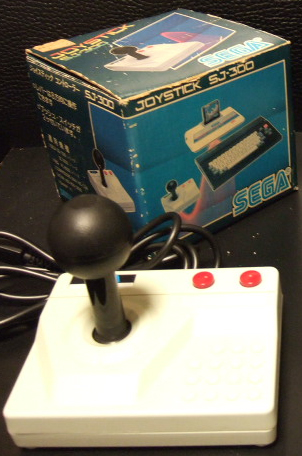 |
Sega joystick SJ-300 Made for the SG-1000 console. |
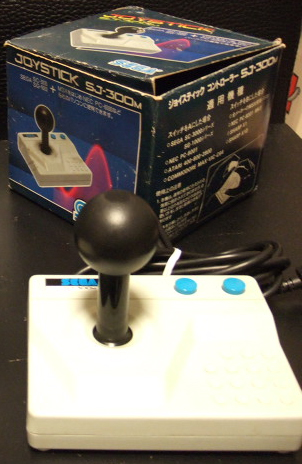 |
Sega joystick SJ-300M Identical to the SJ-300 except it has blue buttons instead of red. |
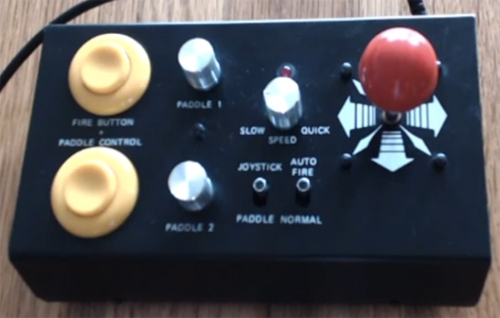 |
Sigma
Multi-Function
2100 All-in-1 combination joystick+paddle controller. It features a metal case, 2 fire buttons, and 2 small paddle controls. A small switch selects between the joystick and paddles. The 3rd dial adjusts the auto-fire. It also has suction cups on the bottom. Identical to the Elite Multi-Function 2002 and Euromax Micro-Handler. |
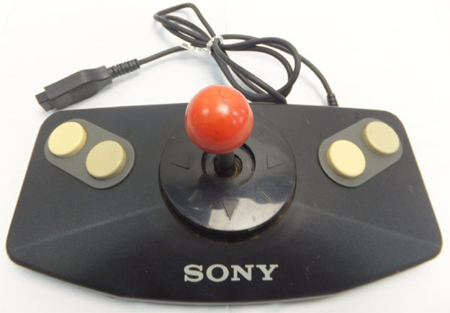 |
Sony joystick (model unknown) Features two sets of fire buttons for left or right-handed players. |
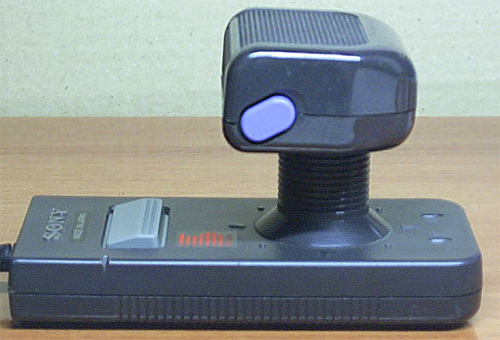
|
Sony Hit Bit joystick controller - JS-55 Marketed for the MXS computer. Similar to Sega's Control Stick. Features 3 fire buttons. Made in Japan and released in 1985. |
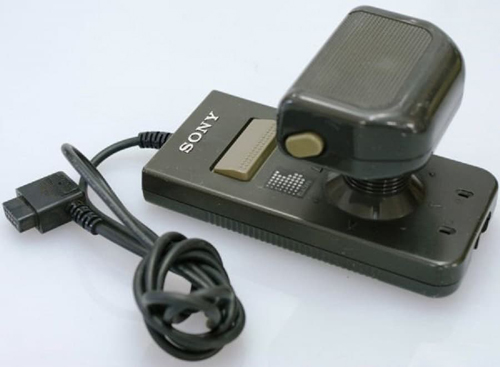 |
Sony Hit Bit joystick controller - JS-55E Identical to the JS-55 except having gray-brown buttons and a b&w label on the top case. Also no "Made in Japan" sticker on top. |
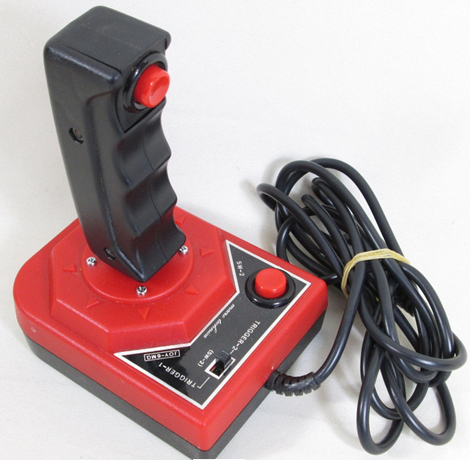
|
Spital JOY-6MG Marketed for use with the MSX computer. Has a switch for auto-fire. |
 |
SVI Spectravideo QuickShot - QS-115 Identical to the Spectravideo QuickShot II controller except it has a gray-colored base and a red auto-fire switch. |
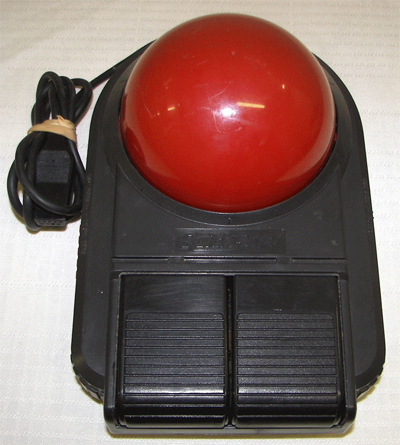 |
Spectravideo QuickShot - QS-116 Similar to the SV1, and functions like Roklan's Unroller Controller. Has a switch for auto-fire and a switch for either left or right-handed players. |
| Spectravideo QuickShot - QS-118 Another track-ball look-alike joystick controller. |
|
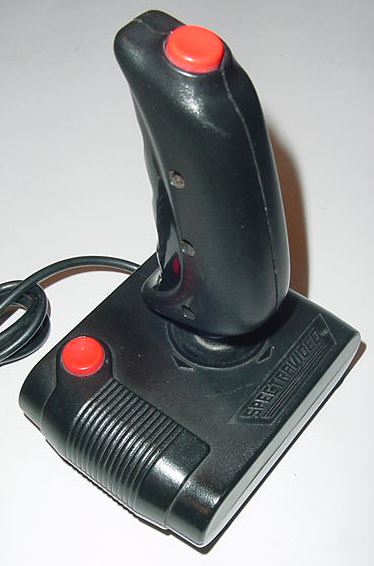
|
Spectravision/Spectravideo Quick-Shot - 318-101 Original model that features a grip-type joystick with a fire button on top, and another in the upper-left. This was the world's first ergonomic joystick. It was developed by Harry Fox and Peter Law, and patented in 1982 (U.S. Patent D271220). The pcb is marked SP318-101. Made in Hong Kong. A white version was also made for the MSX computers. Retail price $14.95. |
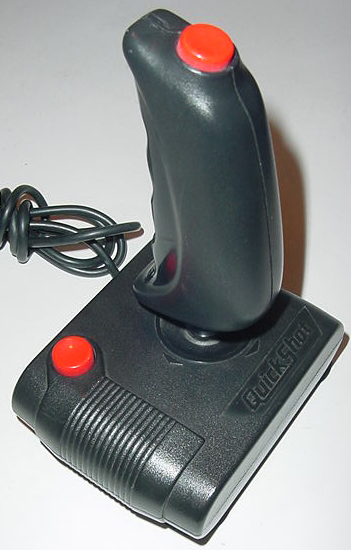
|
Spectravision/Spectravideo QuickShot - QuickShot I SV-101 Identical to the Quick-Shot SV-318-101 except for having QuickShot in raised letters on the top of the case, and different writing on the bottom of the case. The internals are also different. The pcb inside uses a leafswitch design and is marked SV 101 MSX Version 4.7 and dated 1985. Made in Hong Kong. Retail price $14.95. |
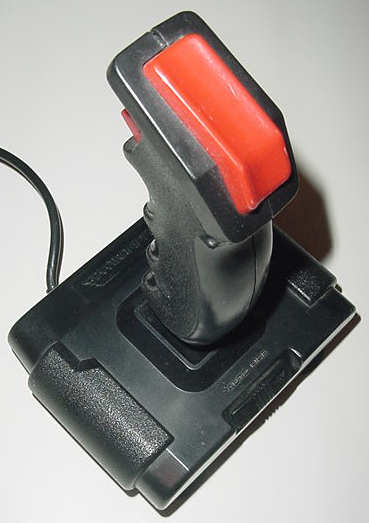 |
Spectravideo QuickShot II - 318-102 Features a single, large thumb firing button, larger joystick handle and an auto-fire switch on the base with on/off positions. Retail price $14.95. A white version was also made, for the MSX computers (under the Spectravideo name). Released in June 1983. Identical to the SVI Spectravideo QuickShot II controller with the same model number except it says "Spectravideo" in raised letters on the top of the case, and "Spectravideo" on the bottom. Made in Hong Kong. |
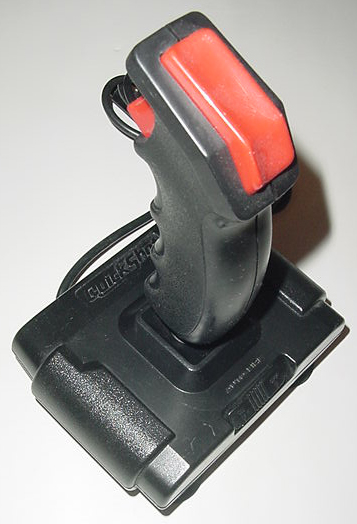
|
SVI Spectravideo QuickShot II - SV-318-102 Identical to the Spectravideo QuickShot II controller with the same model number except it says "QuickShot" in raised letters on the top of the case, and "SVI (R) Spectravideo" on the bottom. Made in Hong Kong. |
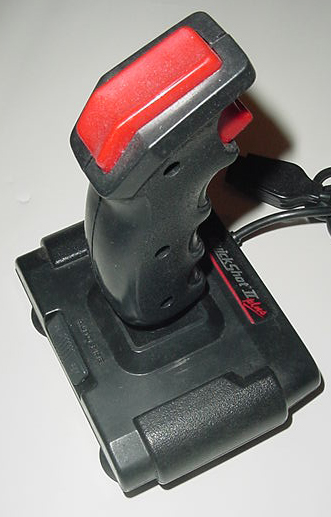 |
SVI Spectravideo QuickShot II Plus - SVI-102+ The difference between the II and II Plus models is that the Plus version used microswitches instead of leafswitches. |
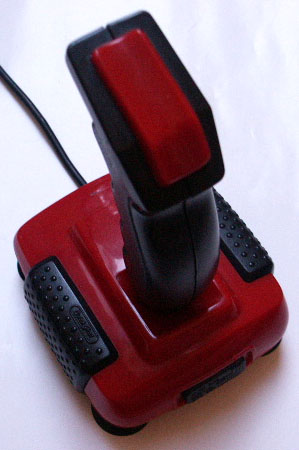 |
Spectravideo QuickShot II Turbo - QS-111 Has a switch on the base with 3 settings: auto-fire, manual fire, and CPC 464. A sticker on the bottom states it was made in Hong Kong. The internal pcb is marked model SV111A V3 and dated 1987. |
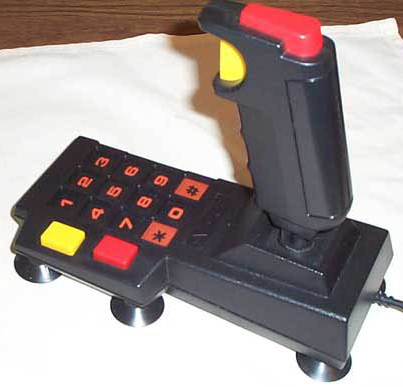 |
Spectravideo QuickShot III SV-103 Designed for the Colecovision. |
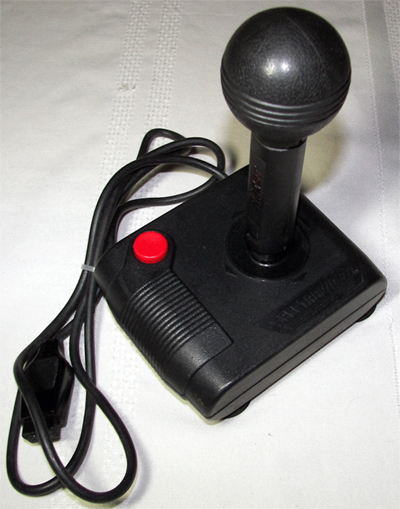 |
Spectravideo QuickShot IV Racer Similar to the Quick-Shot except for a larger ball-topped joystick. |
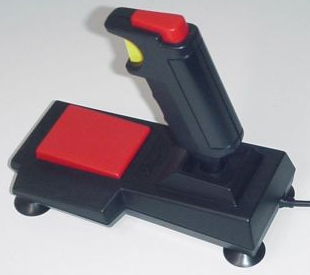 |
Spectravideo QuickShot V Similar to the QuickShot III except instead of the keypad, there's a huge fire button. |
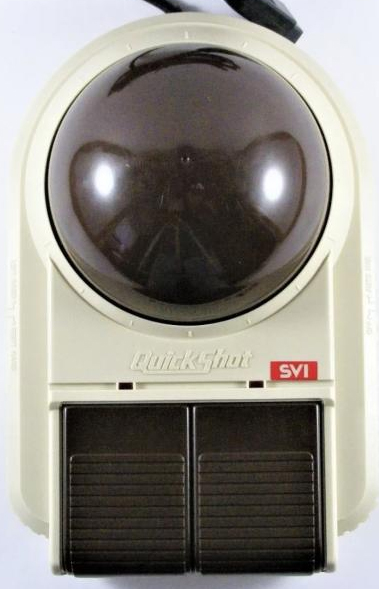 |
Spectravideo QuickShot
IX Deluxe Joyball Controller - SV1 Similar to the QS-116 and functions like Roklan's Unroller Controller. Has a switch for either left or right-handed players. |
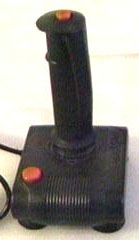 |
Spectravideo Quickshot Sportsman |
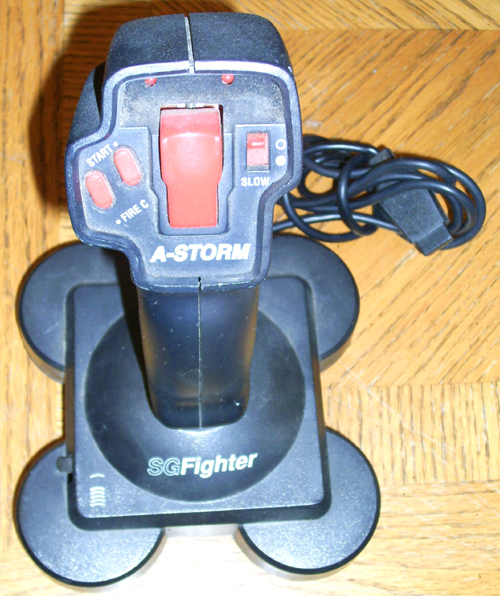 |
Spectravideo SG Fighter A-Storm - SV-401 Identical to QJ (QuickJoy) Quality Joystick's SG Fighter. Unique 2-button joystick with LEDs and extra controls on the stick. Bottom of the case is marked PATENT NO. 1054353. |
| Spectravision Sure-Shot Joystick Reviewed in the April 1983 issue of Antic. Described as being similar to Atari's standard VCS CX40 joystick but having 4 suction cups on the bottom and having 2 fire buttons (with one on top of the stick, which is a molded handgrip). This very likely was renamed the original Quick-Shot. |
|
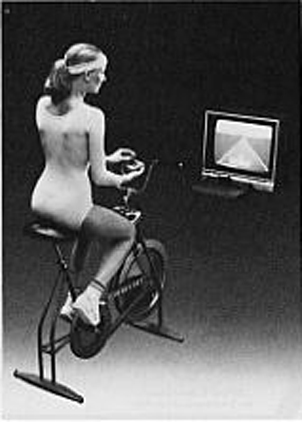 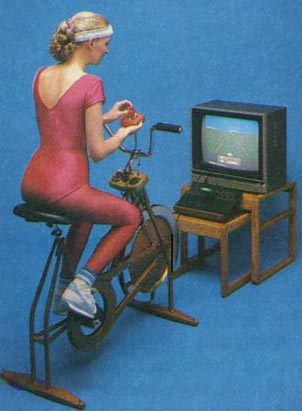
| Suncom The Aerobics Joystick This (red) joystick was designed as an interface between most standard stationary exercise bicycles and an ATARI 2600 or the computers. The joystick can be installed in ten minutes and works best with Activision's Enduro road race game. Retail price was $39.95. |
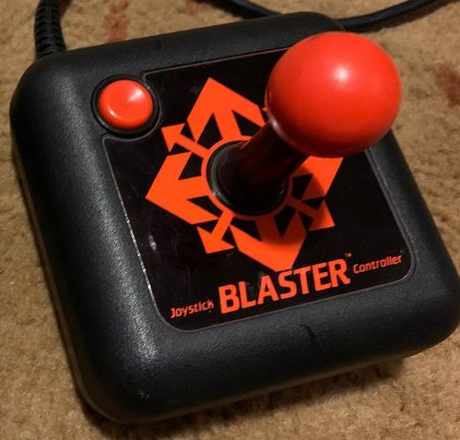 |
Suncom
Blaster Identical to the Slik Stick with a different decal. |
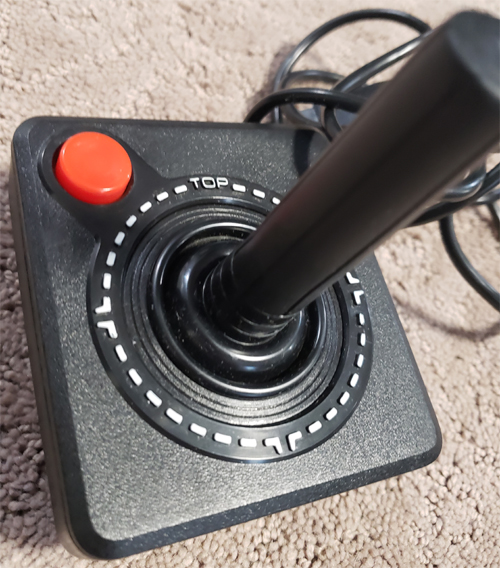
|
Suncom
JoyStick Controller Similar to Atari's standard VCS CX40 joystick but with only 2 dissimilar ridges on the rubber base. |
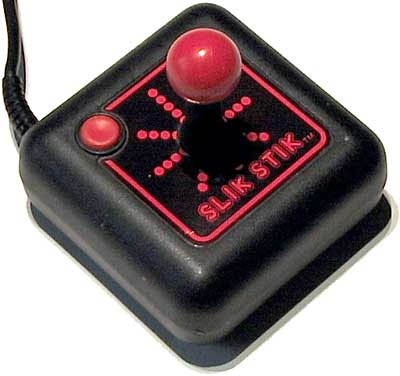
|
Suncom Slik Stik Small and simple joystick featuring a small red ball on the top of the joystick. Unlike most joysticks, this one features an internal metal shaft, making it very durable. Came with a 90-day warranty. Retail price $9.95. |
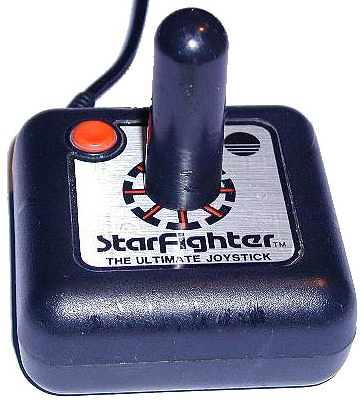 |
Suncom StarFighter Subtitled "The Ultimate Joystick". Similar to the Slik Stik but features a bullet-shaped joystick and a 2-year warranty. Retail price $16.95. |
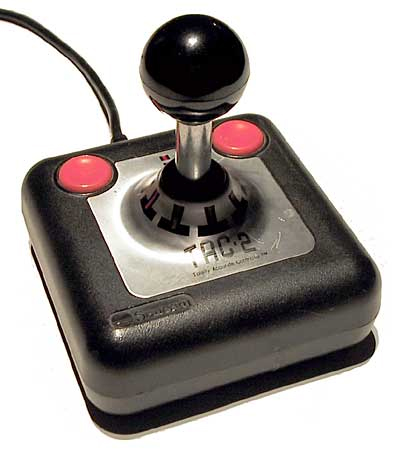
|
Suncom TAC-2 Features 2 fire buttons and the joystick uses a metal ball on base design, making it extremely durable. TAC stands for Totally Accurate Controller. A variant also exists with a white casing. Retail price $19.95. |
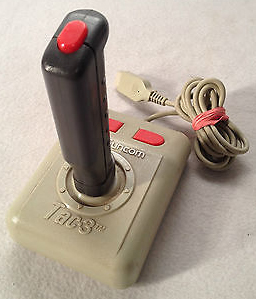 |
Suncom TAC-3 - TATO76 Features leafswitches and 3 fire buttons - one on top of the stick and 2 on the base. |
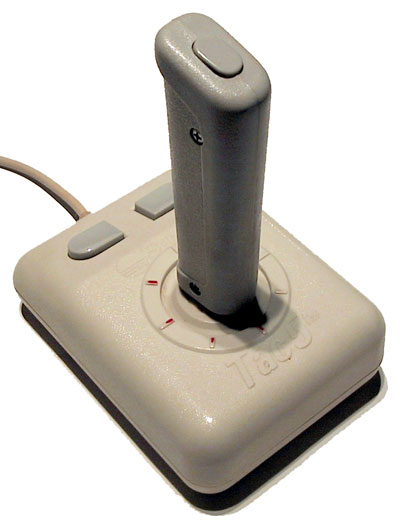 |
Suncom TAC-5 Uses micro-switches and features a handle that rotated slightly. |
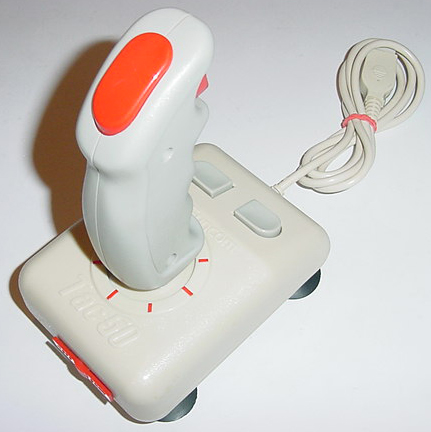 |
Suncom TAC-50 A 4-button joystick that uses micro-switches and featured auto-fire. |
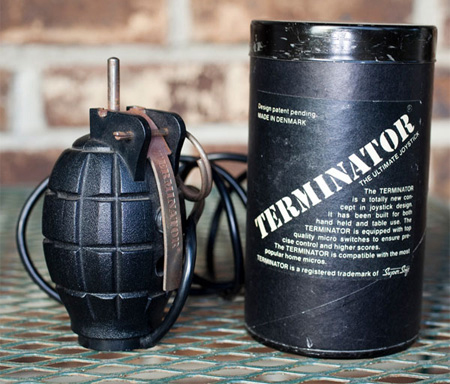 |
Super Soft Terminator The Ultimate Joystick A very unique controller in that it looks like a grenade! Made in Denmark. |
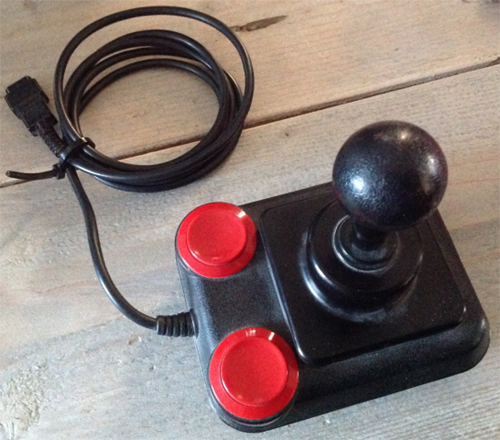
|
Suzo Competition Pro Joystick The original version used leafswitches and had a black stick. The case was marked "STC Rotterdam" (for Suzo Trading Company). The company is located in Rotterdam, Netherlands. Although they claim controllers sold in the UK were made in the Netherlands, the original Competition Pro leafswitch joysticks sold there have "Made in the U.S.A. molded in the bottom of the case, with a "Made in the U.K." sticker on top of it. |
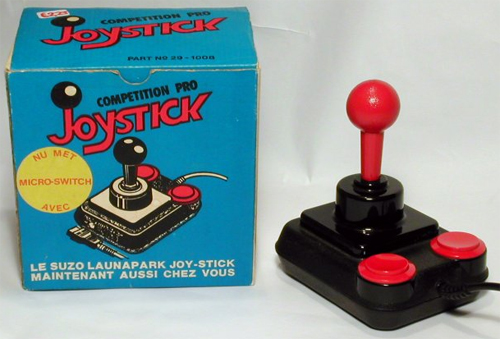 |
Suzo Competition Pro Joystick Same as the original, leafswitch model except it uses microswitches (noted by a sticker on the box) and has a red stick. This was later known as the Competition Pro 5000, and produced (under license?) by Coin Controls, Inc. |
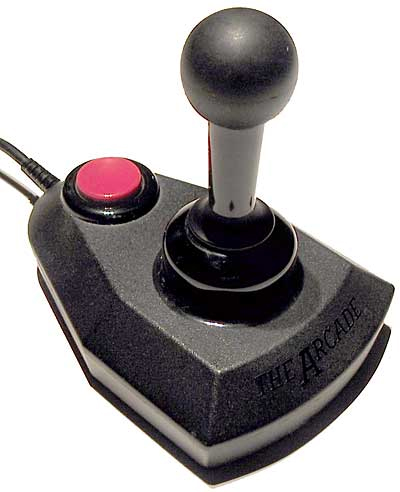
|
Suzo The Arcade "Joystick" - 29-2008 A single-button joystick, created in Holland by Netherlands-based Suzo, that was popular with MSX owners. There was also a beige one for the C-64. |
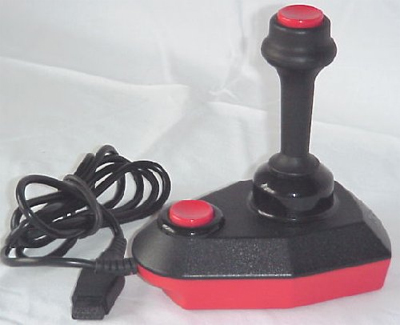 |
Suzo The Arcade Turbo Similar to the original except for having 2 fire buttons. |

|
Suzo Prof 9000 De
Luxe Similar to the Prof Competition except for having an extra fire button on the stick, auto-fire, and suction cups on the base. The switch on the bottom toggles between the left and the top buttons working. |
| Suzo Prof Competition Nearly identical to the Competition Pro joystick, except for having a slightly-different stick. |
|
| Suzo Prof Competition 9000 Same as the Prof Competition except for having redesigned fire buttons. |
|
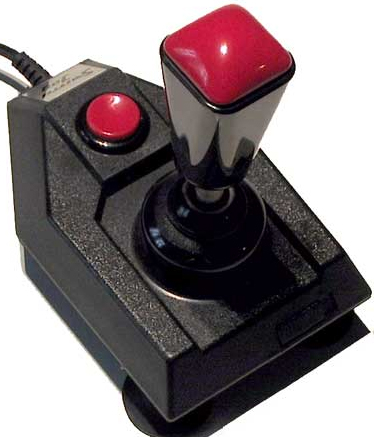 |
Suzo Switch Joy Features auto-fire. |
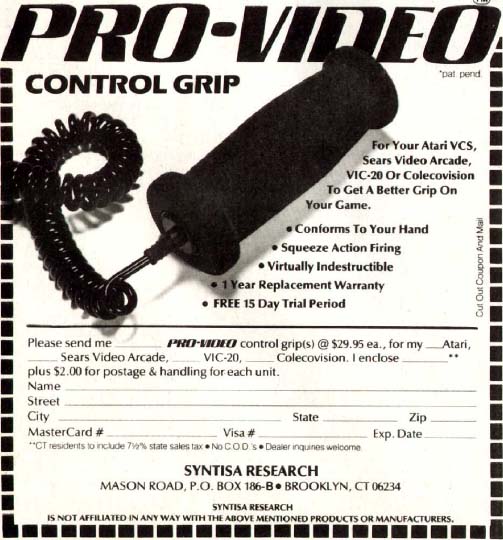 |
Syntisa Research Pro-Video Control Grip Offers "squeeze action firing" and a 15-day trial period with a 1-year warranty. Judging from the photo in the ad, it appears to either use mercury switches for the directions or a movable top, much like the Zircon Video Command. Retail price $29.95. |
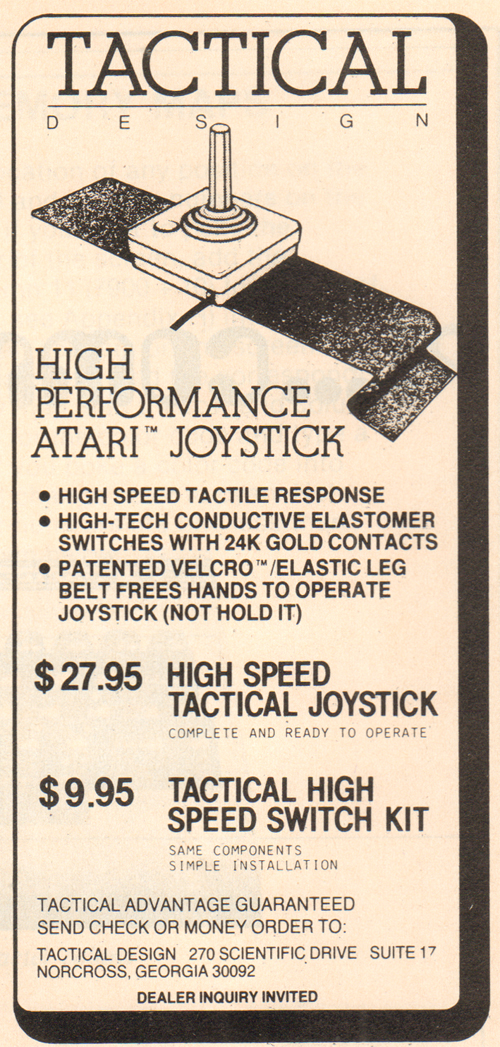 |
Tactical Design High Speed Tactical Joystick Boasts of "high-speed conductive elastomer switches with 24K gold contacts" and a patended velcro/elastic leg belt. Retail price $27.95. They also advertised a High Speed Switch Kit with all the same parts, I'm guessing to convert a standard Atari joystick, for $9.95. |
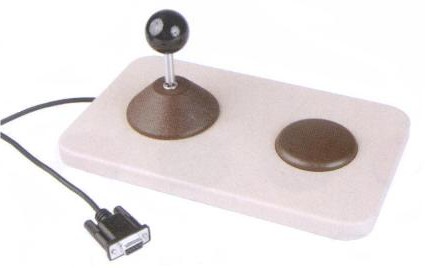
|
Tash joystick - TA-50120 Designed for use by handicap persons. Also sold by Turning Point, and in the U.K. by Tech Cess. |
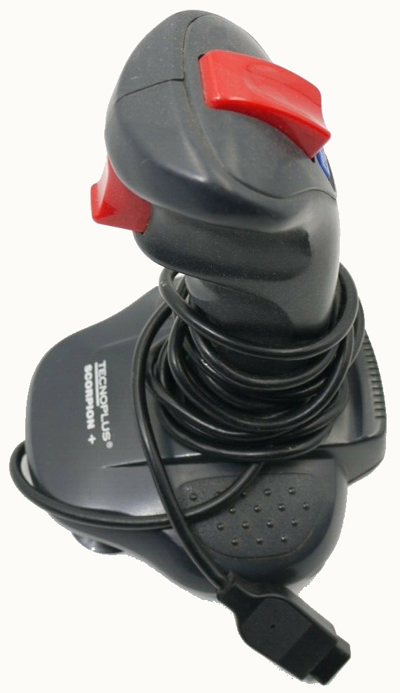
|
TechnoPlus
Scorpion
+ TP 137M Identical to Bondwell's Quickshot Python 1 Turbo III and Python 1M (inside and out), with 2 fire buttons, auto-fire, a 4-position operating mode selector, and suction cups on the base). |
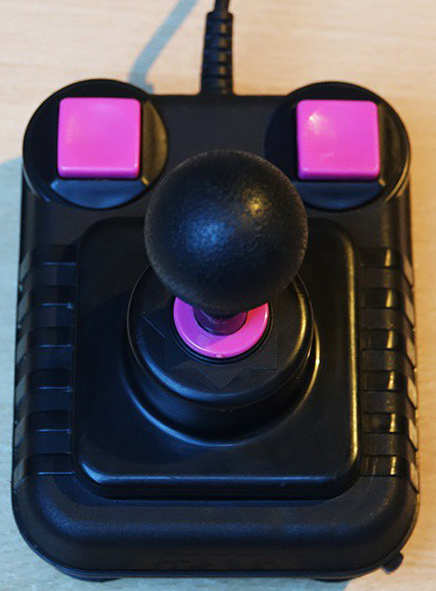
|
TechnoPlus Super Pro
Amiga Joystick Identical to Zip Stick's Super Pro. Features auto-fire. |
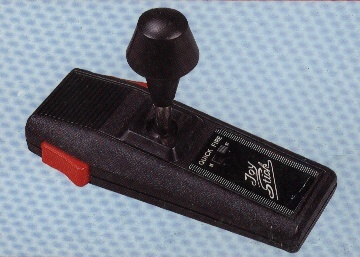 |
Telegames Super Deluxe Similar to the Atari Pro-Line joystick, except for an auto-fire switch on the nameplate. |
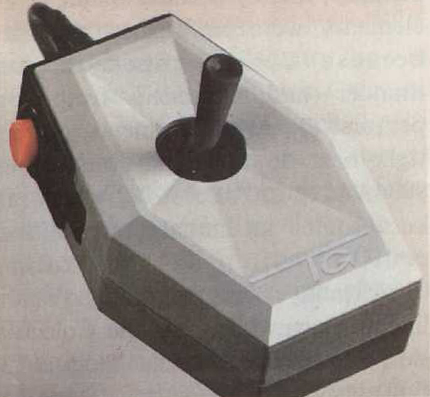 |
TG Products Enjoystick A self-centered joystick, similar to the Odyssey 2, that features a fire button that can be swapped for either left or right-handed players. Retail price $34.95. |
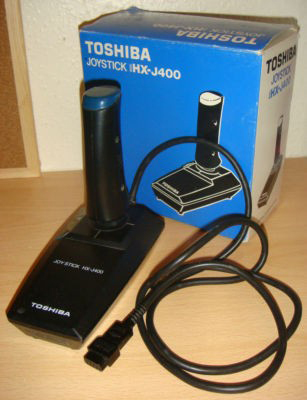
|
Toshiba joystick HX-J400 Marketed for use with the MSX HX-10 computer. This was designed by several different manufacturers under different names, model numbers, and colors (Canon, Fujitsu, Gradiente, Panasonic, Hitachi, Mitsubishi, Sanyo, Toshiba, Victor). |
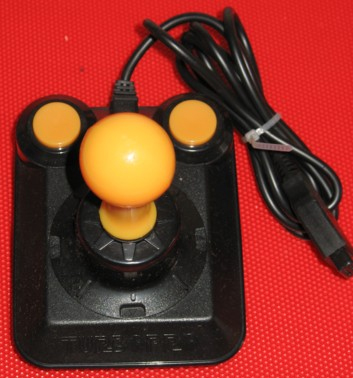
|
Turbopro
Joystick
Turbo Pro Released in 1987 and only in Germany. The controller's shell appears to have space designed for turbo features, but this feature was scrapped after the Taiwanese manufacturer struggled to understand the circuitry behind it. |
| U.S. Games joystick Announced at the Winter 1982/83 CES show, U.S. Games claimed to have developed a new controller that gave the user the ability to zoom in and out on the screen. From an article in the May 1983 issue of Electronic Fun (pg. 91) which covered the Toy Fair show: "By June, look for an ultra responsive, self centering U.S. Games joystick similar in design to the Coleco Super Action Controller. The joystick will not only move the game characters but will also regulate speed. Speed is determined by how far the stick is moved from the center position. The new controller will also feature a rocker switch for selection of screens in certain upcoming U.S. Games carts. The yet unnamed joystick will work with the Atari VCS." Both James Wickstead and Roger Booth confirmed this wasn't something they worked on. |
|
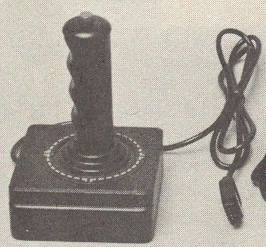 |
Ultravision joystick Was to be the standard controller for the Ultravision Computer Video System (LINK). |
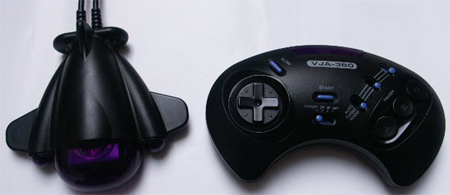 |
VJA-260 A Genesis controller clone that's wireless. |
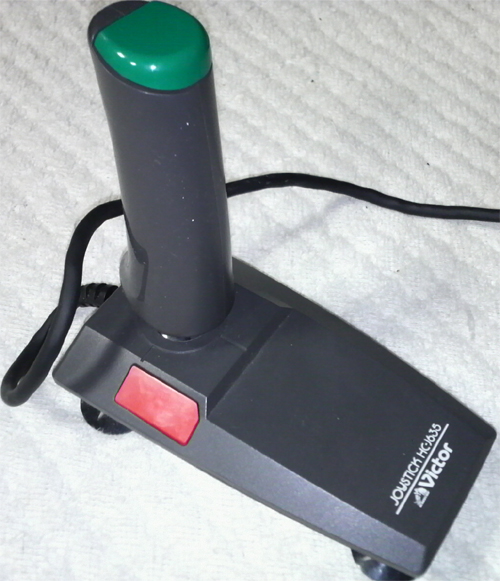 |
Victor joystick HC-J635 Marketed for use with the MSX HX-10 computer. This was designed by several different manufacturers under different names, model numbers, and colors (Canon, Fujitsu, Gradiente, Panasonic, Hitachi, Mitsubishi, Sanyo, Toshiba, Victor). |
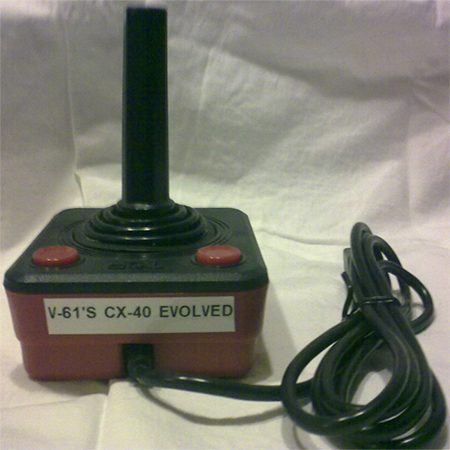 |
Video 61 CX-40 Evolved Another blatant rip-off of Atari's CX-40 joystick. This one has a red base with 2 fire buttons and "TOP" in large, raised letters on the top. Retail price $29.95. |
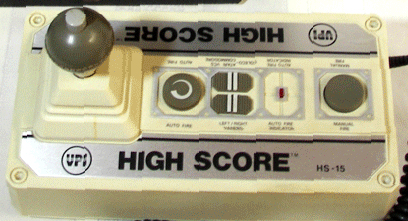 |
Video Peripherals Inc. High Score Tournament Master - HS-15 Strange joystick+joypad hybrid that offers auto-fire and is configured for either right or left-handed players. |
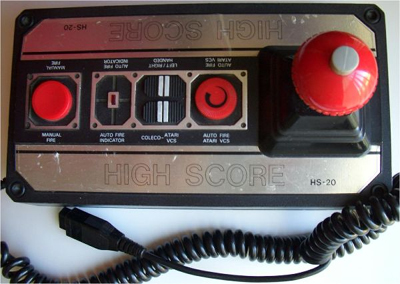 |
Video Peripherals Inc. High ScoreTournament Master - HS-20 Appears to be the same as the HS-15 model. Retail price $39.95. |
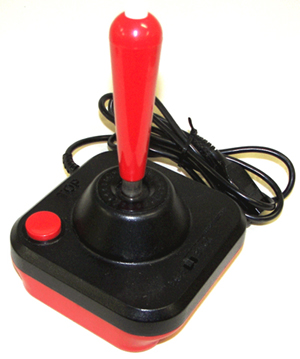 |
Wico Bat Handle - 15-9714 The first of Wico's 'Command Control' series of controllers. It features an extra-long arcade-style bat handle grip, and a switch for using either the base or handle fire button. Came with 1-year limited warranty. Retail price $29.95. |
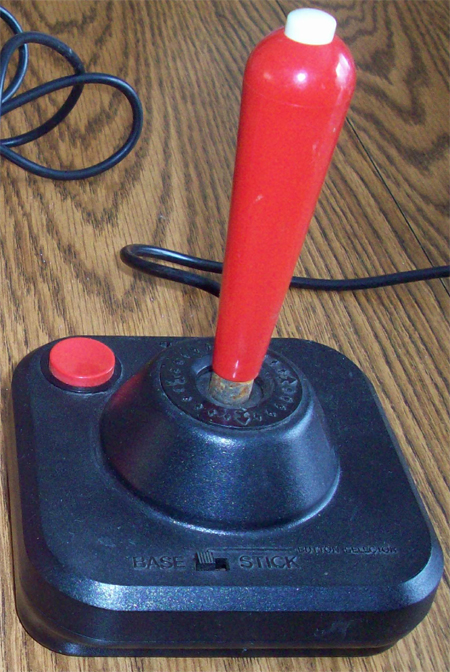 |
Wico Bat Handle A rare variant with an all-black base. |
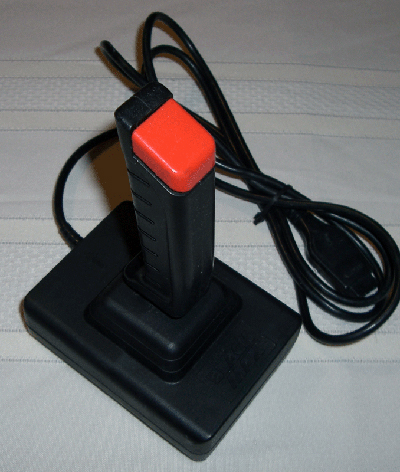
|
Wico Black Max |
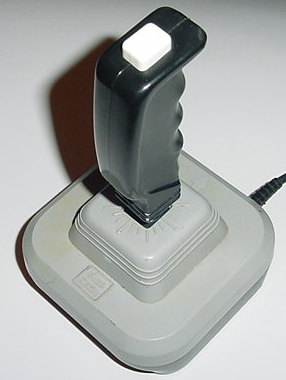
|
Wico The Boss One of their 'Command Control' series of controllers. Similar to the Power Grip, except it has a different base and lacks the Base/Stick switch. A variation exists with a yellow button. Retail price $19.95. |
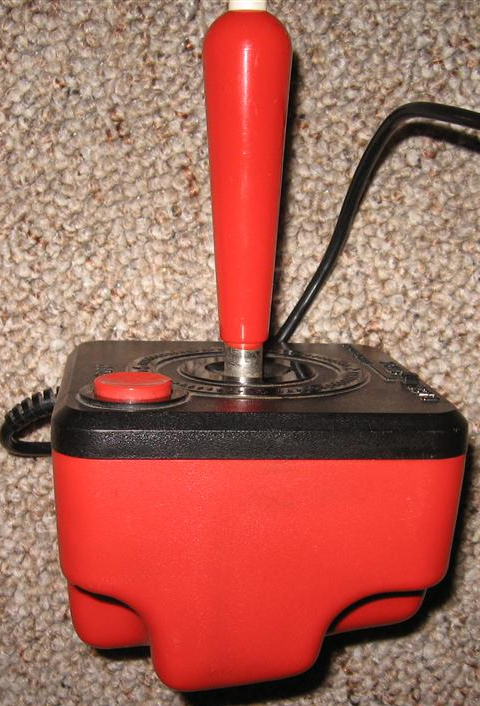
|
Wico Deluxe joystick - 15-9708 Similar to Wico's Bat Handle joystick except that it features an extra-long arcade-style bat handle grip and a deluxe oversize heavy duty plastic base that slopes toward the player. Retail price $39.95. |
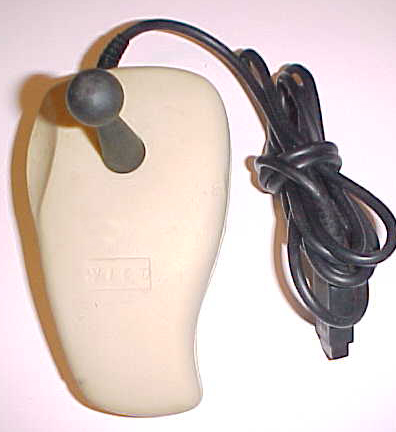 |
Wico Ergostick Same as Konix's SpeedKing, except it has a rubber shell over the plastic shell. |
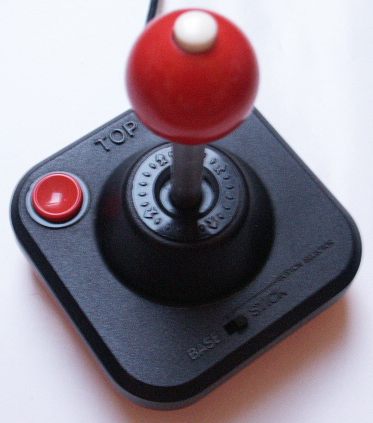 |
Wico Famous Red Ball One of their 'Command Control' series of controllers. Arcade type red ball handle for the tip of a standard joystick. Retail price $29.95. |
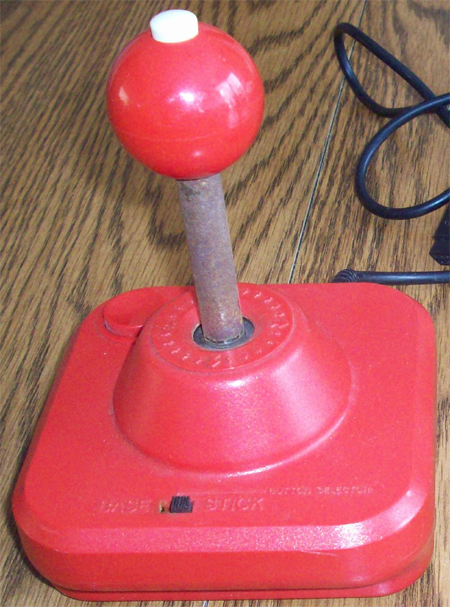 |
Wico Famous Red Ball A rare variant with an all-red base. |
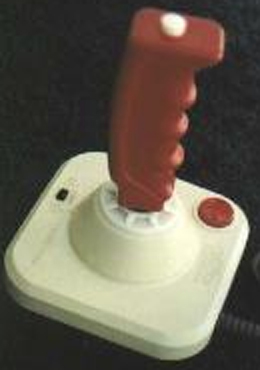 |
Wico Grip Handle One of their 'Command Control' series of controllers. This is actually a stripped-down version of the Super Three-Way. It is exactly the same stick with the gate lock and all but comes with just the grip handle (you can fit extra ones from both Three-Way sets on it). |
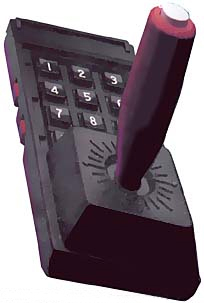 |
Wico joystick/keypad 50-0299 Designed for the Colecovision. |
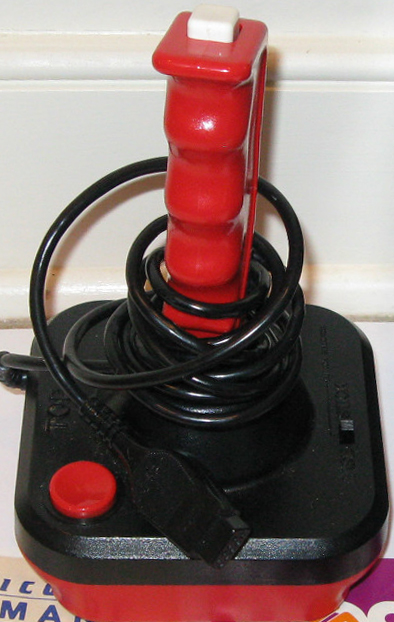 |
Wico Power Grip - 50-2020 One of their 'Command Control' series of controllers. Retail price $29.95. |
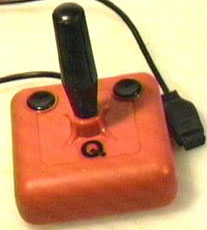
|
Wico Q Stick A cheaply-made controller that apparently was only released in France. |
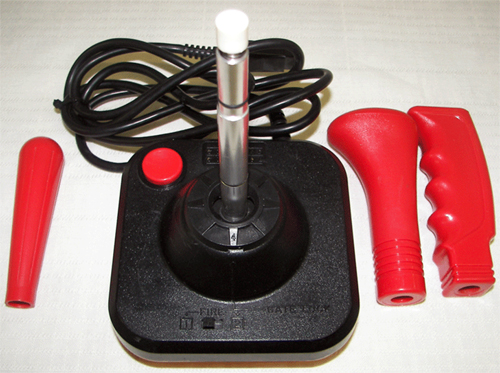 |
Wico Super Three-Way - 50-2002 One of their 'Command Control' series of controllers. The appeal with this joystick is the trio of interchangeable handles (the grip, the ball, and the bat) complete with their individual fire buttons. It comes with bat, ball and grip handles. It was also available as a "bat only" product at one time. It has a gate lock and the button selector is "1" and "2" (note the difference to "Base" and "Stick" in regular Wicos). Retail price $44.95. |
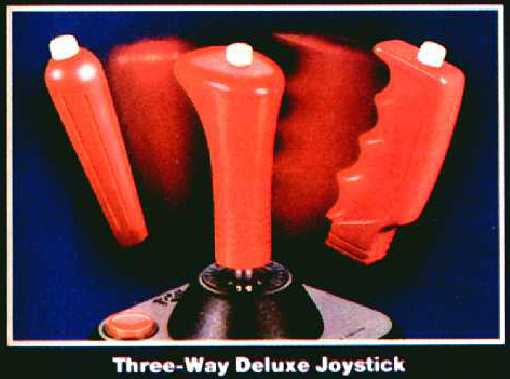 |
Wico Three-Way Deluxe - 50-2010 One of their 'Command Control' series of controllers. The appeal with this joystick is the trio of interchangeable handles (the grip, the ball, and the bat) complete with their individual fire buttons. It was also available as a "bat only" product at one time. The ball handle has been replaced with another handle that looks a bit like a car shifter knob. It doesn't have gate lock and the button selector is "F1" and "F1/F2" (= both at once). Retail price $44.95. |
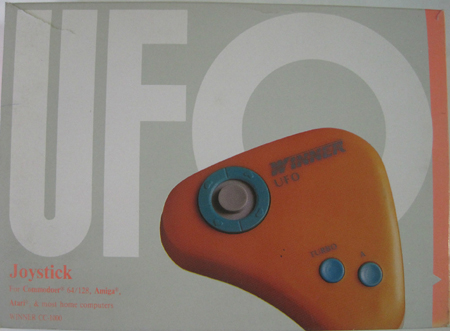
|
Winner UFO Joystick It's called a joystick on the box, but it's a joypad. Features a left thumb directional pad and 2 fire buttons - one marked "Turbo" and the other "A". Produced in at least 2 different colors schemes. |
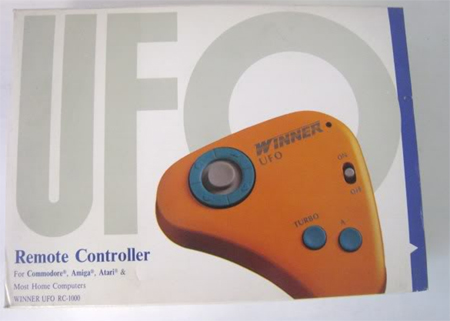
|
Winner UFO Remote Controller Same as the UFO except it's wireless. |
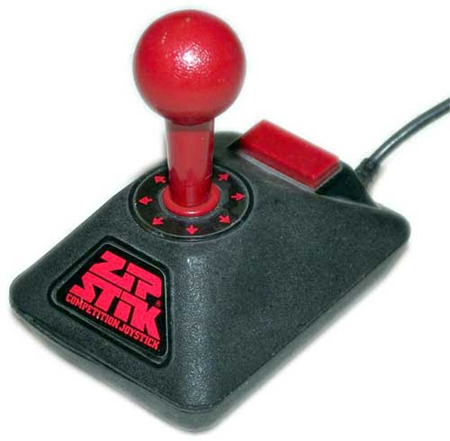 |
Zip Stik Competition Joystick Identical to Euromax's Pro Ace. |
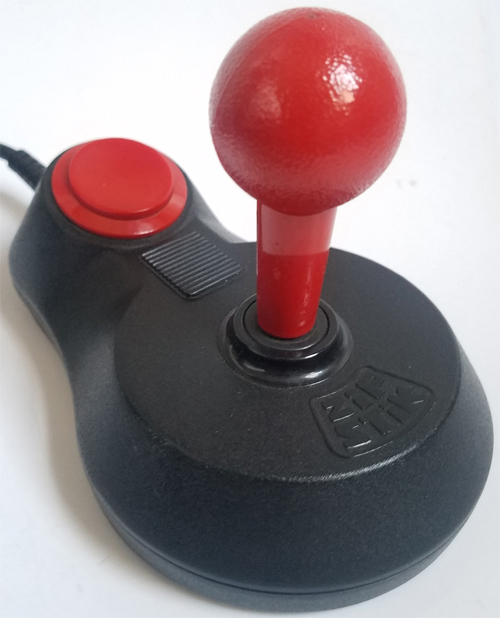
|
Zip Stik
Euromax Elite Identical to Euromax's Pro Ace. |
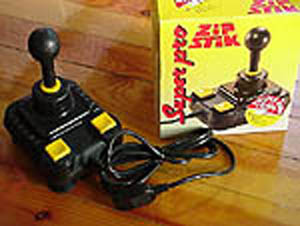
|
Zip Stik Super Pro Features auto-fire. |
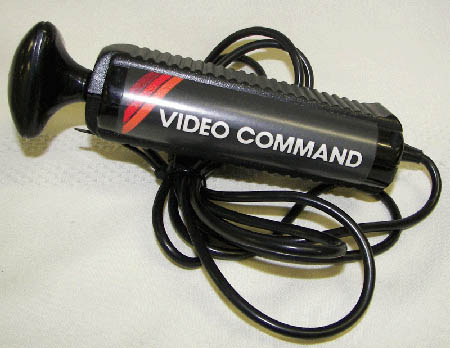 |
Zircon International Video Command - J-3201 Very similar to the Fairchild Channel F grip-style controller, with a triangular-headed stub at the top. Pushing down on the stub serves as the fire button. Retail price $14.95. |
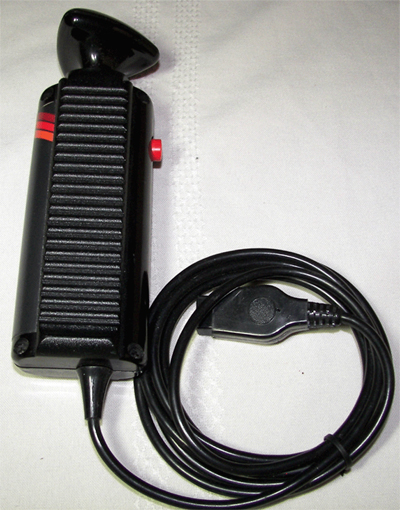 |
Zircon International Video Command - J-3022 A variant. Instead of pushing down on the stub to fire, a small red button near the index finger serves as the fire button. Retail price $14.95. Box states the controller offers a "new rapid fire button" and the controller had a full 1-year limited warranty. Retail price $14.95. |
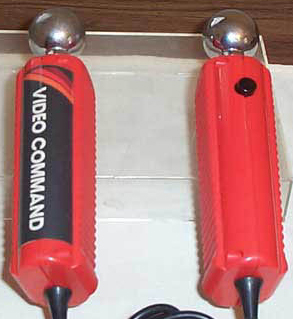 |
Zircon International Video Command Plus Another variant with a red case and a round, chrome handle. Retail price $14.95. |
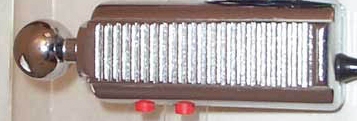 |
Zircon International Z-Stick Similar to the Video Command controller but is chrome-colored and offers 2 methods of control - the Maze Control allows for only 4-way control, and the Speed Control allows players to slow down their movements by 50%. It also offers auto-fire. Retail price $29.95. |
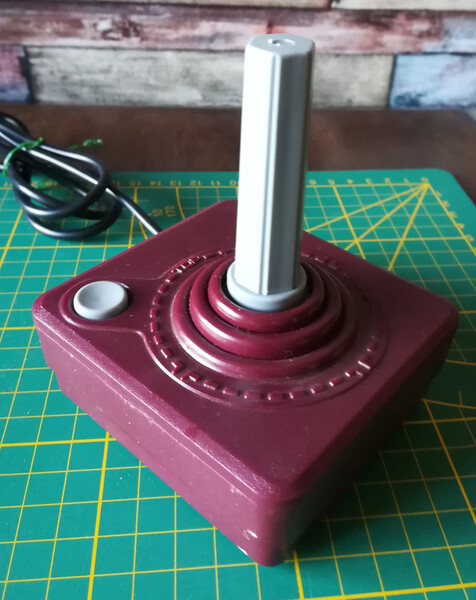
|
(manufacturer unknown) Similar to Atari's standard VCS CX40 joystick except it's red with a gray joystick and fire button. Packaged with the Diablo 128 pirate system clone. The rubber boot and joystick are identical to Rinco's joystick. The internal switches are a very cheap leafswitch setup, with wires going to screws for the bottom contacts. |
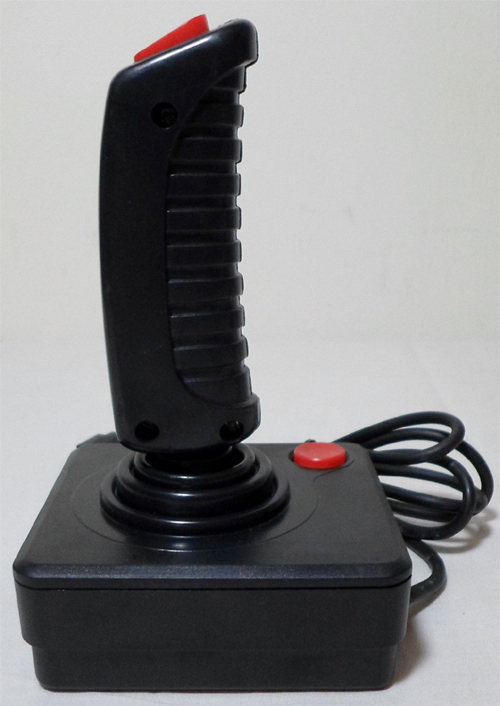
|
(manufacturer unknown) Another 2-button Atari standard variant, packaged with pirate system clones such as Rambo TV Game and TV Game 2600. The base looks similar to Atari's standard VCS CX40 joystick except the top of the base doesn't have the raised dashes and instead has a raised, smooth area. The rubber boot and joystick are identical to Rinco's joystick. The internal switches are a very cheap leafswitch setup, with wires going to screws for the bottom contacts. |
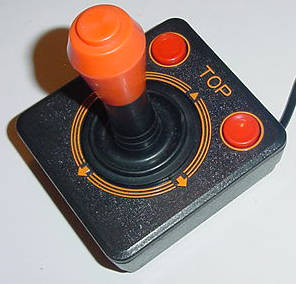 |
(manufacturer unknown) Similar to the Philips Joystick except the top-half of the joystick is red, and the trim design around the base of the joystick is different. Also, the "TOP" lettering and joystick rings and arrows are painted like the Bebek. |
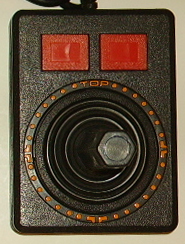 |
(manufacturer unknown) A hexagon-shaped joystick with 2 square fire buttons (both on the base). |
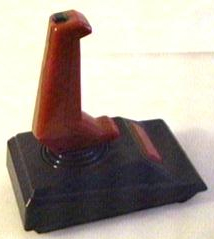 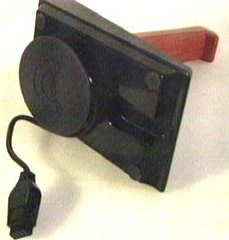 |
(manufacturer unknown) Features a retractable cord, similar to Championship Electronics controllers. |
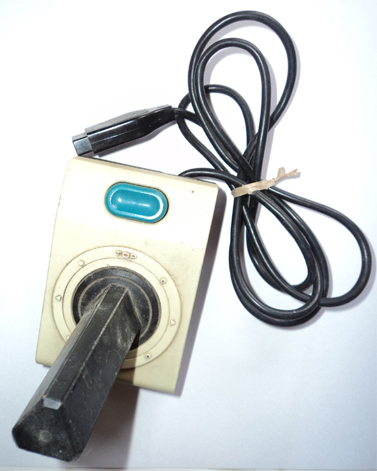 |
(manufacturer unknown) A Taiwan variant of the Commodore 1311 joystick. |
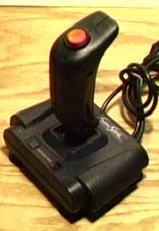 |
(manufacturer unknown) |
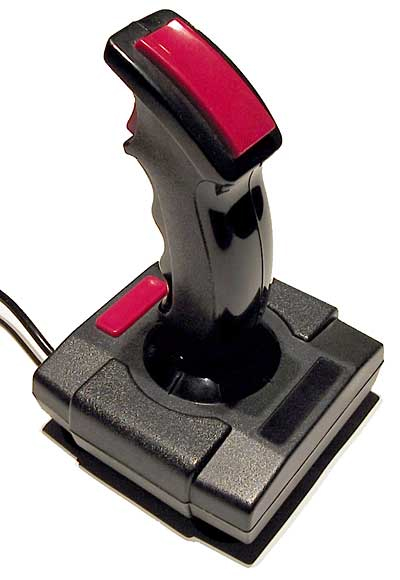 |
(manufacturer unknown)
|
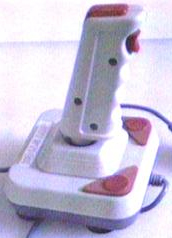 |
(manufacturer unknown) Features triangular-shaped firing buttons on the base, similar to some Commodore controllers. Buttons identical to Cheetah Marketing's Mach I. |
 |
(manufacturer unknown) |
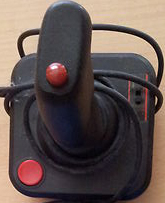 |
(manufacturer unknown) |
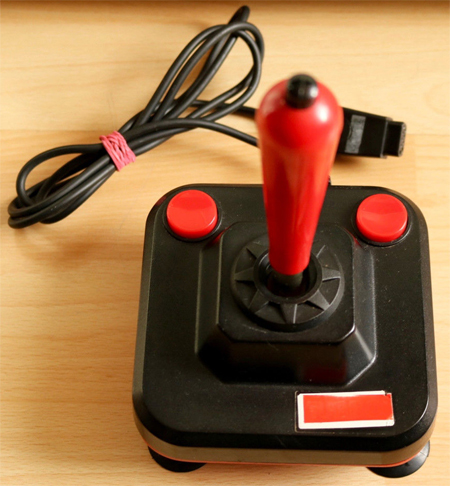
|
(manufacturer unknown) Here's what appears to be an unknown Wico variant, but there's enough differences with it to make me think it's some knockoff: The "arrows" around the base of the joystick look similar to those from the Grip Handle and Super Three-Way models. The raise base around the joystick is square not round like most Wico controllers, although The Boss has a similar square base. The auto-fire switch is on the bottom, not the top like every other Wico controller with one. There's no name or text on the bottom of the base, unlike every other Wico controller. Wico controllers say "WICO" in raised letters on the controller plug. That one has a circle (3rd picture), similar to a Suncom controller plug. The raised stress-relief area on the controller wire at the base is squared, not round like most Wico controllers. The location on most Wico controllers is closer to the corner. There are 2 fire buttons on the base. The only Wico controller I know of that has that is the Q Stick, which doesn't even resemble any other Wico controllers (and was probably something that Wico either sub-contracted for, or licensed and put their name on it. Similar to what they did with the Ergostick). The joystick uses 4 microswitches instead of leafswitches. Also, the 2 fire buttons on the base use 'dome' contact switches. |
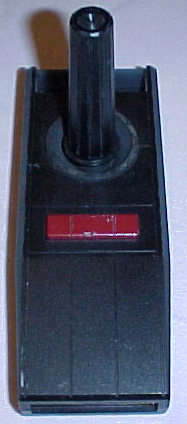 |
(manufacturer unknown) A single button controller that looks vaguely similar to a 5200 controller. |
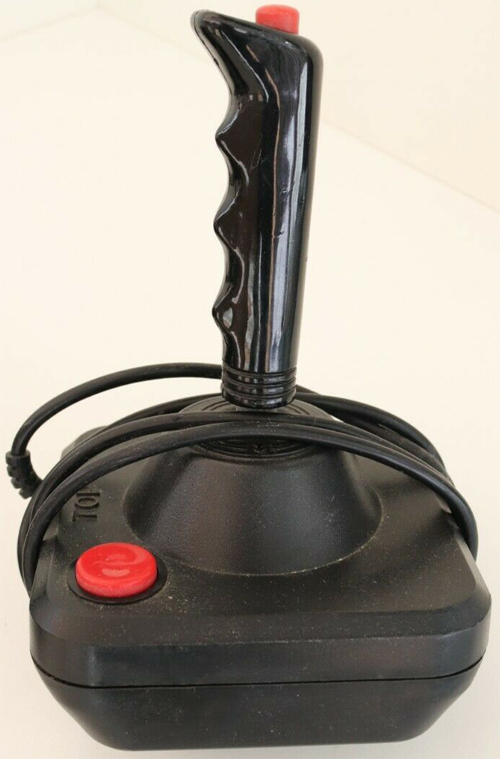 |
(manufacturer unknown) A 2- button controller that looks like a Wico variant. |
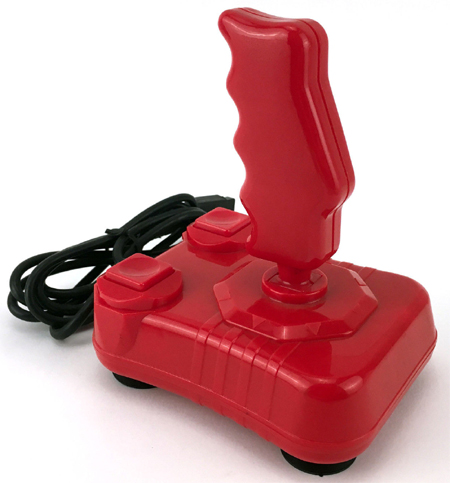
|
(manufacturer unknown) Sold from Spain on Ebay as a Competition Pro replica, but it's identical to a Euromax controller (except the name isn't on the bottom). Has 2 square buttons and what appears to be an auto-fire switch. There are 4 suction cups on the bottom. |
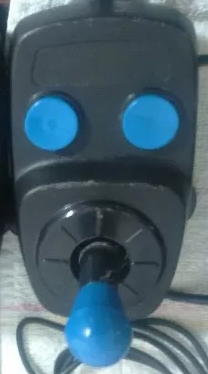 |
(manufacturer unknown) Sometimes packaged with the Edu Games 2600 and Artkaris clones from Argentina. |
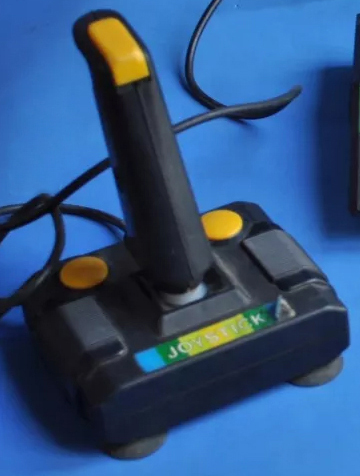
|
(manufacturer unknown) Nearly identical to the Commodore VG-115 joystick but without auto-fire. Sometimes packaged with the Edu Games 2600 clone from Argentina. |
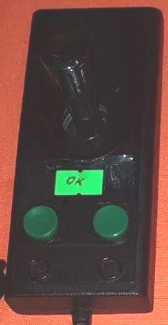 |
(manufacturer unknown) Sometimes packaged with the Video Computer 2600 clone from Argentina. |
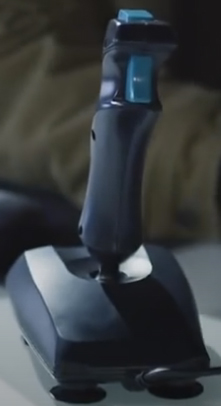 |
(manufacturer unknown) It's unknown if this is a compatible joystick. |
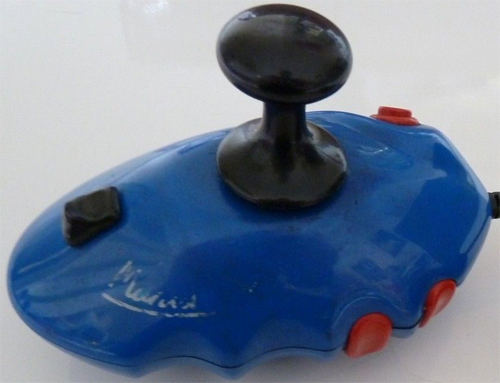 |
(manufacturer unknown) Contoured base designed to fit in your hand, with 3 fire buttons and what might be an auto-fire switch. |

|
(manufacturer unknown) Similar to Atari's standard VCS CX40 joystick except it has a yellow fire button, like the Dactar (Milmar) joystick controllers. |

|
(manufacturer unknown) Similar to Atari's standard VCS CX40 joystick except for having "JOYSTICK" in raised lettering above the stick, and a blank square in the lower-right corner. |
 |
(manufacturer unknown) Photo was found on a Polish Atari website, Atarionline.pl. |
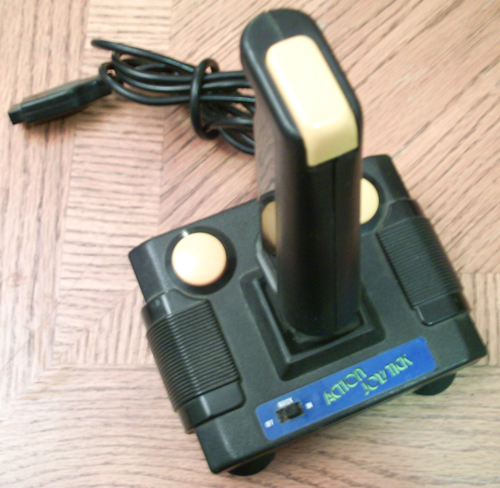 |
(manufacturer unknown) Action Joystick
Nearly identical to the Commodore VG-115 joystick with auto-fire. The bottom of the case is marked PATENTED NO:9391. The pcb is marked VG-125-06 AQ TL. |
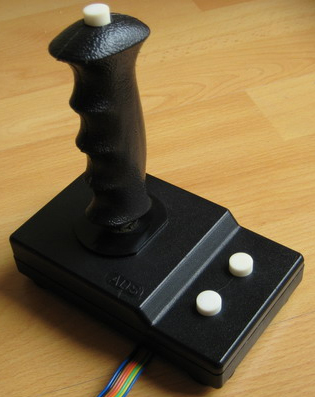 |
(manufacturer unknown) ADS Made in Yugoslavia (now Slovenia). The joystick handle is the same type that was used on skiing poles! The "switches were simply pieces of aluminum that were pushed together, making reliability quite poor. |
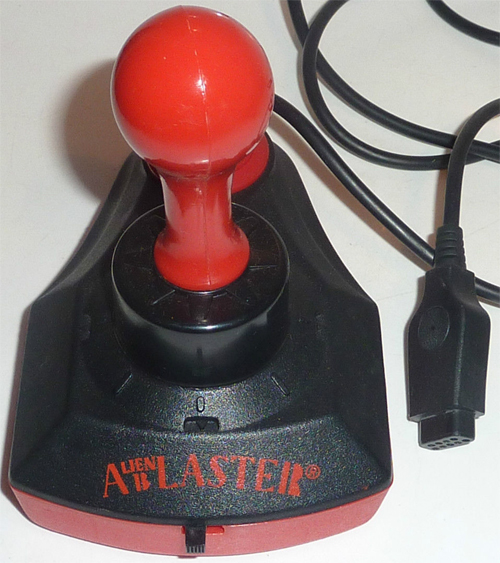
|
(manufacturer unknown) Alien Blaster Similar to some of Suzo's controllers, and could possibly be made by them. Features what appears to be an auto-fire switch. |
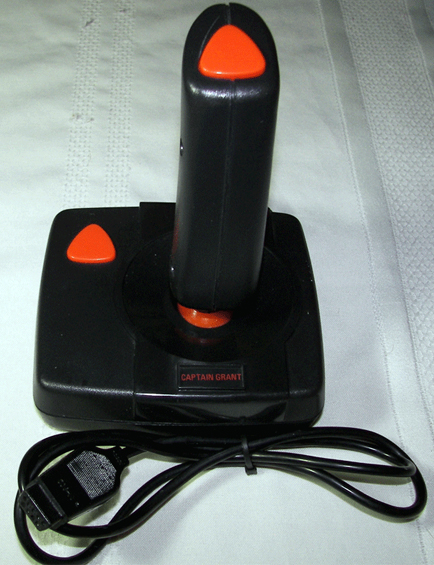 |
(manufacturer unknown) Captain Grant
|
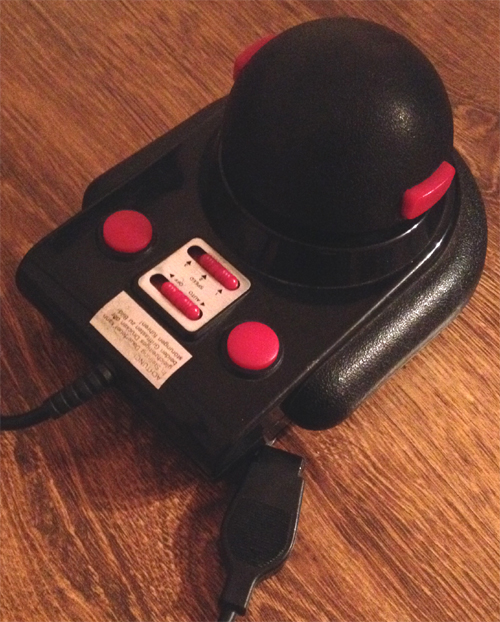
|
(manufacturer unknown) Challenger Turbo Deluxe Joystick Controller Huge ball-top joystick with fire buttons on either side of the ball, and 2 more on the base. Features micro-switches and auto-fire. One slide switch is marked "Auto Off" and the other is for the speed of the auto fire ("1", "2", and "3"). The sticker at the top of the base is in German. The box has a photo of a red model with black fire buttons and switches. |
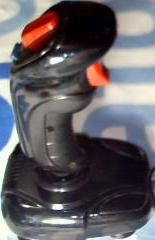 |
(manufacturer unknown) Cobra Has 2 buttons and auto-fire. There are 4 suction cups on the bottom. |
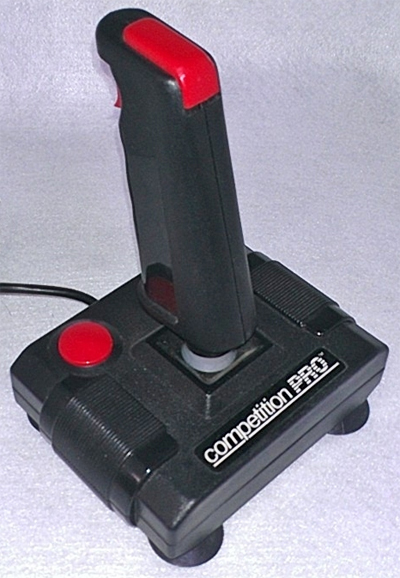 |
(manufacturer unknown) Competition Pro Nearly identical to the Commodore VG-115 joystick but without auto-fire. The pcb is marked VG-125-01 AQ TL. |
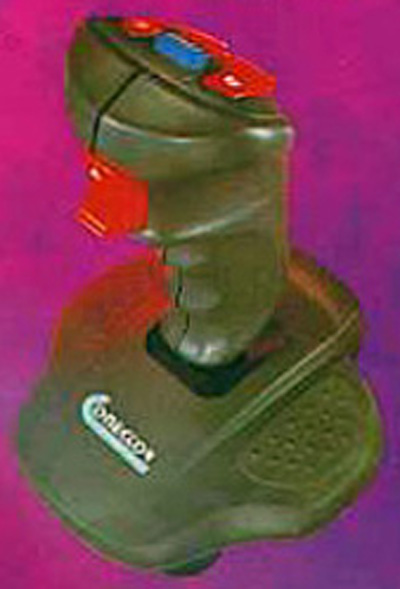 |
(manufacturer unknown) Conector Identical to the Bondwell Quickshot Python 3. |
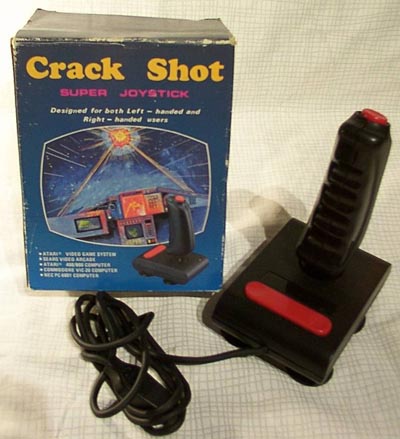 |
(manufacturer unknown) Crack Shot Super Joystick Identical to the Dismarc Superstick. |
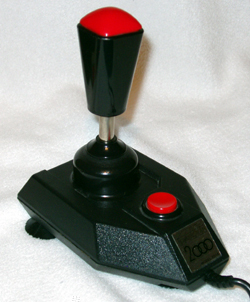 |
(manufacturer unknown) Delta 2000 A microswitch controller featuring 2 fire buttons, with a large one on top of the joystick. Included an adaptor for Spectrum Plus 2/Plus 3 computers. |
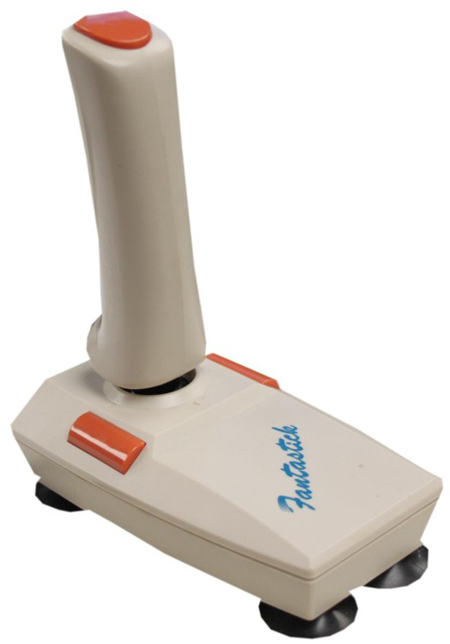 |
(manufacturer unknown) Fantastick |
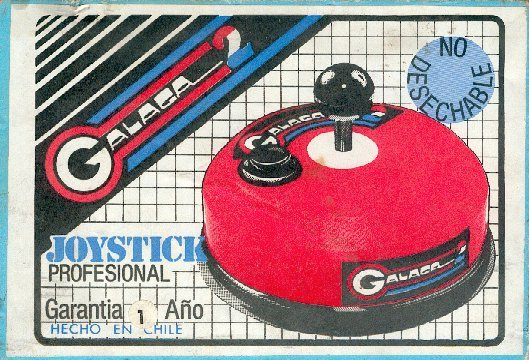
|
(manufacturer unknown)
Galaga 2 Unique controller with a round base. Made in Chile. |
| (manufacturer unknown) Grip Controller Made in Hong Kong, this stick looks a little like the Video Command Joystick by Zircon but isn't marked with a manufacturer. |
|
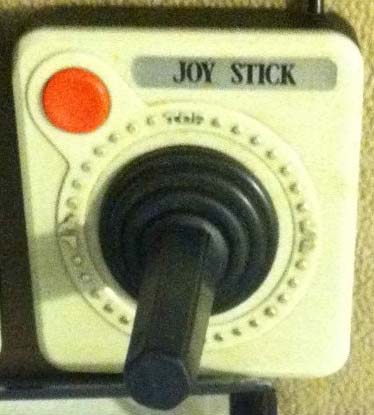 |
(manufacturer unknown) Joy Stick Another blatant ripoff of Atari's standard VCS CX40 joystick, which looks identical to the Commodore VIC-20 joystick except for having a sticker that says "JOY STICK". |
 |
(manufacturer unknown) Joystick Identical to Cheetah Marketing's Mach I. |
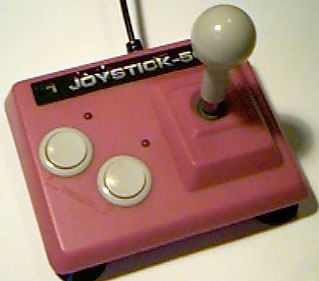 |
(manufacturer unknown) Joystick 505 |
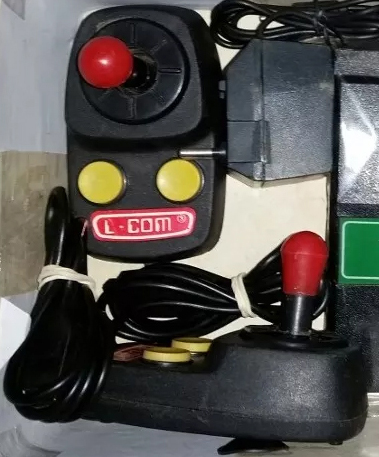 |
(manufacturer unknown)
L-COM Sometimes packaged with the Edu Games 2600 clone from Argentina. |
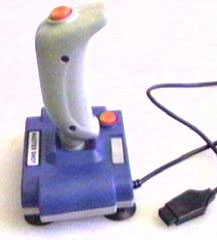 |
(manufacturer unknown) Master Shot |
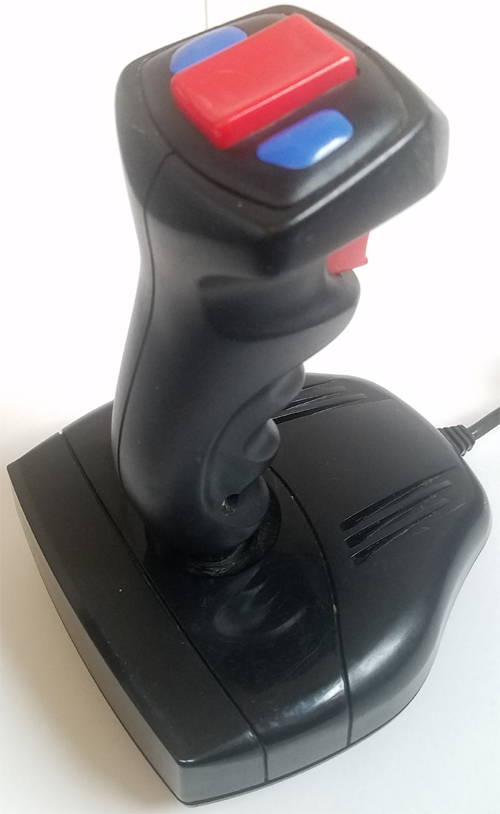
|
(manufacturer unknown)
- JS9000-S Features carbon contacts on the stick and suction cups on the base. Compatible with a Mega Drive stick (the blue button is Start and the other 3 are A, B, and C). |
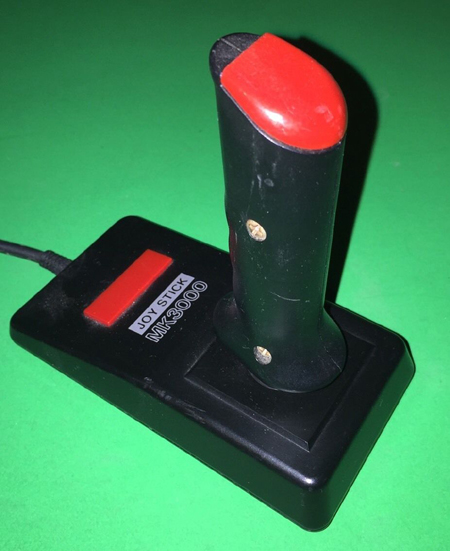 |
(manufacturer unknown) MK3000 Joy Stick Marketed for use with the MSX computer. |
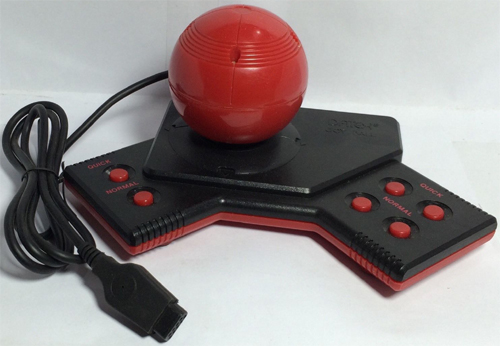
|
(manufacturer unknown) Quick Gun Joyball / Datex Joy Ball Another large ball-top joystick controller with micro-switches and auto-fire that features 6 fire buttons (half marked "Quick" and the other half "Normal". The name on the box is Quick Gun Joyball but the name on the top of the case says Datex Joy Ball. |
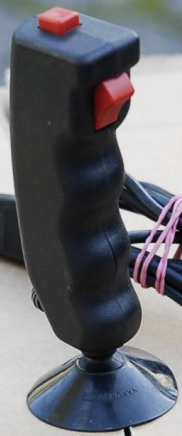 |
(manufacturer unknown) Quicksilver A baseless joystick that has a suction cup on the bottom. It uses mercury switches. |
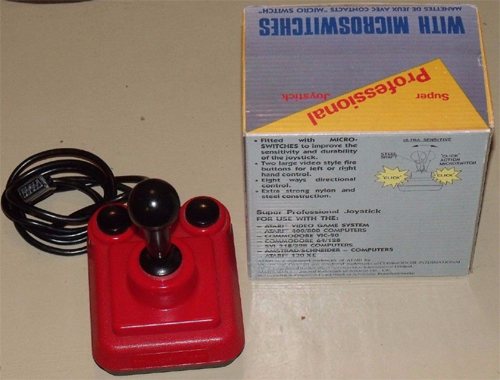
|
(manufacturer unknown) Super Professional Joystick Knockoff of Coin Control's Competition Pro joystick, except for having black base, buttons, and joystick handle, and red top case. |
| (manufacturer unknown) The Turbo Basically a clone of Spectravision's Quickshot II Plus joystick, with the addition of 2 extra buttons on the base. |
|
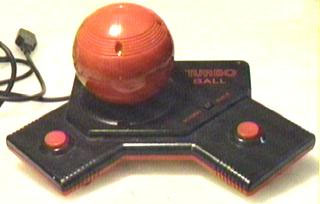 |
(manufacturer unknown) Turbo Ball
|
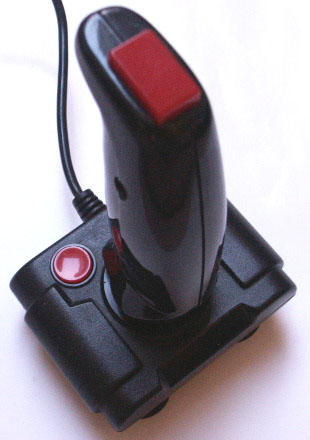 |
(manufacturer unknown) Turbo Junior
Similar in style to the Commodore VG-115 joystick. |
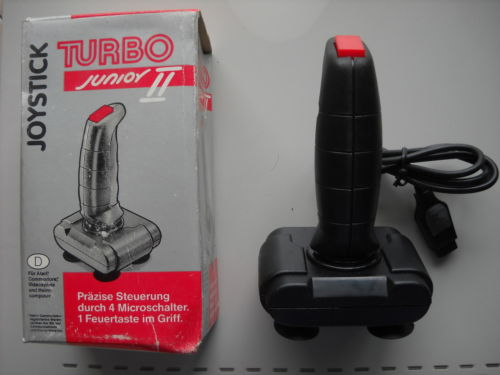 |
(manufacturer unknown) Turbo Junior II |
|
|
|
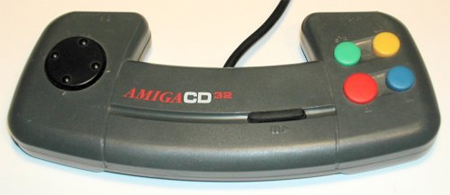 |
Amiga CD32 Clear the runway, the Flying Wing is about to take off! Not sure why someone would design a controller that keeps your hands shoulder-width apart. |
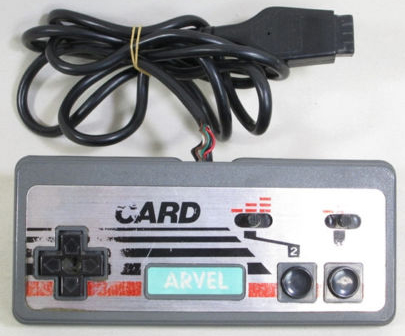 |
Arvel Joy Card 2-button "joypad", each with its own auto-fire switch. |
 |
Atari
Control Pad - CX78+ A new version of Atari's original Power Control Pad. Included with the 7800+ system. Retail price $24.99. |
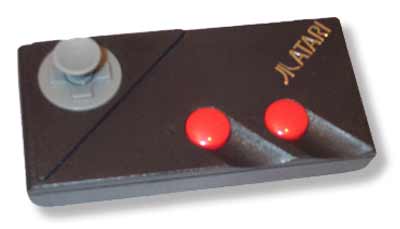 |
Atari Power Control Pad - CX78 Also known as the Joypad. The direction pad has a removable thumb stick. This was originally to be released with the 7800 in an attempt to capitalize on the rising popularity of the Nintendo NES and its controllers, but only saw release overseas. |
 |
Atari
Wireless Control Pad - CX78+ A wireless version of Atari's original Power Control Pad. Included with the 7800+ system. Retail price $34.99. |
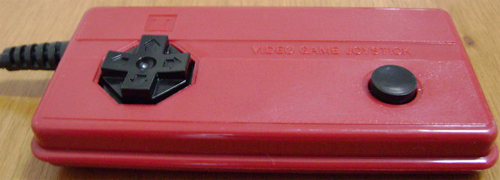
|
Bit Corp. Video Game Joystick Standard controller for the BIT-7000 (red) and Creator 30 (blue) systems. Although it's called a joystick, it's a joypad. |
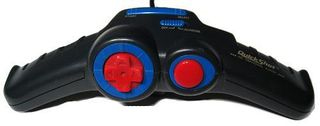 |
Bondwell Quickshot FlightGrip QS-129F Shaped like a handlebar and featuring an 8-way directional thumb-pad and auto-fire. |
| Bondwell QuickShot game pad - QS-181 | |
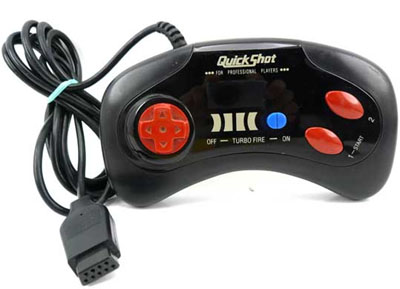 |
Bondwell QuickShot Starfighter Joypad controller that features auto-fire. Identical to the TechnoPlus Swift. |
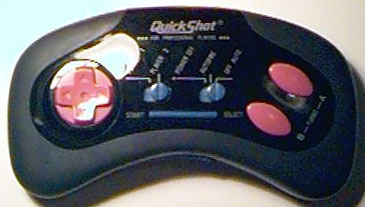 |
Bondwell QuickShot Starfighter
1 - QS-127 Wireless joypad controller that features auto-fire. |
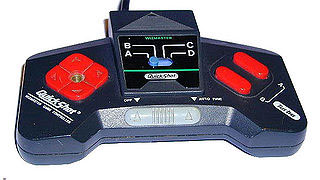
|
Bondwell Quickshot Wizmaster - QS-118F The direction pad has a removable thumb stick. The center section is interchangeable with one that allows NES compatibility. |
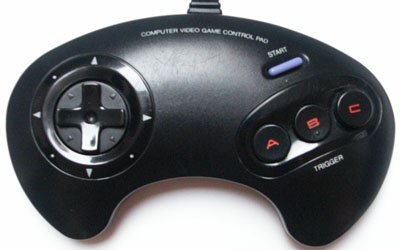 |
Chips Do Brasil - Computer Video Game Control Pad Copy of the Sega Genesis controller. |
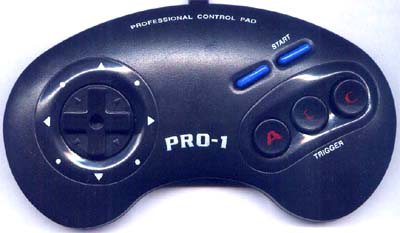 |
Chips Do Brasil - Computer Video Game Control Pad Pro-1 Copy of the Sega Genesis controller. There's a switch on the bottom marked 'A' and 'B'. |
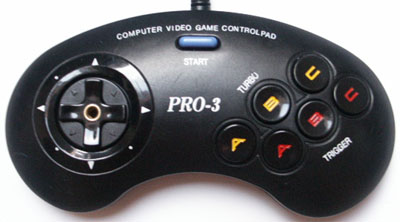 |
Chips Do Brasil - Computer Video Game Control Pad Pro-3 - SJ-4001 Copy of the Sega Genesis controller, with more buttons. |
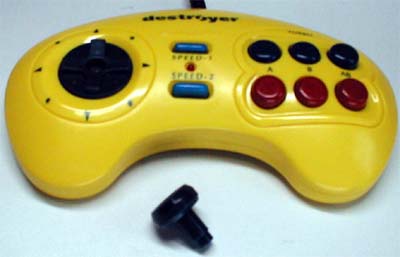 |
Dynacom Destroyer Turbo Joypad A Genesis controller clone with 6 buttons and a removable stick attachment. |
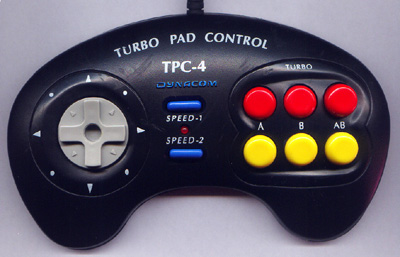 |
Dynacom Turbo Pad Control - TPC-4 A Genesis controller clone with 6 buttons and a removable stick attachment. |
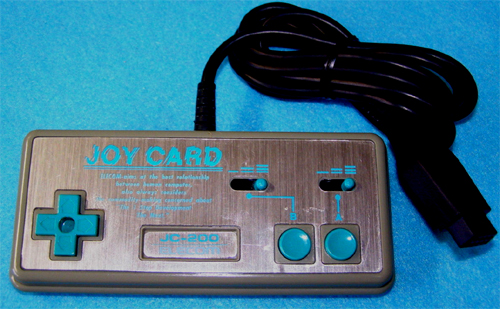 |
Elecom Joy Card - JC-200 2-button "joypad", each with its own auto-fire switch. |
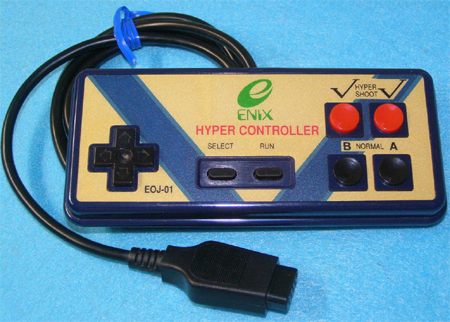 |
Enix Hyper Controller - EOJ-01 Features four fire buttons - two of which are dedicated auto-fire. |
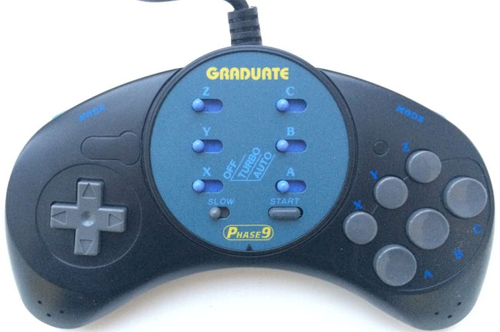
|
Euromax Electronics
Graduate Phase 9 - CJA1054 Designed for the Sega Mega Drive. It's a 6-button controller with turbo and auto-fire, and is a simplified version of the Pro Control 6. There are two versions of this controller - one has the MODE button on the front panel and the other has 2 MODE buttons on the top side. Made in Taiwan. |
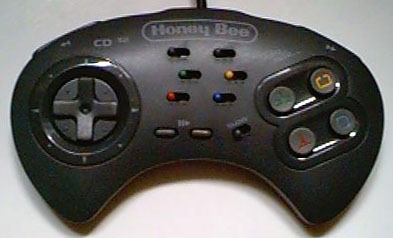 |
Honey Bee CD32 Professional Control Pad - SF-3 Designed for use with the CD32 console. |
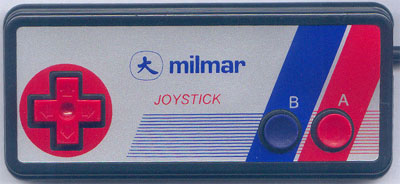 |
Milmar Joystick Standard "joypad" controller for the Memory Game system. |
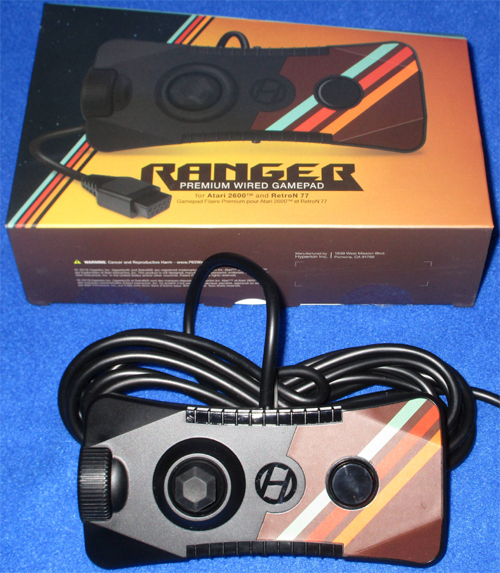 |
Hyperkin
Ranger Premium Optional gamepad controller for the Retron77 console. |
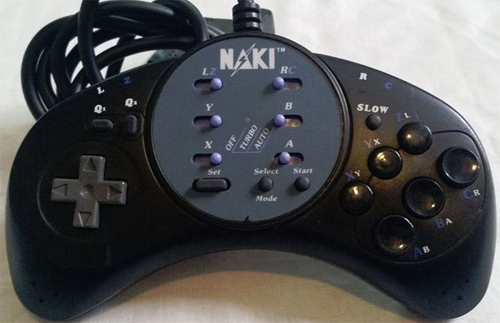
|
Naki
Pro Controller 6 - CJA1054 Versions designd for both the Sega Mega Drive and Super Nintendo. Simplfied versions exist as the Fighter Control by Naki and a similar pad by Dragon. |
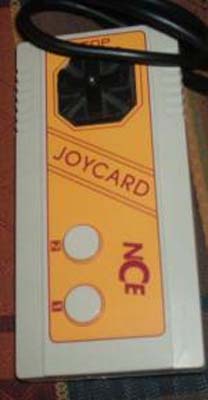 |
NCE Joycard Odd joypad controller that's designed to be used while holding the controller vertically! |
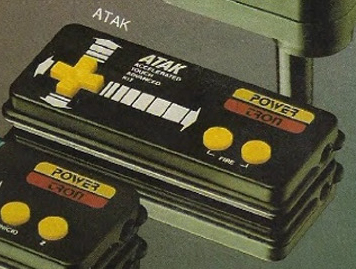 |
PowerTron Atak 2-button joypad designed for Atari. ATAK stands for Accelerated Touch Advanced Kit. |
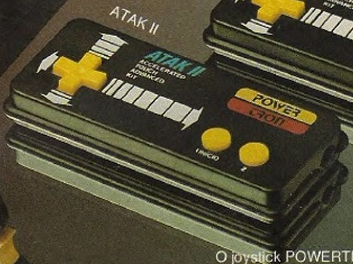 |
PowerTron Atak II 2-button joypad designed for Sega. ATAK stands for Accelerated Touch Advanced Kit. |
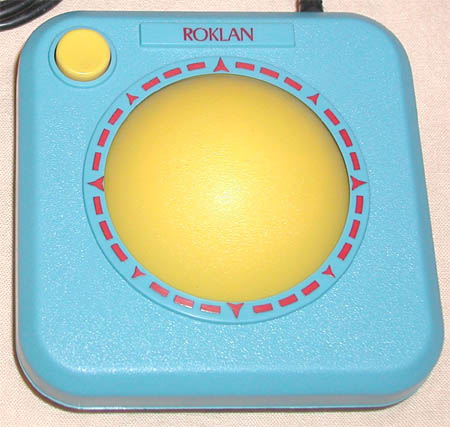 |
Roklan Corp. Unroller Controller Bizarre little controller that looks like a trackball but functions as any digital joystick would (and doesn't output true analog signals). Pressing the top side of the "ball" is up, pressing the right side is right, etc. |
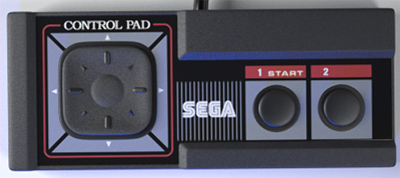 |
Sega Control Pad - 3020 Standard controller for the Sega Master System. |
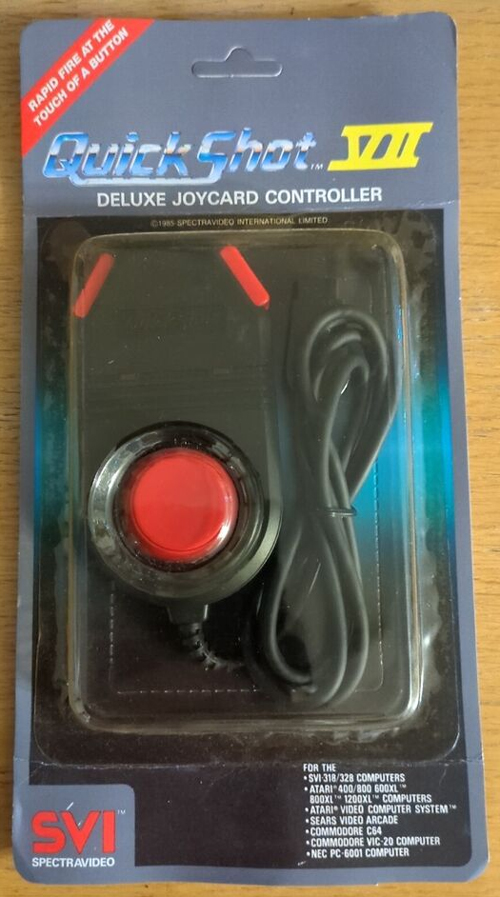 |
Spectravideo QuickShot
VII A joypad-type controller. |
 |
Technogame
Phoenix An NES joypad controller knockoff for their Phoenix console. |
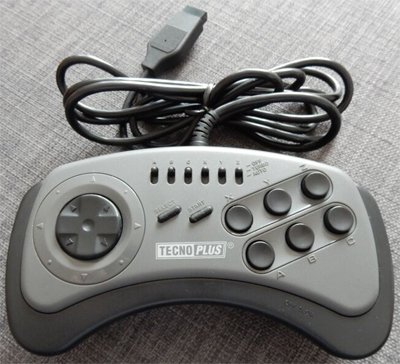 |
TechnoPlus
Mega
Control Pad TP 515 6-button joypad controller that features turbo and auto-fire switches. |
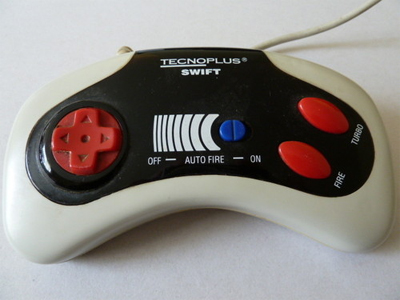 |
TechnoPlus Swift
TP 200 Joypad controller that features auto-fire. Identical to the Quickshot game pad. |
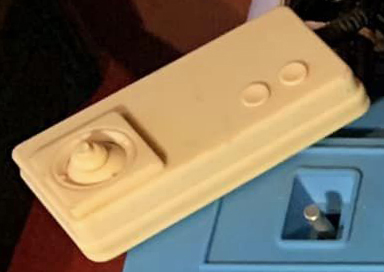 |
(unknown) From Argentina. |
|
|
|
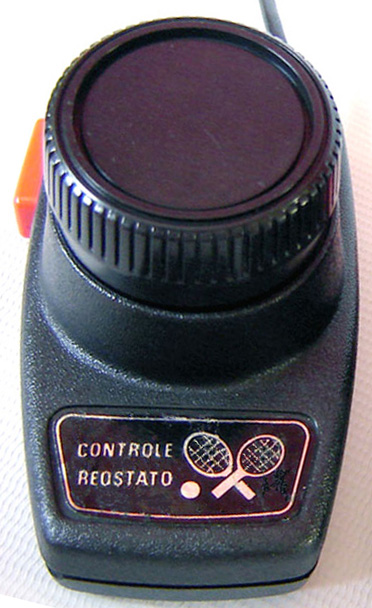 |
Atari Electronica LTDA Controle Reostato Knockoff of Atari's standard VCS CX30 paddle. |
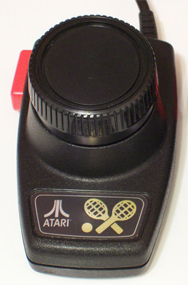 |
Atari Paddle Controllers - CX30-04 Standard paddle controller that used a potentiometer and a microswitch for the fire button. These were manufactured in pairs, with both controllers being connected to a single plug. The controllers are durable, but the pots require periodic cleaning. 2 different versions exist. The original version released in 1977 has a different label with the Atari name and logo next to large tennis rackets. The product number is also different (CX30-04). Retail price $21.95. |
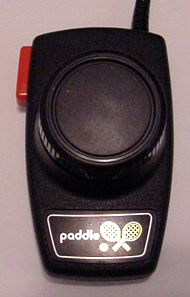 |
Atari Paddle Controllers - CX30 Released in 1978, this is identical to the original version except the label has "paddle" in place of the Atari name and logo, with slightly smaller tennis rackets. The model is also shorter (CX30). Retail price $21.95. |
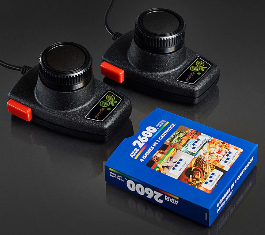 |
Atari Paddle
Controllers - CX30+ Paddle Controller Bundle New version of Atari's original CX30 paddle controllers. Includes the 4-in-1 cartridge. Retail price $39.99. |
 |
Coleco Dual Command Combination joystick+paddle. Description: "Advanced Controller Set with Built-in Joystick & Paddle. Now your customers can play all Atari 2600 VCS compatible games requiring joystick or paddle with one set of controllers. The DUAL COMMAND controllers were designed with a responsive, omni-directional joystick and side-mounted fire buttons, plus a rotary paddle control. These inexpensive high-quality controllers plug right into the control ports of the Atari 2600 VCS, or ColecoVision Expansion Module #1. They're also original equipment replacements for Coleco's Gemini Video Game System. To switch from joystick to paddle, just use the included Wye connector. The DUAL COMMAND controllers offer improved control at a price that's right!" Using the Y cable doesn't switch between joystick and paddle, but simply allows 2 or more players to play paddle games using these controllers. You also can't use it as a joystick with the Y cable, since it's missing the left, right, and fire button lines. |
 |
Coleco Gemini Video Game System Combination joystick+paddle. |
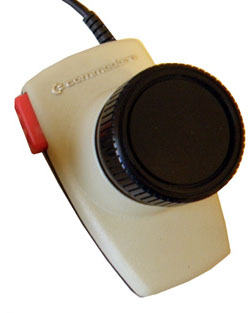 |
Commodore VIC-20 Paddle - 1312 Identical to Atari's paddles except the top-half of the controller shell is white and there's no sticker below the knob (or an indentation for it); instead, "Commodore" appears in raised silver lettering above the knob. The potentiometer inside the VIC-20's paddle controllers uses a 470k-Ohm resistor while that of the Atari is 1000-Ohm. This gives the VIC-20 paddles a slightly wider "sweep" range. Although no model number was printed on the packaging for Commodore paddles, the Atari style white paddles were give the designation VIC-1312 in some product lists. The name on the box is "Paddle" (singular) although these are a set. |
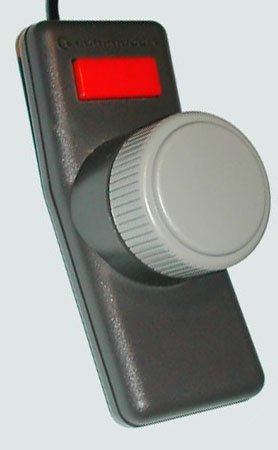 |
Commodore VIC-20 Paddles - 1341 A unique paddle with a dark gray, angled shell and a large, rectangular fire button above the knob. The knob is similar to Atari's paddle, except it's light gray. This was possibly done to match either the C16 or the C64, although the box still has the same VIC-20 styling, but the name is corrrectly plural ("Paddles"). |
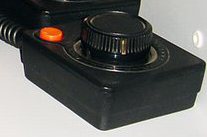
|
Dactar paddles Bundled with the Dactar and Dactar II Video Game (case) systems (link). |
 |
Digivision Robby paddle Bundled with the Digivision console. |
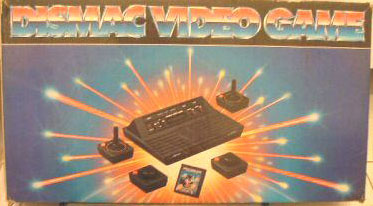 |
Dismac Packaged with Dismac's VCS/2600 clone. From the photo it appears the paddle controller uses the same shell as a standard joystick, but with a pot+knob in place of the joystick. |
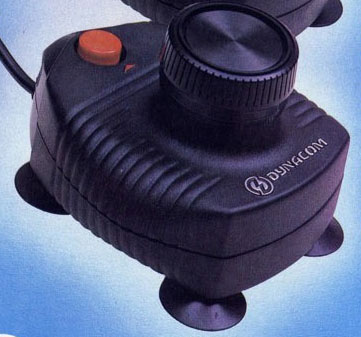 |
Dynacom Rare paddle controller that featured suction cups on the base. It was only available in Brazil. Description from ad: "The control of strong emotions. The Dynacom Paddle Controller is the only unique rotary controller for video games that allows precise and highly reliable shots. The Paddle Controller can be used in Dynavision and other games compatible with the Atari system. To ensure strong emotions with your Paddle Controller, the following games are already available." |
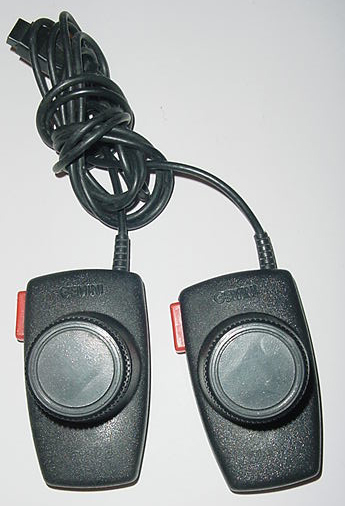
|
Gemini Paddle Controllers Identical to Atari's paddles, except there's no sticker below the knob (or an indentation for it); instead, "GEMINI" appears in raised lettering above the knob. "MADE IN TAIWAN" is molded in raised letters on the bottom. |
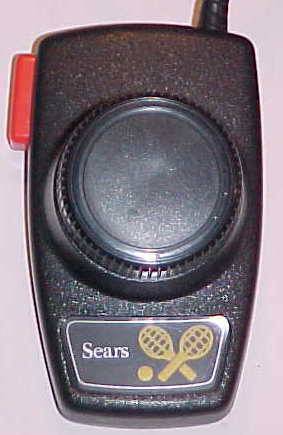 |
Sears Standard Controllers - CX30 Made by Atari for the Sears Tele-Games Video Arcade system. Identical to Atari's paddles except for the packaging and label. |
 |
Sears Video Arcade II joystick/paddle Made by Atari for the Sears Tele-Games Video Arcade II system. They sold them with their 2800 system. Sold as a pair and featuring combination joystick+paddle controls. |
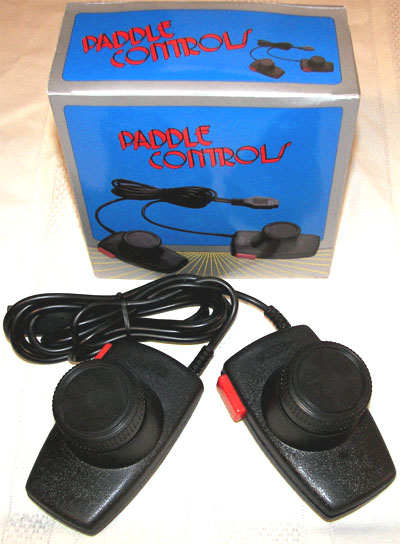 |
Telegames Paddle Controls Nearly-identical to Atari's paddles, except there's no sticker below the knob (or an indentation for it); instead, "PADDLE" appears above the knob in raised lettering. |
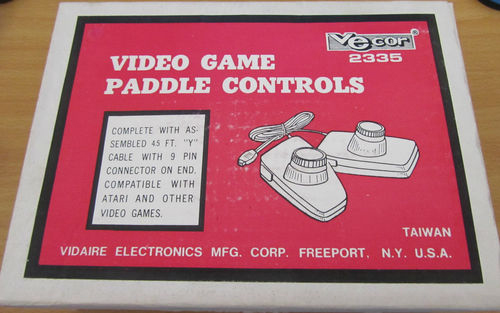
|
Vecor Video Game Paddle Controls - 2335 Nearly-identical to Atari's paddles, except there's a gold sticker with black lettering with "PADDLE" across the top. |
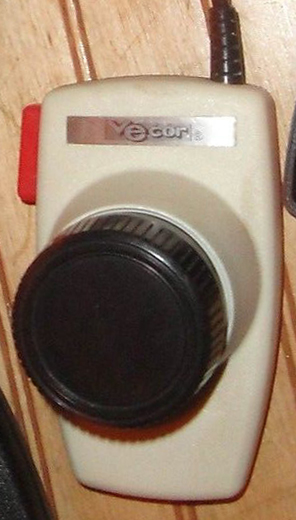
|
Vecor Paddle Controllers Nearly-identical to Atari's paddles, except with a white case and a sticker with "Vecor" across the top. Another set has been found with simply "PADDLE" on the sticker. |
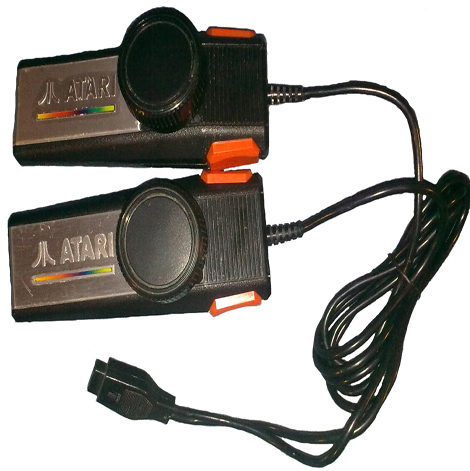 |
Video 61 CX-30 Evolved Nothing more than a hacked set of paddles that use the shells from Atari's CX24 Pro-Line joysticks. Retail price $39.95. |
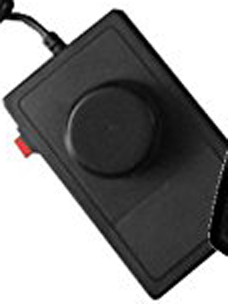 |
(manufacturer
unknown) ProPaddle Sold in Germany and probably manufactured in China. |
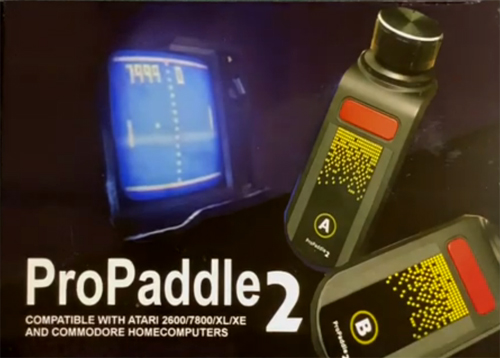
|
(manufacturer
unknown) ProPaddle2 Sold in Germany and probably manufactured in China. |
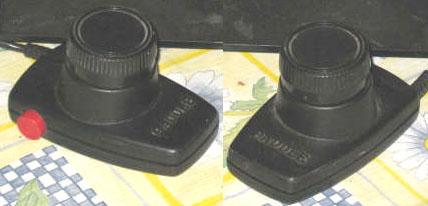 |
(unknown) Nearly-identical to Atari's paddles, except for having round fire buttons, and instead of where the sticker would be (below the knob), "PADDLE" appears in large, raised lettering. |
 |
(unknown) Nearly-identical to Atari's paddles, except having "PADDLE" in large, raised lettering above the knob. The box also says "JOYSTICK CONTROLLERS". The bottom is marked "MADE IN TAIWAN R.O.C." |
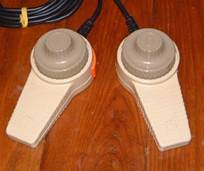 |
(unknown) White with gray knobs, with what appears to be a right-handed fire button. |
|
|
|
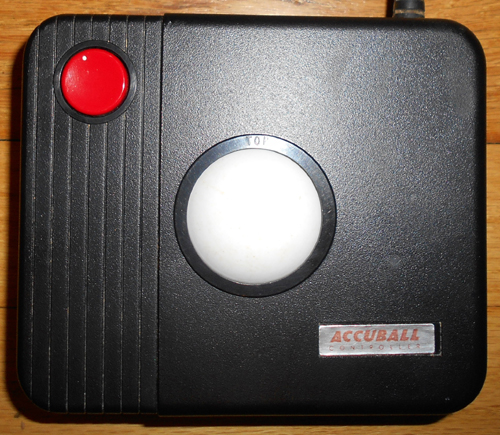
|
Accu Company Accuball
Rather uncommon trak-ball controller. |
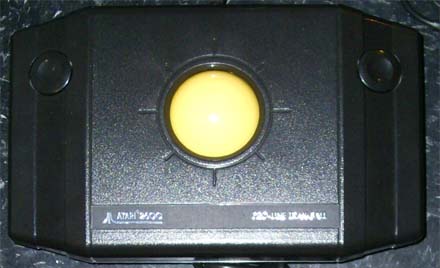
|
Atari Trak-Ball - CX22 One of Atari's "Pro-Line" Advanced Controllers. This was announced in the Jan/Feb '83 issue of the Atari Age as due out by that summer, and a company flyer notes it was "coming in June '83"; the May/June '83 issue of the Atari Age noted it would be available in July for $44.95. The original version has a white ball, round fire buttons, and an all-black case and includes "Pro-Line" in the name on the top. Although the case has a hole and markings on the left side for a Trak-Ball/joystick mode switch, the pcb design doesn't support it (and the hole is covered up). The 2nd version has a white base (and no "Pro-Line" text on top) and the pcb has the mode switch. Since Atari never released a VCS game that actually supported a true Trak-Ball (i.e. analog) mode, the controller simulates analog movement by pulsing the digital signals. Designed by Dan Kramer and Levon Mitchell. Early case designs were done by Tom Palecki. The switchless variants were made in El Paso, TX while the switched variants were made in Mexico. Known serial numbers would indicate there were less than 15,000 of the switchless variants made. Both variants might have been released at the same time, and the El Paso, TX plant was closed sometime between April - September 1983, which would explain the low number of the switchless variants, whereas at least close to 200,000 of the switched variant were made. |
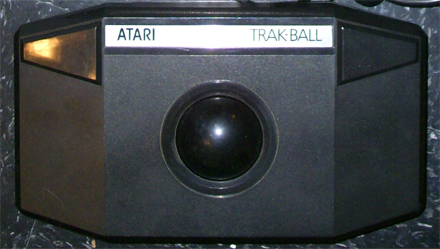 |
Atari Trak-Ball - CX80 Redesigned "XL-style" model (black ball, triangular fire buttons). The mode switch is now on the back and is marked "JS" (for joystick) and "TB" (for Trak-Ball). Note that there are 2 different (internal) versions of this model as well - the 1st is compatible with the CX-22 (and offers simulated Trak-Ball movement); the 2nd is compatible with the Atari ST mouse (some jumpers were added to the board inside). The only way to tell which version you have is to either try it, or open it up and look for the jumpers. Since Atari never released a VCS game that actually supported a true Trak-Ball (i.e. analog) mode, the controller operates the same as a joystick. Designed by Dan Kramer, Levon Mitchell, and Barry Marshall. The case was designed by Tom Palecki. |
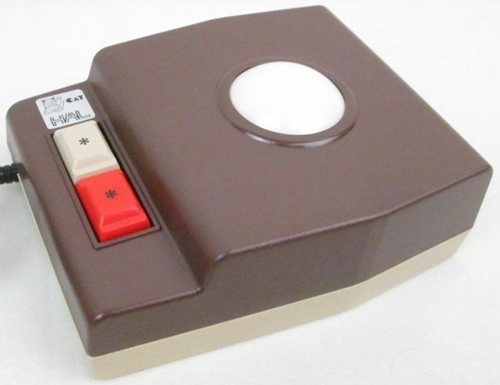 |
HAL
Cat Track-Ball - HTC-001 Marketed for use with the MSX HX-10 computer. Included a cassette program, "Eddy". Whether or not this is compatible with the Atari systems is unknown. |
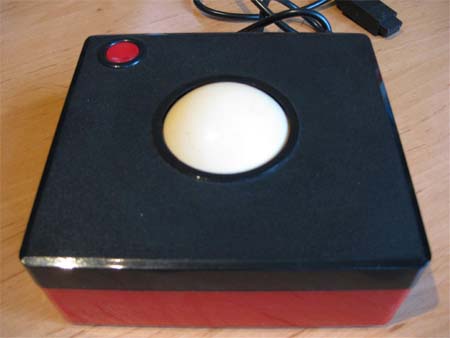 |
Marjac Joyball Trackball Action Controller Looks nearly-identical to the Wico Trackball, except for the lack of raised lettering and higher edging around the fire button. |
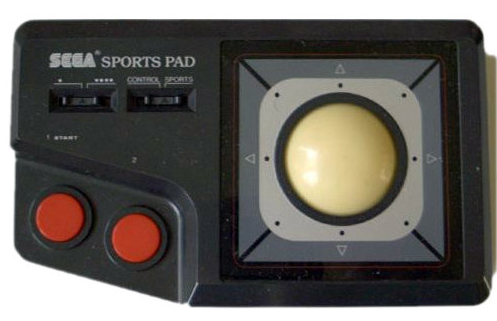
|
Sega Sports Pad 2 versions exist. One has a switch for selecting between Sega Sports Pad mode and joystick mode. When in joystick mode, it works with Atari games in place of standard joystick. When in Sports Pad mode, if offers simulated analog control. |
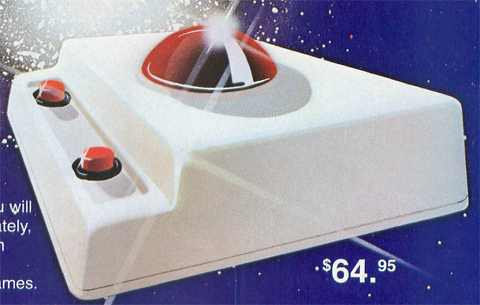
|
TG Products Track Ball Controller AKA Trak Ball Controller- TB-600 Announced at the Winter 1983 CES and shown at the Summer 1983 CES, but apparently never released. According to company literature, their trackball controller was modeled after the $1,200 trackballs used to train U.S. astronauts. Ted Gilliam, founder and president of TG Products, said his company planned to market many other new products during 1983 (InfoWorld, February 14th, 1983, pg. 28); one, he said, will be "a totally revolutionary joystick" designed to fit Atari joystick-compatible computers and video game systems. The April 11th, 1983 issue of InfoWorld (pg. 26) has an article and a review of the prototype track ball controller, which only had 1 button. The October 1983 issue of Electronic Games is the only publication that stated a different product number (TTB-800) and said it has a pair of action buttons. It also mentioned TG made a version for the Apple II and IBM PC with 3 fire buttons. The April 1984 issue of Computer Games (pg. 9) mentioned TG Products shelved their plans to release Atari-compatible trackball controllers but had released the Apple II and IBM PC models. Retail price $64.95. |
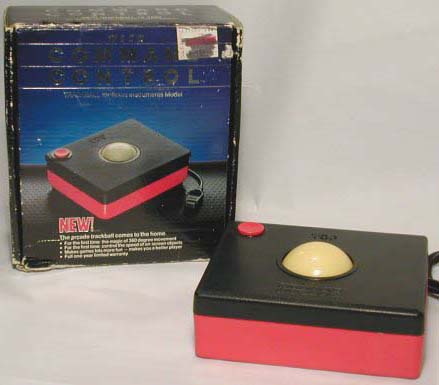 |
Wico Trackball - 72-4545 One of their 'Command Control' series of controllers. This doesn't output true analog signals, only simulated analog controls, which are inferior to Atari's CX22. Retail price $69.95. |
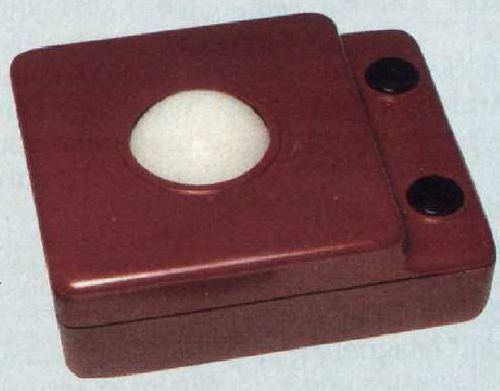 |
Zircon International Track-Ball A red-cased controller that offers dual fire buttons (for both right and left-handed players) and variable auto-fire. A prototype was shown in the November 1983 issue of Electronic Fun (pg. 6). The October 1983 issue of Video Games (pg. 36) mentioned it was the lowest-priced trackball controller at the Summer CES show at $29.95. The April 1984 issue of Computer Games (pg. 9) mentioned Zircon shelved their plans to release Atari-compatible trackball controllers. |
|
|
|
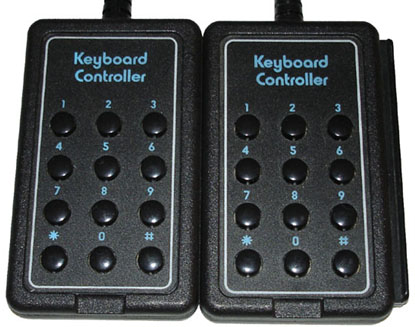 |
Atari Keyboard Controller - CX50 For use with the BASIC Programming cartridge and a few others. |
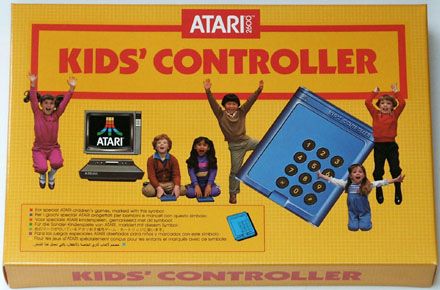
|
Atari Kids' Controller - CX23 An oversized keypad controller similar in function to the Keyboard Controller and Video Touch Pad. Designed for use with the Children's Television Workshop (CCW) games. It seems someone in Atari's marketing department forgot a basic rule of grammar in regards to plural possessive - specifically on using an apostrophe correctly in plural nouns. Early marketing had the name spelled correctly (Kids') but the released version doesn't (Kid's). |
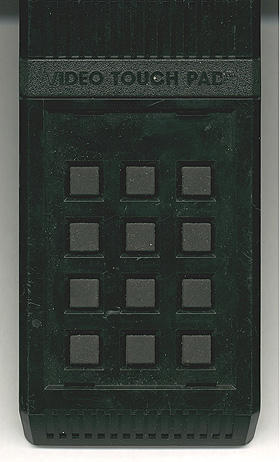 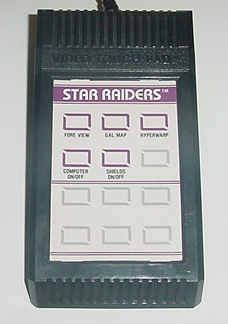 |
Atari Video Touch Pad - CX21 Redesigned keyboard controller that was included with Star Raiders. This is the only game with an overlay specifically designed for this controller. Retail price $21.95. |
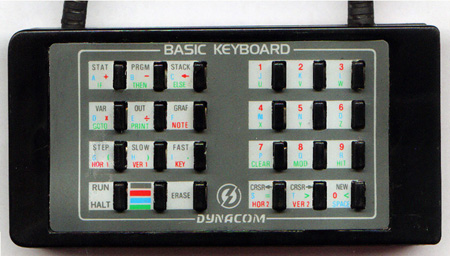 |
Dynacom Basic Keyboard |
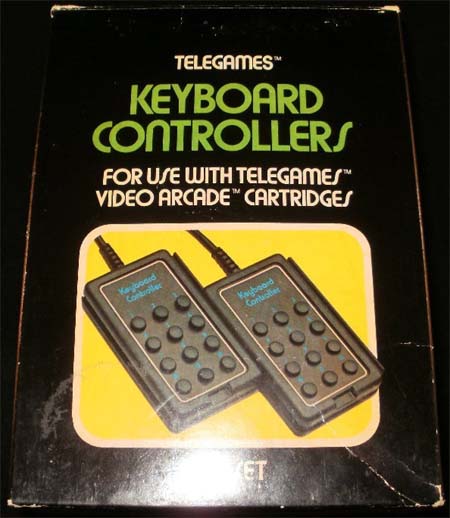 |
Sears Tele-Games Keyboard Controllers - CX50 Identical to Atari's Keyboard Controller. |
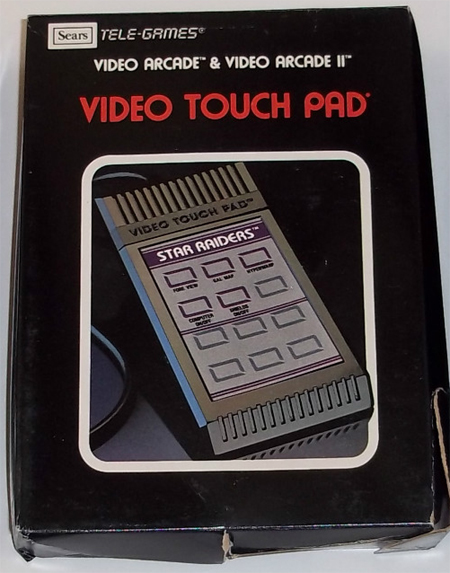 |
Sears Tele-Games Video Touch Pad - CX21 Identical to Atari's Video Touch Pad. |
|
|
|
| Accu-Tech Products Accu-Play Control Board Mentioned in the October 1982 issue of Creative Computing (pg. 209). Retail price $29.95. |
|
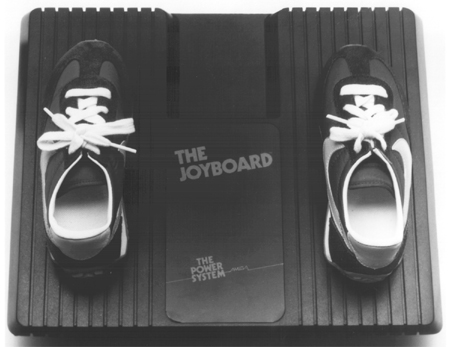 |
Amiga Joyboard - 3120 The full name for this was The Joyboard Power Body Controller. It's a large, flat, black board with red lettering that you stand on to control your games. By rocking back and forth and side-to-side, you simulate the joystick motions. An additional port in the Joyboard allows you to plug in a stick for use with games that need a button. Packaged with Mogul Maniac. |
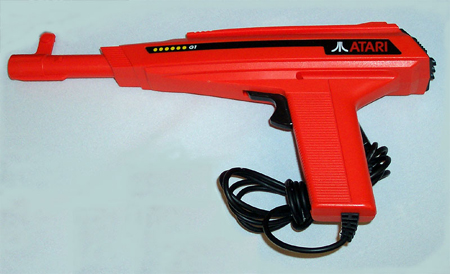 |
Atari
G1 Light Gun - G1 Identical to the XE Light gun, other than being red with black. This variation was meant for the 2600 and 7800 systems, but it never went into production, and only a handful of prototypes exist. |
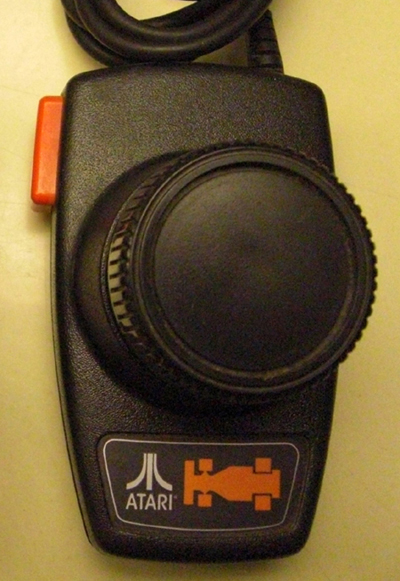 |
Atari Driving Controllers - CX20-01 Packaged with the game Indy 500/Race, which was the only game to officially support it, although a few homebrew games do as well (Stell-A-Sketch, Stella's Stocking, and Thrust Plus: Driving Controller Edition). 2 different versions exist. The original version released in 1977 has a label with the Atari name and logo next a large Indy car. A few homebrew games also support it (Stell-A-Sketch, Stella's Stocking, and Thrust Plus: Driving Controller Edition). Retail price $21.95/pair. |
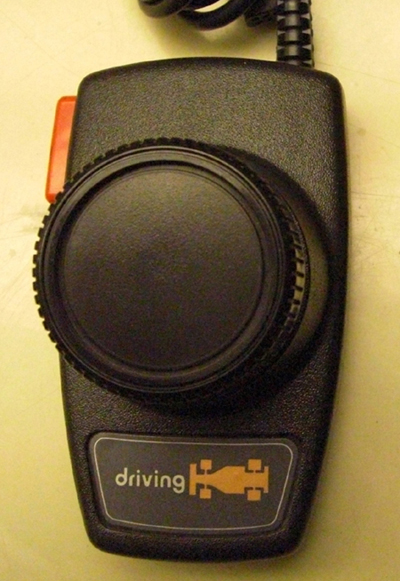 |
Atari Driving Controllers - CX20 Released in 1978, this is identical to the original version except the label has "driving" in place of the Atari name and logo, with a slightly smaller Indy car. Retail price $21.95/pair. |
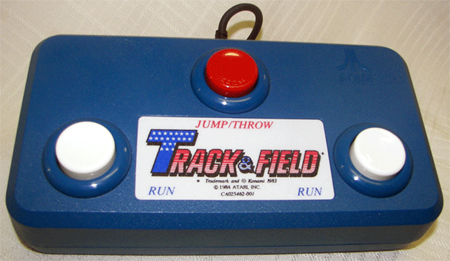 |
Atari Track & Field Controller - CA025462-001 Designed by Wico. Packaged with the Track & Field cartridge. Also works well with Activision's Decathlon, as well as any "slide and shoot" games like Space Invaders. |
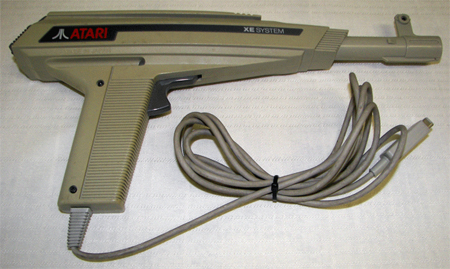 |
Atari
XE Light Gun - XG-1 Packaged with the XE Game System along with the Bug Hunt cartridge. This gun is also compatible with a handful of games on the Atari 7800 and a single game on the 2600 (Sentinel). The box has photos of a red-colored gun, which was originally intended for the 2600/7800 version. Atari simply repurposed the boxes for overseas releases!. |
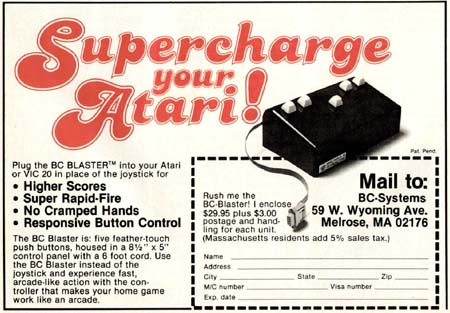
|
BC-Systems BC Blaster An all-button controller with an Asteroids-style layout and "Super Rapid-Fire". Advertised in magazines for $29.95. |
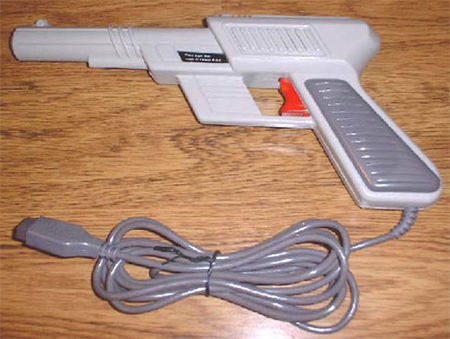 |
Best Electronics The Best Atari Light Gun |
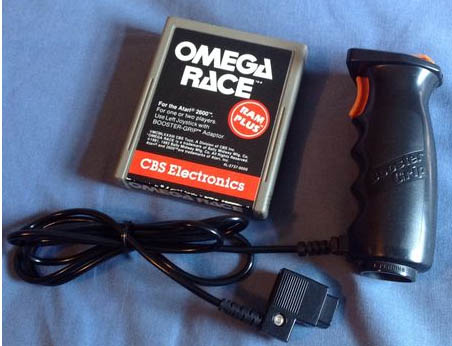 |
CBS Games Booster Grip Packaged with Omega Race, this attachment adds an additional fire button to a standard Atari 2600 joystick. It fits over the joystick and has a cable with an inline connector on it; you plug the joystick into one end, and the other end plugs into the system. The trigger button is wired up to the Paddle A line (pin 5) and the +5v (pin 7). This becomes your fire button. The other 2 buttons are for thrust. |
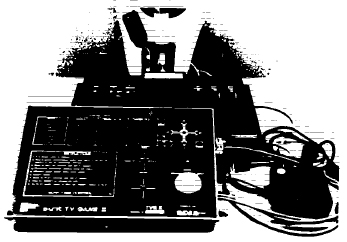 |
DU-IT Control Systems
Group TV Game-2 An adaptive device that allows the user to perform the functions of a VCS console using the controls of a DU-IT, DLT, DLT-X, or MCB wheelchair-based control system. Retail price $620. |
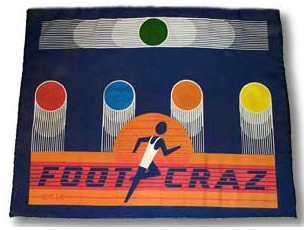 |
Exus Foot Craz Packaged with the games Video Jogger and Video Reflex. |
| Garden & Green Co. Video Fitness System A specially-designed joystick controller for use while exercising, and included a list of recommended games to use. The controller has a switch for either single or double fire. The company was based in Berwyn, IL, and had a patent pending for this. From a brochure: "Put real meaning into the time you spend video-gaming. And put your computer/video game equipment to the best use yet: your personal fitness and health. Video Fitness System lets your body "talk" to computers to control the action on the screen. Your body will reward you by getting into the shape you've always wanted. You can use VFS with almost any game cartridge that gives you a thrill." Suggested retail price was $79.90. |
|
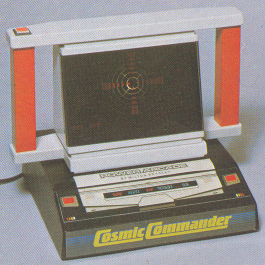 |
Milton Bradley Cosmic Commander - 4362 Packaged with the game Survival Run. It's nothing more than a glorified joystick controller, and not a very good one. Difficult to find, especially in working condition. |
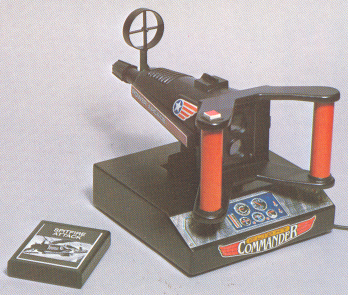 |
Milton Bradley Flight Commander - 4363 Packaged with the game Spitfire Attack. It's nothing more than a glorified joystick controller, and not a very good one. Difficult to find, especially in working condition. |
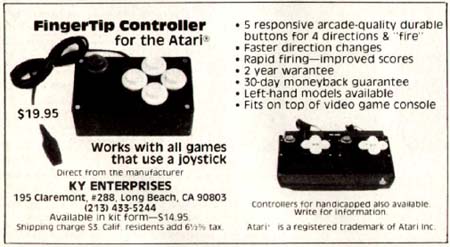
|
KY Enterprises FingerTip Controller Similar to the Starplex but more cheaply built. Came with a 2-year warranty. Retail price $19.95. A Colecovision model was also made, and retailed for $22.95. |
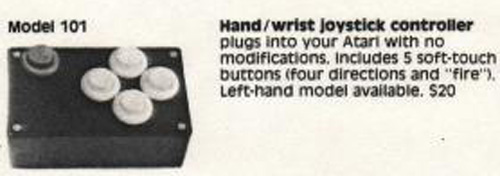 |
KY Enterprises Hand/Wrist Joystick Controller - 101 Controller designed for the disabled. Same as the FingerTip Controller. Retail price $20. |
 |
KY Enterprises Hand/Wrist Joystick Controller - 102 Controller designed for the disabled. Similar to the FingerTip Controller except that it includes paddle, Select, and Reset controls. A left-handed model was also available. Retail price $45. |
 |
KY Enterprises Head Switch - 105 Controller designed for the disabled. Retail price $30. |
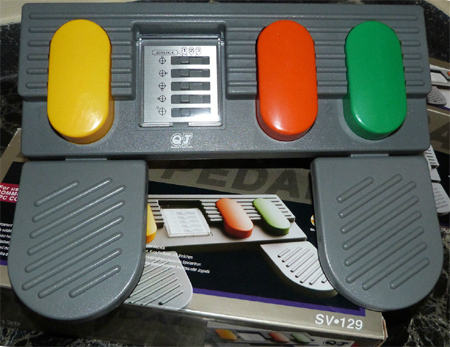 |
QJ (QuickJoy) Quality Joystick Footpedal - SV-129 Connects between the system and the joystick/joypad. You select which joystick movements (up to 3) are made by the pedal by configuring the appropriate switches on the pedal. |
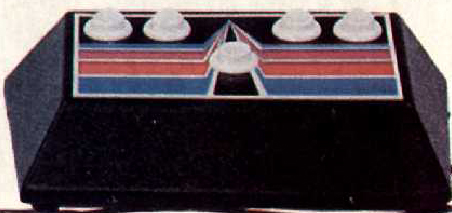 |
Quest Industries Inc. Questar I Button Console - QC-I Features leafswitch button controller with an Asteroids-style layout. Retail price $34.95. |
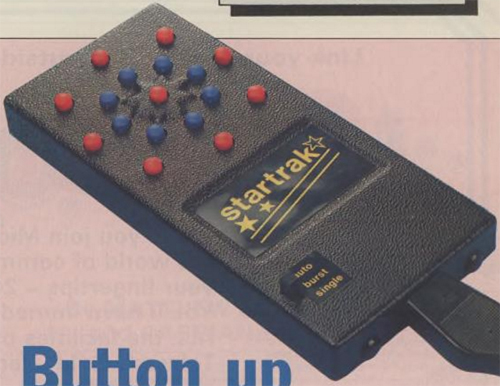 |
R.H. Design - Star Trak An all-button controller that features auto-fire and "burst-fire". Retail price £18.85. |
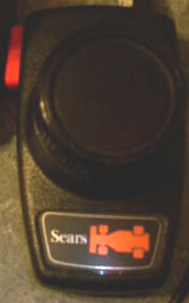 |
Sears Driving Controllers - CX20-01 Made by Atari for the Sears Tele-Games Video Arcade system and packaged with the Race game. Identical to Atari's paddles except for the packaging and label. |
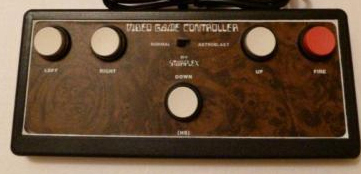
|
Starplex Electronics, Inc. Video Game Controller/Deluxe Video Game Controller An all-button controller with an Asteroids-style layout. The controller is very responsive and works great for Asteroids and Space Invaders (like they are in the arcade). It also has a switch which selects between Normal and Astroblast (auto-fire). On the back there is a panel to insert a AA battery, which is needed for auto-fire (why it doesn't simply use the +5v controller pin from the console, we don't know). Some boxes show a silver overlay (with the name "Starplex Controller") which does exist, but the wood grain version (with the name "Video Game Controller") is more common. Retail price $29.95. |
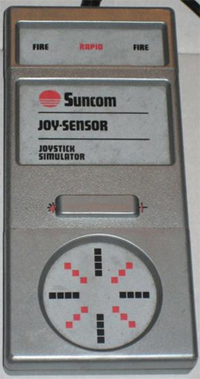 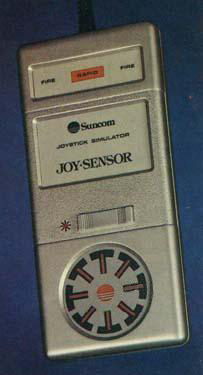 |
Suncom Joy-Sensor Joystick Simulator This controller somewhat resembles an Intellivision controller, but there isn't actually a disc at the bottom. Instead, a sensor "reads" your finger and responds accordingly onscreen. 2 different versions exist, but the differences appear cosmetic. Suncom revived this design in the 16-bit era with the "Turbo Touch 360" controller. Retail price $34.95. |
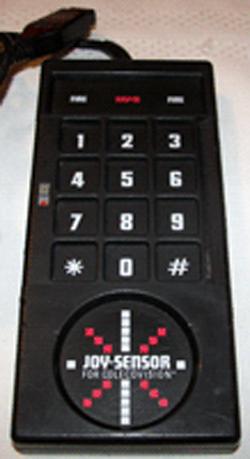 |
Suncom Joy-Sensor for Colecovision |
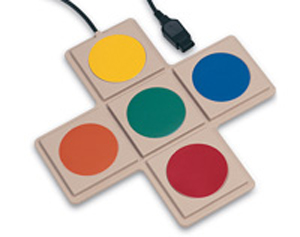 |
Tash button controller Large button controller in the shape of a D-pad. Designed for use by handicap persons. Also sold by Turning Point, and in the U.K. by Tech Cess. |
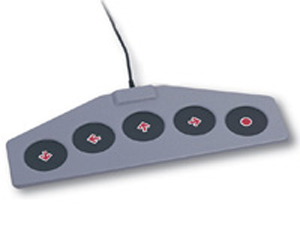 |
Tash button controller Button controller in the shape of a wing. Designed for use by handicap persons. Also sold by Turning Point, and in the U.K. by Tech Cess. |
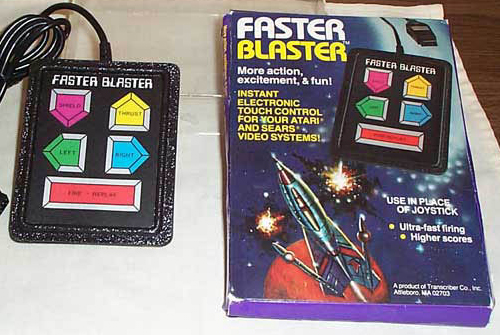 |
Transcriber Co. Faster Blaster An unusual keypad-type controller with 5 buttons (shield, thrust, left, right, and fire-replay). Sold for less than $15. |
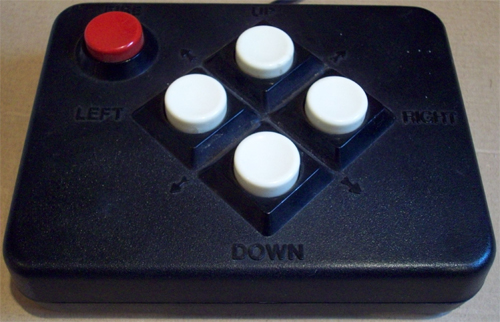 |
Wico button controller A rare 5-button controller. |
|
|
|
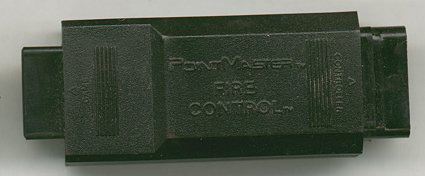
|
Discwasher PointMaster Fire Control Rapid-fire module that connects between the joystick and the console and operates at a pre-set rate. Retail price $9.94. |
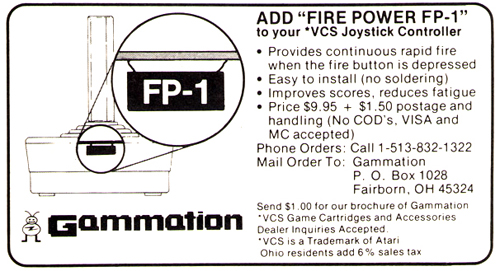 |
Gammation Fire Power Rapid-fire module that connects between the joystick and the console and operates at a pre-set rate. |
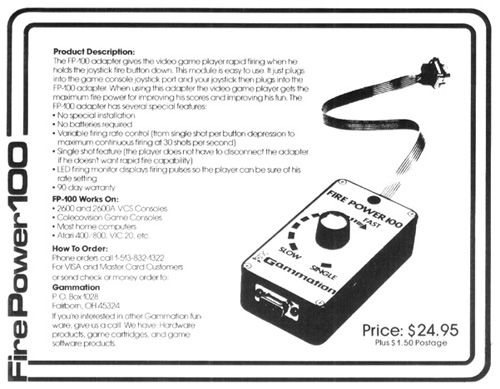 |
Gammation Fire Power 100 Allows variable rates of rapid fire by adjusting a potentiometer. |
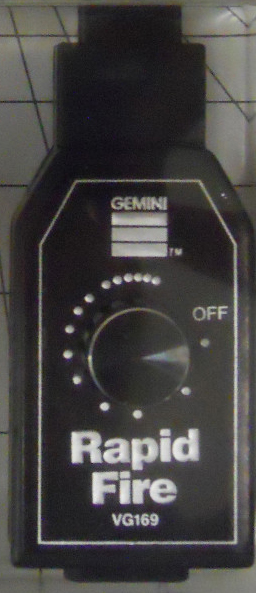 |
Gemini Rapid Fire - VG169 Allows variable rates of rapid fire by adjusting a potentiometer. Looks like a knock-off of Questar's Blaster module. These were selling for $2.99 at Kay-Bee Toys. |
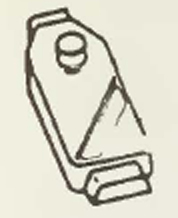 |
Newport Controls Prostick
Accelerator Allows variable rates of rapid fire by adjusting a potentiometer. |
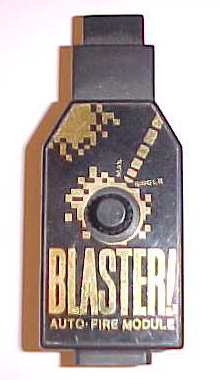
|
Quest Industries Inc. Blaster! Auto-Fire Module - QC-110 Same as Quest Star Blaster, just in a redesigned case. Retail price $12.95. |
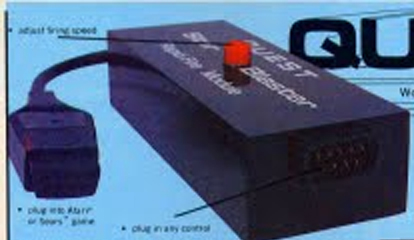 |
Quest Industries Inc. Quest Star Blaster Allows variable rates of rapid fire by adjusting a potentiometer. Advertised for 14.95. |
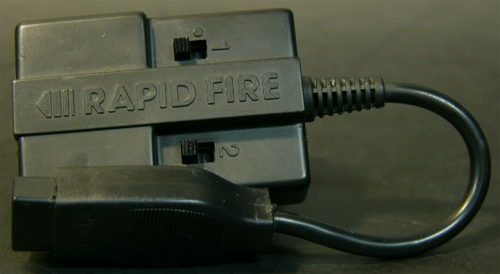 |
Sega Rapid Fire Unit - RF-150 Also known as the Rapid Fire in Brazil. The switches control the 2 fire buttons found on Sega controllers. In North America this unit was offered by Sega via their early "Team Sega" newsletters. Buying three games would get you a rapid fire unit, though it was also available to purchase separately in stores. It was also packaged with Sega's Control Stick under the name "Rapid Fire Control Stick". |
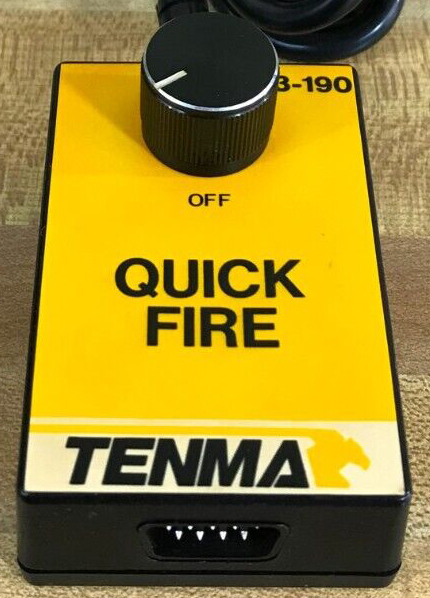 |
Tenma
Quick Fire
- 83-190 Allows variable rates of rapid fire by adjusting a potentiometer. |
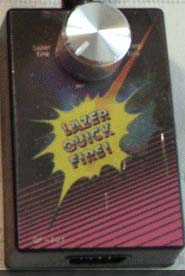
|
Texas Hi Tech, Inc. Lazer Quick Fire!
- QF-201 Allows variable rates of rapid fire by adjusting a potentiometer. |
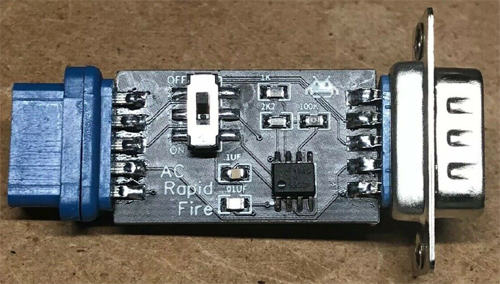 |
(manufacturer unknown)
AC Rapid Fire Adapter Recent 'homebrew' effort. Currently sold on Ebay. |
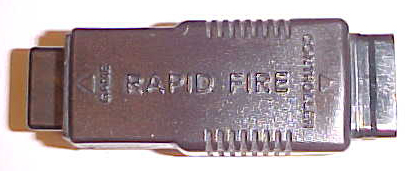
|
RGA International Rapid Fire
- RGA-1190 Rapid-fire module that connects between the joystick and the console and operates at a pre-set rate. Looks like a knock-off of Discwasher's PointMaster Fire Control module. Made in Hong Kong. |
|
|
|
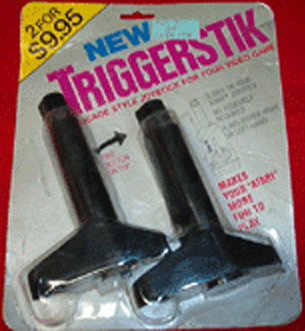
|
Alpha Triggerstik (pair) Originally sold as a pair. This slid over a standard Atari joystick and featured a fire button on top which pressed the existing fire button. Retail price $9.95 |
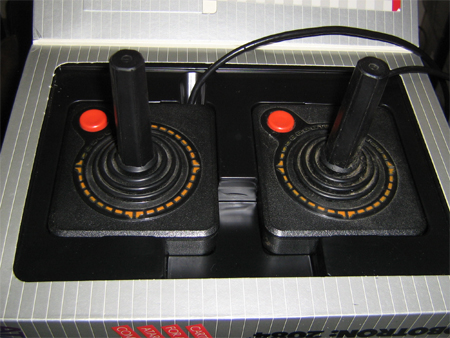 |
Atari Robotron joystick coupler Originally packaged in a large box that opened to reveal a built-in controller holder that held 2 joysticks together in an attempt to simulate the arcade experience. |
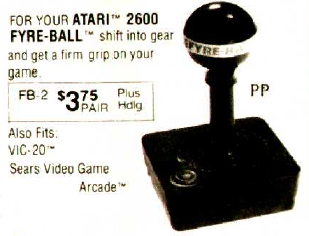 |
C&T Creations Fyre-Ball FB-2 (pair) Same as those made by Pusher. Retail price $3.75. |
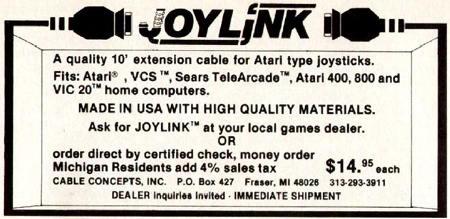 |
Cable Concepts, Inc. Joylink 10' joystick extension cable. Retail price $14.95. |
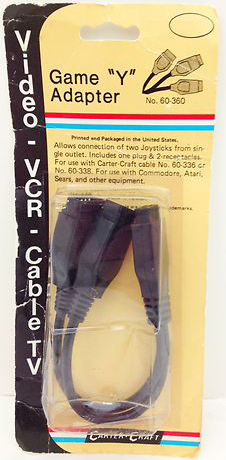 |
Carter-Craft Game "Y" Adapter Allows 2 joysticks to be connected to 1 controller port. |
| CBS Games
The Grabber (pair) Sold as a pair. Same as those made by Pusher. |
|
| CBS Games Joystick Stand | |
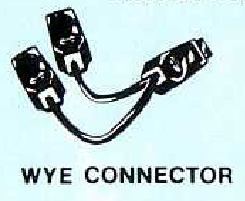
|
Coleco Gemini Dual
Command Wye Connector Since the system only has 2 controller ports, a set of Y adapters were included to allow 2 of the combo controllers to share one port (for paddle games with 2 or more players). The CBS system (which is a relabeled Gemini) also used these. Note that you can't use a joystick with these since they're missing the left, right, and fire button lines. |
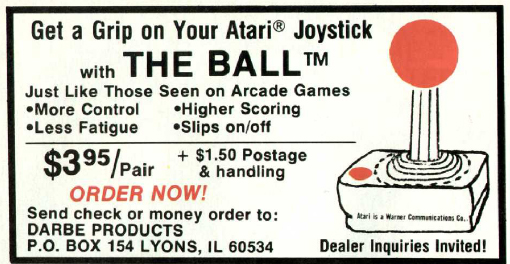 |
Darbe Products The Ball Sold as a pair. Same as those made by Pusher. Retail Price $3.95. |
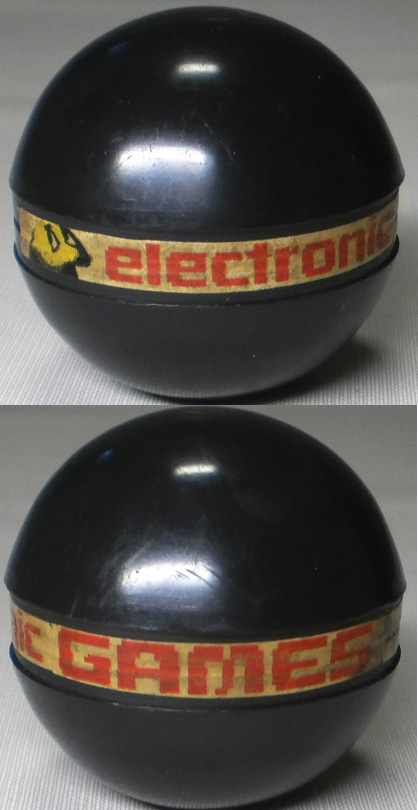 |
Electronic Games (manufacturer unknown) Look identical to those made by Pusher (and probably made by them). This was an advertising item for a video game store in Brazil called Electronic GAMES. |
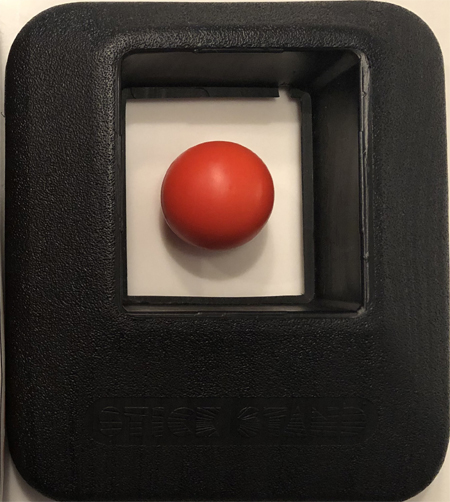
|
Gamemaster Corp. Stick Stand Similar to Kay Enterprises' Stick Stand, but the base is different. Also includes a red joystick knob. |
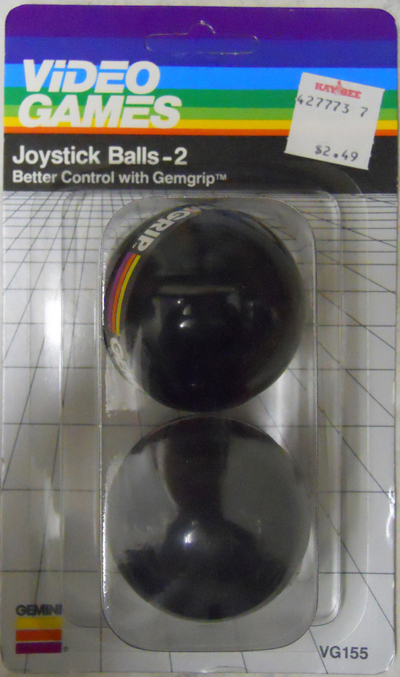 |
Gemini Gemgrip Joystick Balls Sold as a pair. Same as those made by Pusher. |
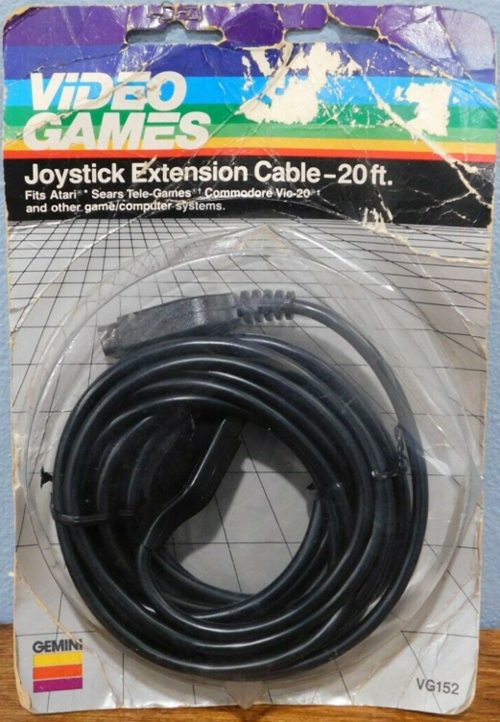 |
Gemini
Joystick Extension Cable -
VG152 20' extension cable. |
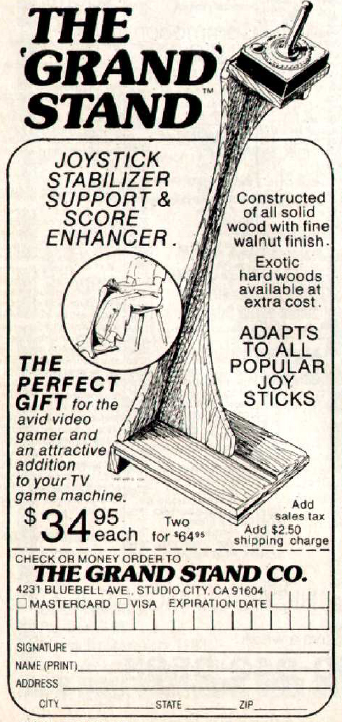
|
The Grand Stand Company The 'Grand' Stand Advertised as a "joystick stabilizer support and score enhancer". Made of walnut. Controllers had to be screwed to the base. Retail price $34.95 each or 2 for $64.95. |
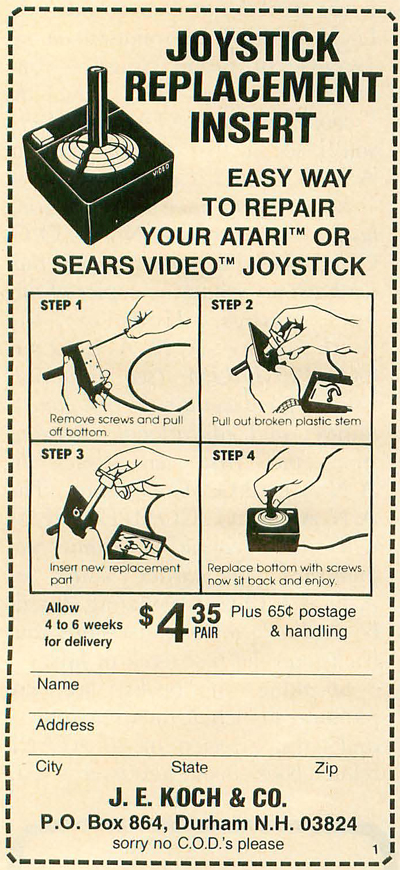 |
J. E. Koch & Co. Joystick Replacement Insert Replacement plastic insert for Atari standard joystick controllers. Retail price $4.35. |
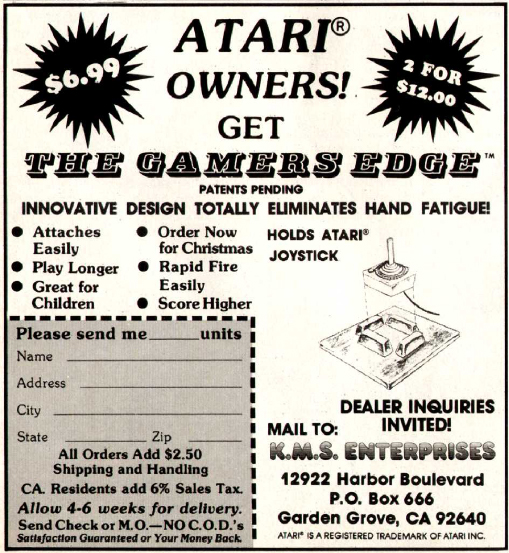 |
K.M.S. Enterprises The Gamers Edge An attachment for Atari Standard joysticks that provides a wider base. Retail price $6.99 or $12 for 2. |
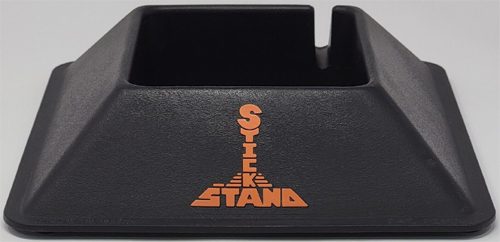
|
Kay Enterprises Stick Stand For standard Atari joystick controllers. Includes Fastball Easy-Grip Control Knob. |
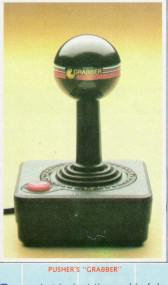 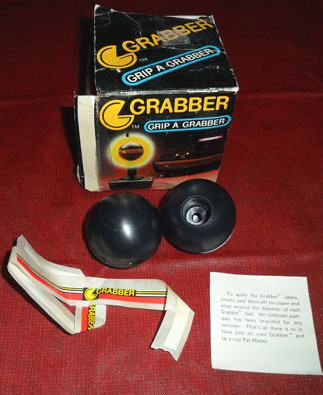 |
Pusher Sales
The Grabber (pair) Not as unpleasant as the name suggests - this accessory merely attaches to the top of a standard stick and turns it into an "arcade"-like controller. The company went by the trademarked name Push-A-Matic in their ads. Retail price $3.75. |
| Questar Joy Stick Reducer A reverse 'Y' cable that allows 1 joystick to be connected to 2 controller ports. |
|
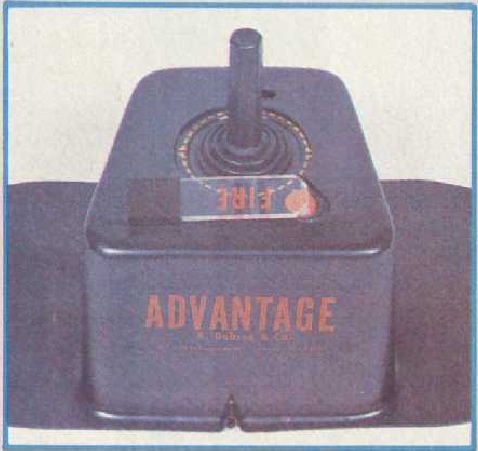 |
R. Dobson & Co. The Advantage A plastic holder that you insert an Atari standard controller or similarly-sized controller into. It has flaps that you sit on, which holds the device in place. Retail price $14.95. |
 |
Recoton
Arcade joystick ball Same as Pusher's The Grabber. |
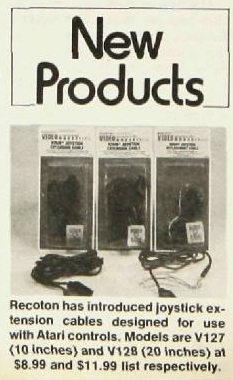 |
Recoton
Joystick extension cable The 10" model (V127) retailed for $8.99. The 20" model (V128) retailed for $11.99. |
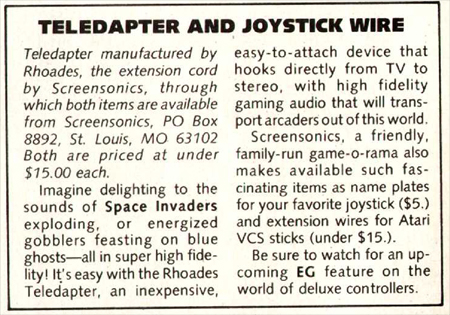 |
Screensonics
Joystick
extension cable Cliff Blake of Screensonics was based in St. Louis, MO. He apparently was the first to offer extension cords for controllers, and sold these for under $15. |
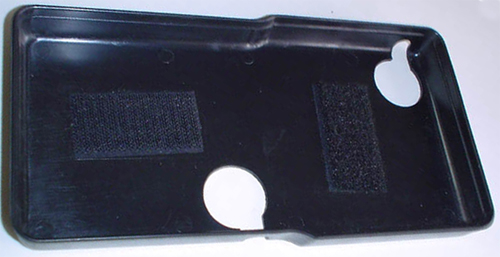 |
Sega Joystick Coupler Packaged with the game Spy Hunter to allow both joysticks to snap into one unit. |
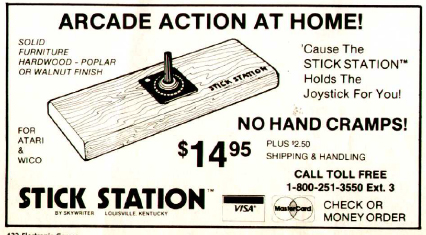
|
Skywriter Stick Station Basically a plank of wood with a hole in the center that holds a standard-size Atari joystick. A version was also sold that holds several different Wico joysticks that use the same base (Bat Handle, Boss, The Grip, etc). Sold for $14.95 and available in both poplar or walnut finish. Ok, so what's the REAL purpose of this? How does converting a handheld controller into an arcade control panel help your scores? It's not going to eliminate hand cramps and wrist fatigue, it's only going to exacerbate it. Plus, having a 3 pound board in your lap can't be all that comfortable. And I'm sure parents loved it when their little gamer used it to swat a sibling, friend, or family pet. Besides, as anyone who's been called to the principal's office will tell you, the last thing a kid wants to see is a board, especially one that's been customized to reduce airflow. Yeah, this has bad idea written all over it... or at least it should have. And if the preceding reasons weren't enough, consider paying $15 for a piece of wood with a hole in it. |
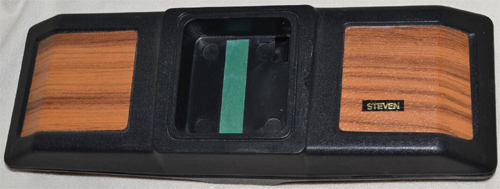
|
"Steven" Similar to the Stick Station except it's plastic. The shell can be opened for possible storage use. |
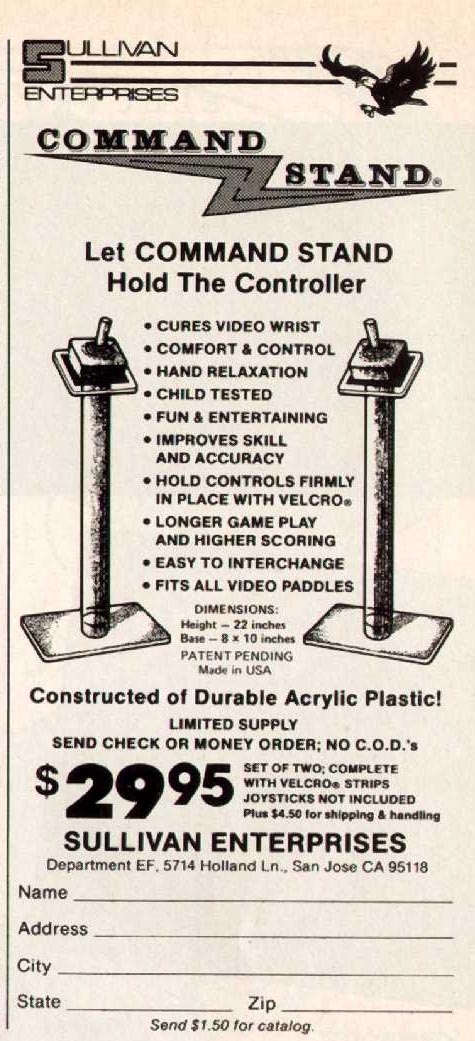 |
Sullivan Enterprises Command Stand A 22" high plastic pedestal on which you Velcro your controller. Retail price $29.95 for a set of 2. |
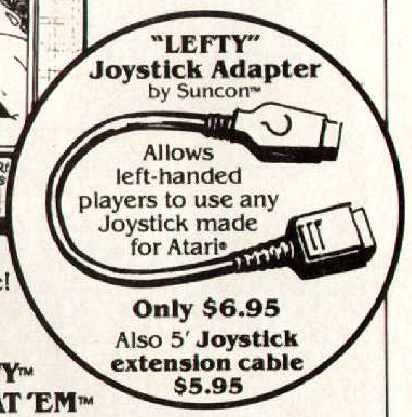
|
Suncom "Lefty" Joystick Adapter Converts joysticks to left-handed use. Retail price $6.95. Suncom 5' Joystick extension cable Retail price $5.95. |
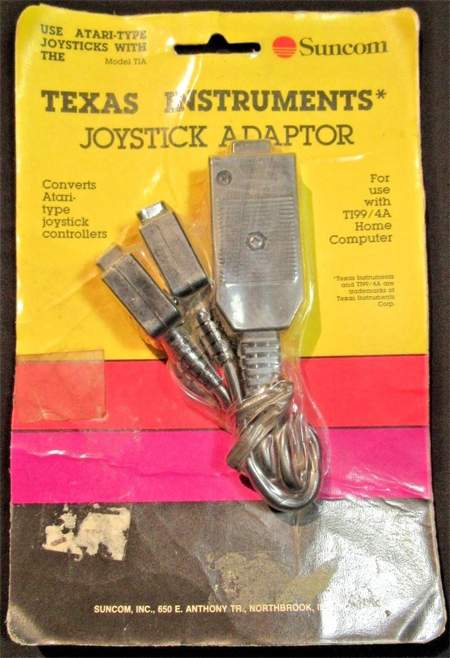 |
Suncom
Texas
Instruments Joystick
Adapter - TIA Allows Atari-compatible joysticks to be used with TI computers. Retail price $12.95. |
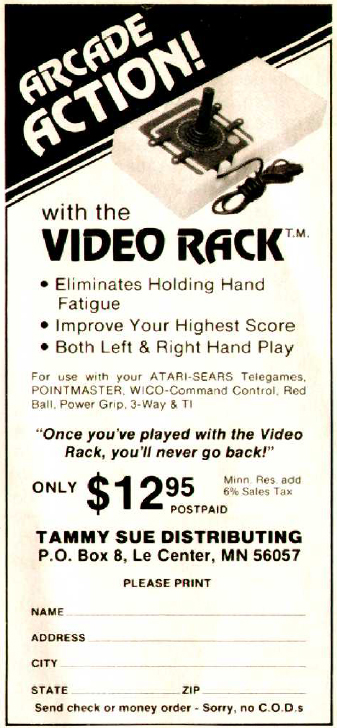
|
Tammy Sue Distributing Video Rack Similar to the Stick Station, except it has a larger hole for different controllers. Retail price originally $12.95 and later $9.95. |
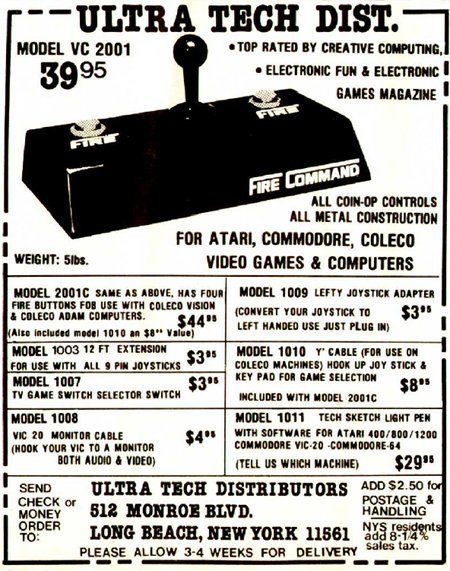 |
Ultra Tech Distributors 12' Extension - 1003 Retail price $3.95. Ultra Tech Distributors Lefty Joystick Adapter - 1009 Converts joysticks to left-handed use. Retail price $3.95. |
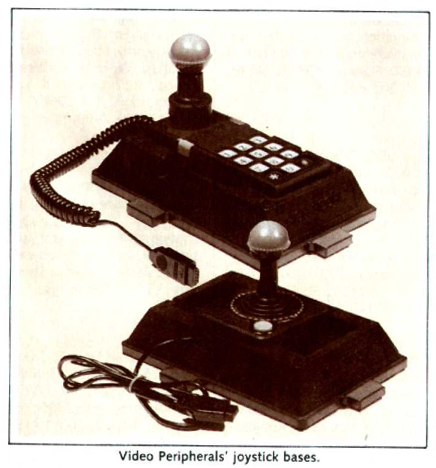 |
Video Peripherals Inc. joystick base - HS 1 and HS 2 A weighted base that holds Atari or Colecovision joysticks. Model HS 2 holds 2 controllers. Retail price $6.95. |
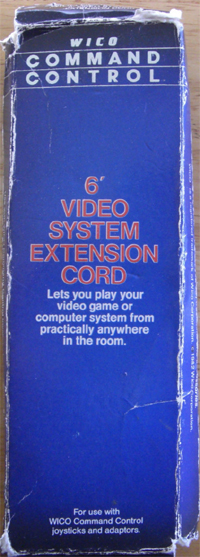 |
Wico 6' Video System Extension Cord - #15-1755 Wico 12' Video System Extension Cord - #15-1756 |
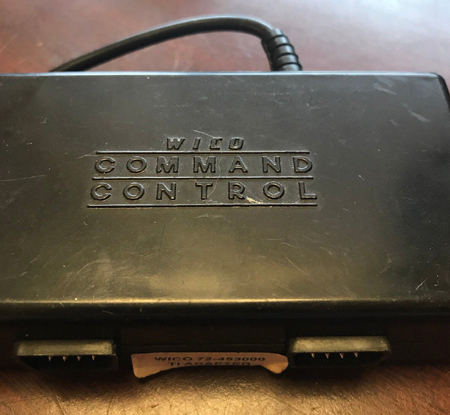 |
Wico
TI
Adapter - 72-453000 Allows Atari-compatible joysticks to be used with TI computers. |
|
(manufacturer unknown)
Racer A ball top attachment that slid over a standard Atari joystick. |
 |
(manufacturer unknown)
Sportsmen This slid over a standard Atari joystick for a different style grip. |
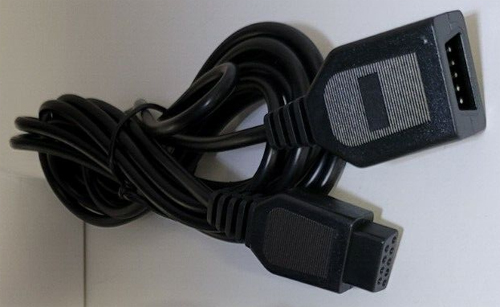 |
(manufacturer unknown) Joystick extension cable. |